WHAT IS A CLOUD?



Artist James Michalopoulos ’74 has been influenced by the colorful, confounding streets of New Orleans, and in turn has influenced them.
Coeducation reflected change in our wider society, but it also sparked it, making Bowdoin better in the process.

Metaphors serve as shortcuts to understanding—but they’re not always benign. A conversation with professors Eric Chown and Fernando Nascimento.
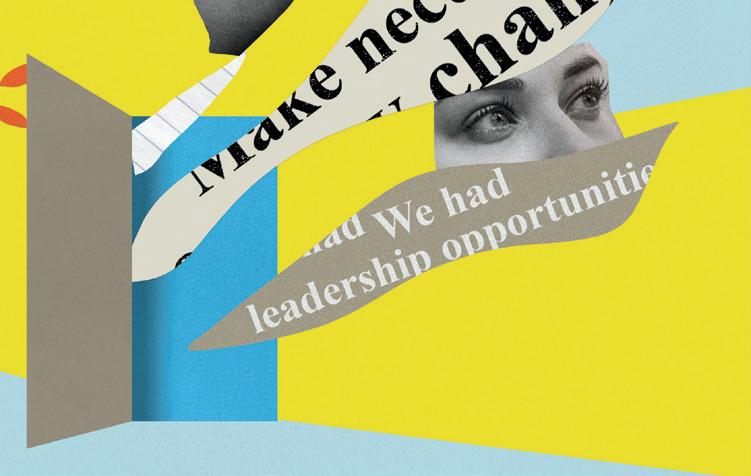

The senior vice president for development and alumni relations talks about creating a welcome space for all alumni.

5 Space for Everyone: Bridget O’Carroll ’13 creates— and represents—community.
6 Job Search to Soul Search: Bowdoin’s Sophomore Bootcamp grows bigger and more ambitious.
7 Dine: A tuna poke recipe by chef Ian Hockenberger ’89.
8 A Look at the Lions: A 3D scan inspires this “Did You Know?”
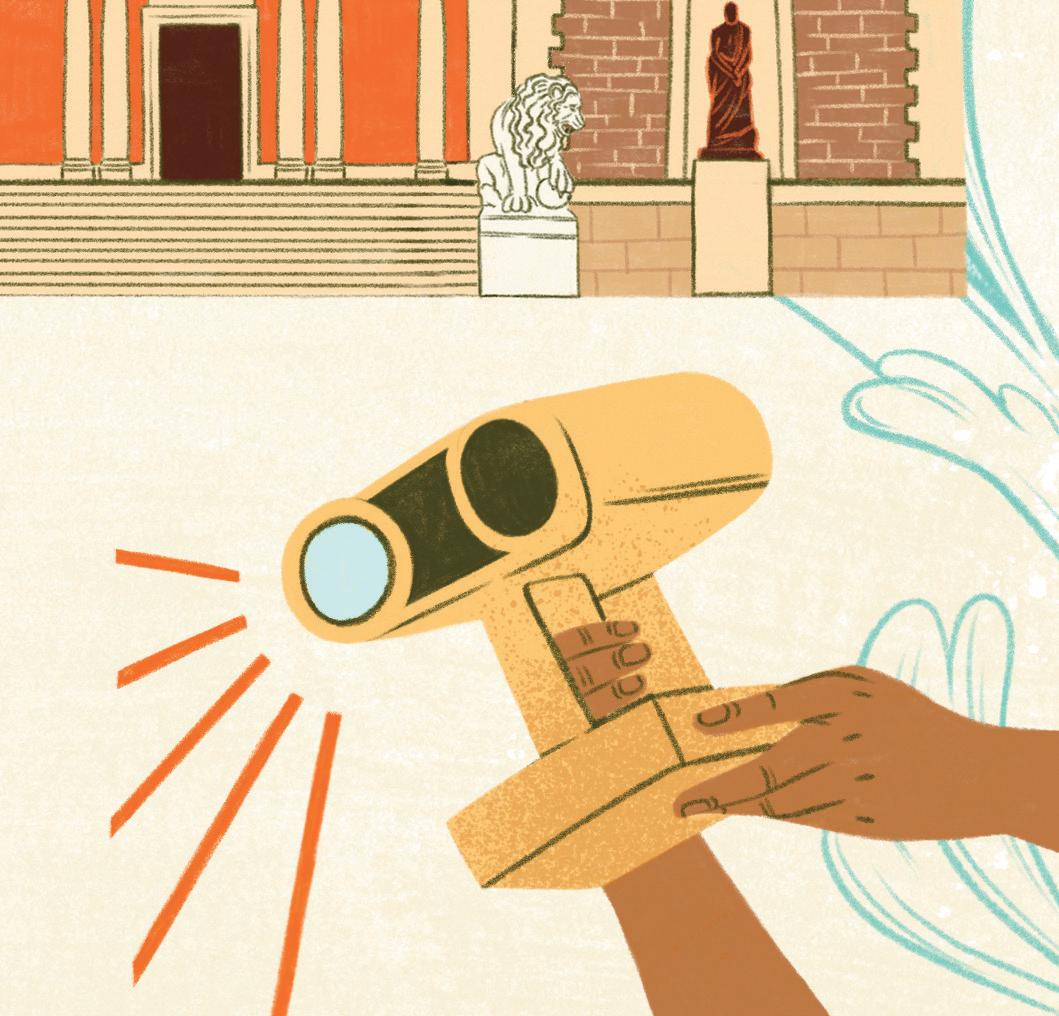
17 NESCAC Express: Jake Adicoff ’18 heads to his third Paralympic Games.
20 The Courage to Fall in Love: Mai Libman ’00 had a rocky relationship with Bowdoin, and it wasn’t until many years after graduation that she reconnected and found her community here.

49 Sam Chapple-Sokol ’07 talks cultural diplomacy.
52 Meredith Maren Verdone ’85 on slowing down to take a breath.
55 Amy Steel Vanden-Eykel ’99 on being a good leader—and teammate.
56 Sherrone Torres ’12 talks about connecting with the world.
4
The Bowdoin Nordic ski team—including Elliot Ketchel ’21, center front, bib number 4—opened the 2022 season with a 20k freestyle mass start at the Colby Carnival on January 14. Predicted weather conditions for the second day of racing at Quarry Road in Waterville necessitated kicking the season off with a 20k distance, which is unusual. It was also the first time that the women raced the same distance as the men in EISA competition— the previous women’s standard was 15k. The Bowdoin women finished third overall, led by an outstanding performance from Renae Anderson ’21, and the men ended the day in seventh place, led by Ketchel.
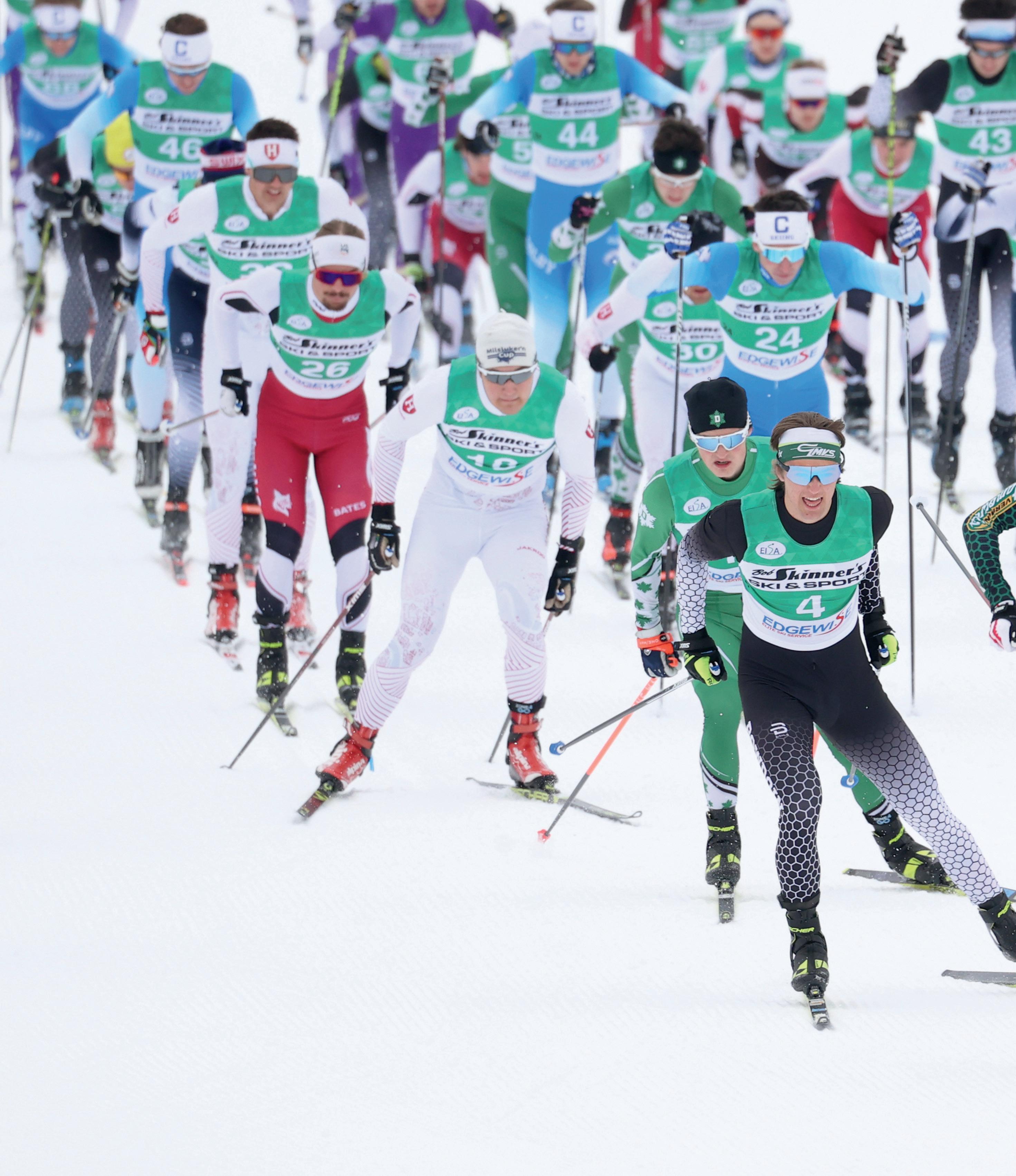 Photo by Brian Beard
Photo by Brian Beard
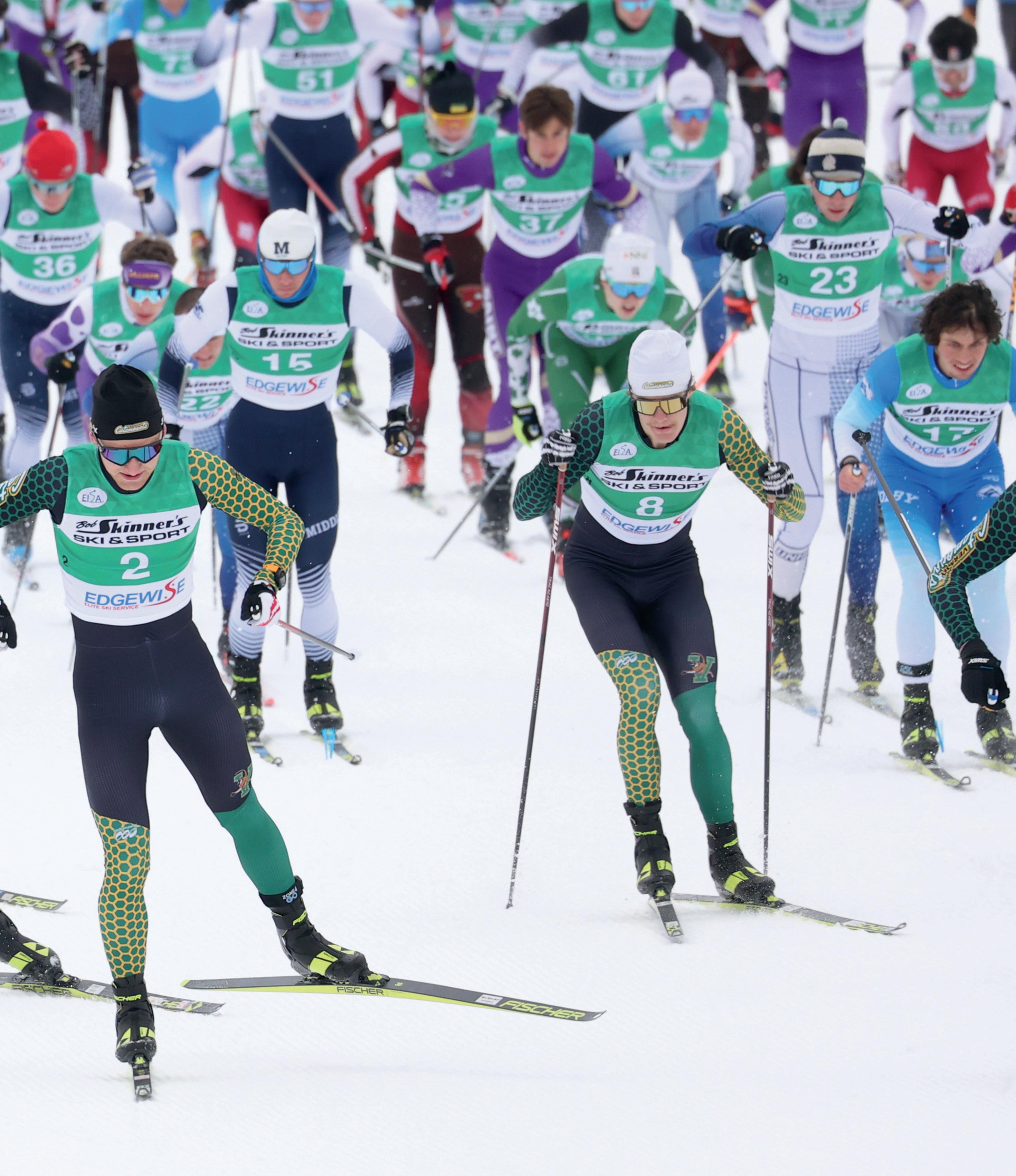
I read your cover article most intently—in particular, your milestone dates. I think one was missing—1962. In that year, my mother, Bernice Spring Engler, was the first woman to receive an earned degree from Bowdoin. The National Science Foundation established a four-year summer program at Bowdoin, among others, to upgrade teaching in STEM. In 1959, my mother, a math teacher at Brooklyn Technical High School, enrolled and [later] received a master’s degree in [1962], along with [one] other woman (she is the first woman because her name was earlier in the alphabet).
Stephen EnglerEditor’s note: A version of the above photo of Bernice Engler G’62 and Carolyn Mann G’62, the first two women to receive Bowdoin degrees that were not honorary, appeared on page 15 of the Fall 2021 issue. Stephen is right that we should have included 1962 in the timeline that accompanied “The Women Before” story in that issue.

“The Women Before” was of special interest to me, as my mother, Marion C. Holmes, was one of those faculty wives who taught mathematics when some professors were drafted into military service during World War II. The only proof my mother had of having taught at Bowdoin was a tiny article in a Boston newspaper.
Like Susan Jacobsen ’71, I was determined to go to Bowdoin. But when I was ready for college in the fall of 1953, Bowdoin was
not ready for me. My three older brothers graduated from Bowdoin: Julian C. Holmes ’52 and twins Peter K. Holmes ’56 and David W. Holmes ’56. I headed off to Oberlin’s class of 1957.
Janet Holmes CarperThank you for the article by Tom Putnam ’84 reflecting on the enduring influence professor Paul Hazelton ’42 and Dory Vladimiroff H’94 had on him and, in turn, the influence he
facebook.com/bowdoin
passed along to Leroy Gaines ’02. I share Mr. Putnam’s gratitude for all that Paul Hazelton was able to provide me during my years at Bowdoin. Paul still speaks to me today, just when I need to hear from him… his voice is so gentle and warmly human and subtly invigorating, it is scarcely recognizable as advice. There are not many who are able to access my consciousness so directly these many years after their passing. My father is one. There is a dairy farmer who was my
@BowdoinCollege
neighbor many years ago. Most certainly, there is [emeritus professor] Bill Geoghegan, and… [emeritus professor] Bill Whiteside steps in from time to time. Bowdoin seems particularly skilled at hiring professors who serve also as mentors. Mentors who just never seem to quit.
Geoff Herman ’86In our last issue we mistakenly listed Sarah Orne Jewett’s honorary degree as 1900 instead of 1901.
MAGAZINE STAFF
Editor
Matt O’Donnell P’24
Consulting Editor
Scott Schaiberger ’95
Executive Editor
Alison Bennie Associate Editor
Leanne Dech
Designer and Art Director
Melissa Wells
Design Consultant
2COMMUNIQUÉ
Contributors
Jim Caton
Doug Cook
Cheryl Della Pietra
Rebecca Goldfine
Scott Hood
Micki Manheimer
Tom Porter
On the Cover: Photographs by Aaron Tilley. Set design by Sandy Suffield.
BOWDOIN MAGAZINE (ISSN: 0895-2604) is published three times a year by Bowdoin College, 4104 College Station, Brunswick, Maine, 04011. Printed by Penmor Lithographers, Lewiston, Maine. Sent free of charge to all Bowdoin alumni, parents of current and recent undergraduates, members of the senior class, faculty and staff, and members of the Association of Bowdoin Friends.
Opinions expressed in this magazine are those of the authors.
@bowdoincollege
Please send address changes, ideas, or letters to the editor to the address above or by email to bowdoineditor@bowdoin.edu. Send class news to classnews@bowdoin.edu or to the address above.
When I was young, I spent a lot of time in the Pacific Northwest (PNW), where there was a strong indigenous community. I would go to the Intertribal Intergenerational Women’s and Girl’s Camp every summer and learn traditions like basket weaving and moccasin making, as well as values like respect for elders, the collective, and the earth. Once I left the PNW, I no longer saw people like me anywhere. Even in my US history classes in high school, we would skip the Native American history chapter because it wasn’t on the test. I realized some people didn’t even know Native Americans are still here.
Representing myself as a Native woman, and Studio Qila as an indigenous-owned business, is incredibly important to me. There is such a lack of diversity in the wellness space, an industry where there is already so much cultural appropriation.
Studio Qila is about connecting mind to muscle, developing body awareness, and truly staying present. My goal is to help students develop confidence in their abilities and in their bodies, and to show each of them how strong they are.
I started my career in consulting. I worked my way up to become a chief of staff at Uber, while also becoming a master Pilates instructor. I was halfway through an MBA when the pandemic hit, and I began teaching Pilates online to friends. When 500-plus people started attending, I founded what became Studio Qila. I built the company through my second year at Wharton and continue to grow it (with the help of creative director Louisa Cannell ’13) while also working full time now as a product strategist at Google.

For more of our interview with Bridget, visit bowdoin.edu/magazine.
The College’s small, tight-knit community is one of the reasons Bridget says she was so happy at Bowdoin, where her sister, Fiona O’Carroll, is now a senior. And community impact is a central tenet of Bridget’s mission with Studio Qila, especially “supporting underresourced communities, and amplifying Native and Black voices,” she says. “We believe wellness should be accessible to everyone.”
FROM BOWDOIN AND BEYOND PHOTO: JESSICA EBELHAR BRIDGET O’CARROLL ’13A program focused on career exploration and development grows bigger and more ambitious.

SOPHOMORE BOOTCAMP, an intensive winter break program run by Bowdoin’s Career Exploration and Development (CXD) office, touches on almost every aspect of finding a job, launching a career, and forging a meaningful life—from résumé writing and networking to soul-searching for ideas about what work will bring joy and satisfaction.
The program, piloted in 2019 with just twenty sophomores, grew to 200 students in its second year, and to 320 last year. This January, the program was expanded to accommodate every member of the sophomore class and became a mandatory element of the curriculum, in part to give classmates a shared experience.
“We knew we had something valuable on our hands and didn’t want any sophomores to miss a critical experience because they just hadn’t heard about it or thought to sign up,” CXD executive director Kristin Brennan said. “We started planning a year ago for a universal
sophomore experience,” one made possible by seed funds from an anonymous alumni gift of more than $150,000.
Eighty instructors—faculty, staff, alumni, and upperclass students—provided more than forty hours of career education over the twoweek program. Alumni and other volunteers fielded nearly a thousand networking calls from sophomores.
Kevin Robinson ’05, who started a successful property-management company, spoke on topics related to financial literacy, including investing, borrowing, and building a monetary safety net. A panel of alumni engaged in a candid conversation about juggling family expectations, financial demands, and idealism, and how their ideas about career priorities have evolved. New York Times Pulitzer Prize–winning reporter and Bowdoin trustee Katie Benner ’99 moderated the panel, which included National Board Certified County Teacher of the Year Bree Candland ’01, IT executive and Bowdoin trustee Joe Adu ’07, and Alumni Council members Mai Libman ’00, a technology entrepreneur, and Chris Omachi ’12, an executive with Audible.
Alumni Life
“The creation of the Bowdoin College Black Alumni Association (BCBAA) is a historic achievement for the College, as it is the first of its kind to support a specific racial identity group within the alumni community,” said Bowdoin’s inaugural director of multicultural alumni engagement, Joycelyn Blizzard. “As the College progresses, we look forward to learning how we can support other alumni communities of color,” she added.
The group’s constitution explains that it “was founded in recognition of the impact that Bowdoin College [has] had upon our personal lives and that of our children, nation and world.” In its mission the BCBAA “will strive to correct the historic wrongs against and obviate the inequities experienced by the Black community of Bowdoin College.” More widely, the BCBAA aims to promote the greater common good of the African diaspora through social justice, cultural preservation, economic empowerment, and other initiatives.
A coordinating council guides the BCBAA, led by president Michael Owens ’73, P’15, trustee emeritus; vice president Sherrone Torres ’12; and secretary Praise Hall ’20. As an early order of business, the council has begun to set up committees to carry out work in community service, mentorship, and financial aid.
Poke (pronounced “POH-kay”) is a staple Hawaiian dish that originated when fishermen would season cut-offs from their catch to snack on—“poke” is a Hawaiian word that means “to slice or cut crosswise into pieces.” Traditionally eaten as a snack or served as an appetizer, poke is on the menu at everything from simple events like family gatherings and luaus to special occasions such as weddings, and it has grown in popularity outside of Hawaii in recent years as a main dish in the rest of the United States.







“I love poke because it is intensely flavorful and satisfying, but also relatively light,” says chef Ian Hockenberger ’89. “You can tailor it to your tastes, spicy and bold or milder. It is a good dish in both hot and cold weather and especially fun at parties.” For a vegetarian option, tofu is a fine substitute for tuna, but “nice tomatoes when they’re in season” are even better, Ian explains. “The consistency and color are more like tuna. A purple Cherokee, Abe Lincoln, or even a yellow heirloom have good firmness and flavor.”
Serves six to eight
12 oz. ahi tuna (AAA yellowfin saku)— frozen is what you will be using unless you live in Hawaii.

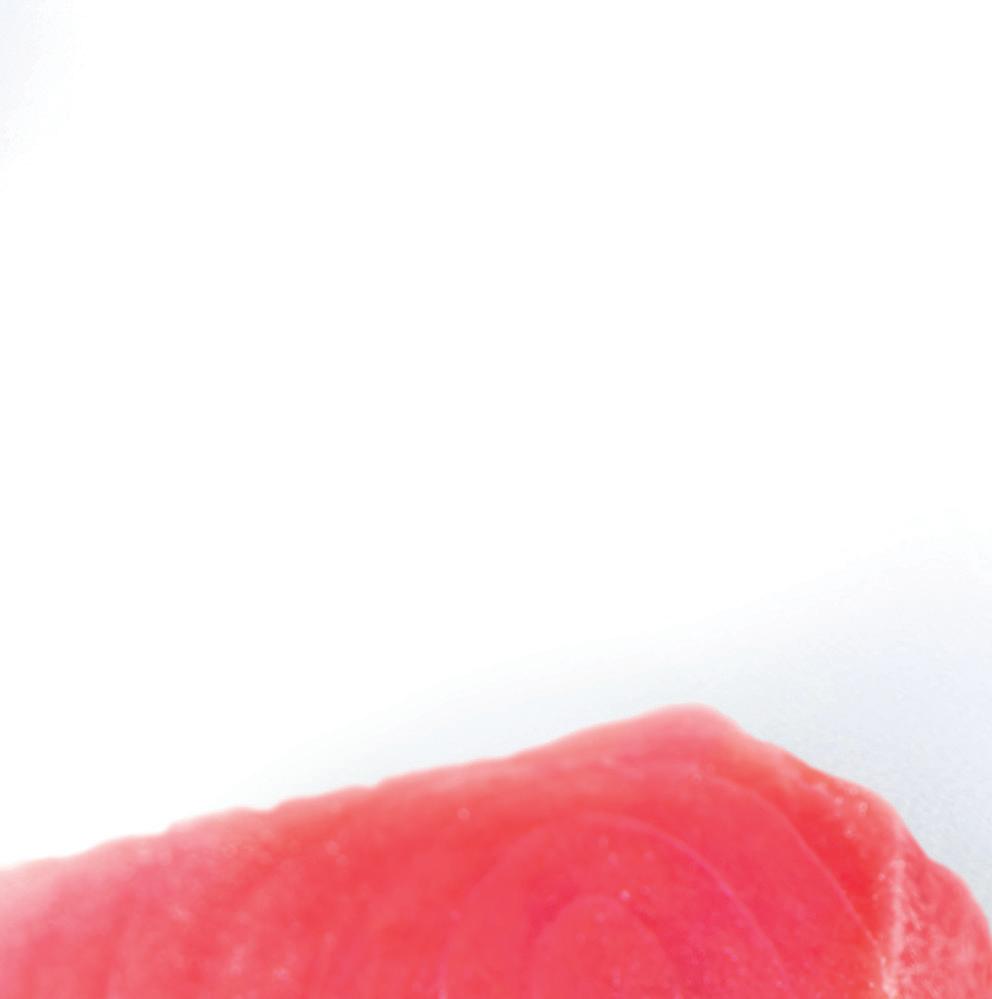
½ cup diced mango, ¼- to ½-inch dice
½ cup shelled edamame









¼ cup green onion, minced
1 tablespoon Kewpie or other mayonnaise
2 tablespoons soy sauce or tamari (for a gluten-free version)
1 teaspoon sesame oil
1 teaspoon lemon juice
1 teaspoon seasoned rice vinegar
1 tablespoon sriracha or chili paste (Momofuku crispy chili paste is great)
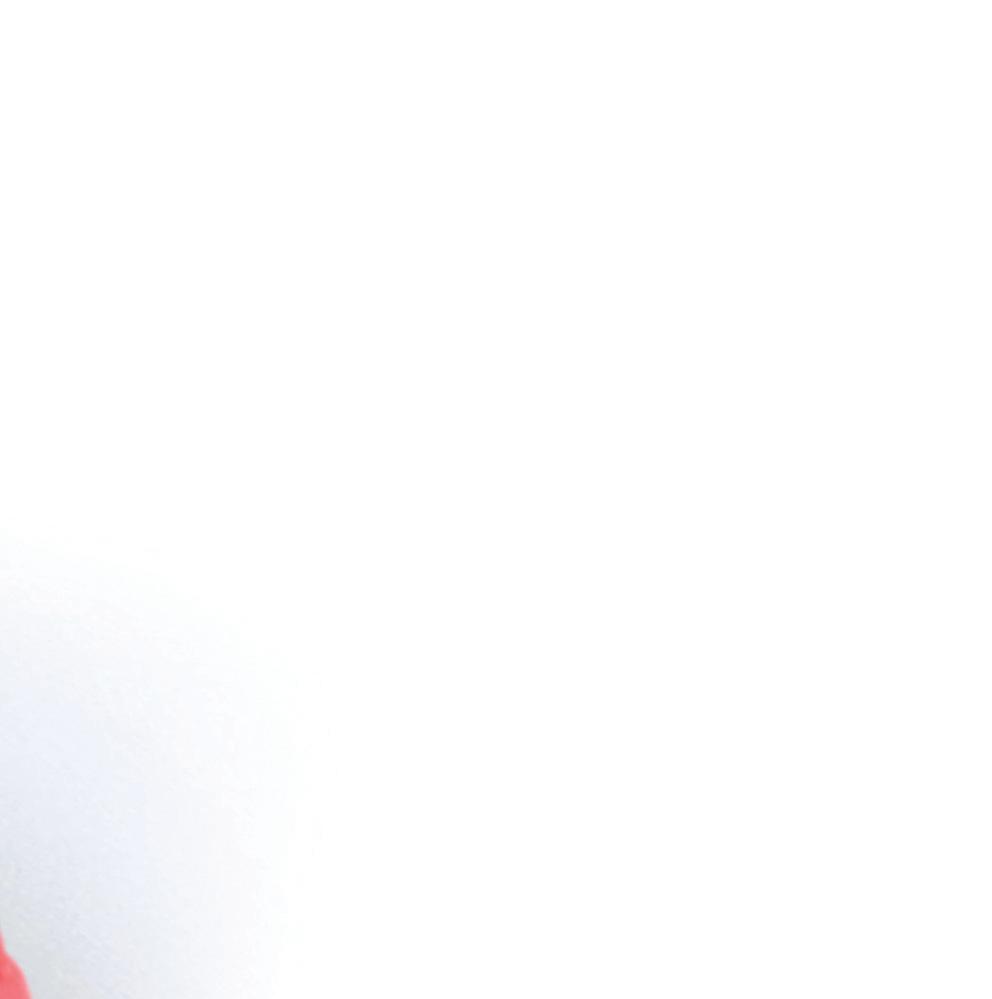
½ sheet nori, shredded
Dice the ahi in pieces no larger than ½ inch. Place in a large mixing bowl. (If using frozen tuna, dice the tuna when it is still partially frozen, then let it thaw on a paper towel.)
Add the mango, edamame, and green onion.
In a separate, smaller bowl, whisk together the mayonnaise, soy sauce, sesame oil, lemon juice, vinegar, and chili paste.
Add the liquid mixture to the larger bowl and fold gently to coat the other ingredients.
Fold in the nori last.
Let the poke chill for an hour or so before serving.
It can be served over sushi rice, with crackers, or with fried wontons.
Ian Hockenberger ’89 graduated from Bowdoin with a degree in American history, then worked in the financial sector until 1994, when he moved to San Francisco to attend culinary school. He met his wife in Kansas City in 2003 and together they opened the Mango Room. Since 2019 he has been culinary director for Sushi Kabar, which has more than 190 locations in grocery stores, hospitals, and universities across the country.
Did You Know?

A staff member scans every detail of the lions to make a virtual 3D version, inspiring us to take a close look at the beloved guardians of the Quad.
Illustration by Nicole MedinaLions can be found guarding public buildings, flanking bridges and gates, and standing in for royalty, power, and might throughout the world. At Bowdoin, the lions on the loggia, or terrace, of the Walker Art Building fill more of a kindly role. They quietly watch students gather on the steps to study or eat or talk with friends; they forebear generations of students and children climbing on their backs for fun and photographs; they celebrate every graduate at Commencement. Earlier this semester, David Israel P’25, who is trained as an art historian and artist, and who works in Bowdoin’s academic technology and consulting group, embarked on a project to scan the lions using a portable scanner to capture thousands of images and textures. As Israel describes it: “There is some serious ‘magic’ in the software that interprets it all and lets us build up the final models.”
There are copies of the Medici lions throughout the world. In the US, the most famous are the New York Public Library’s Patience and Fortitude. When they were unveiled in 1911, some thought they should have been beavers or bison. Bowdoin’s lions are copies of marble sculptures known as the Medici lions— one of which is secondcentury Roman and the other a sixteenth-century pendant to the first, carved by Flaminio Vacca and commissioned by Ferdinando de’Medici. Travelers to Florence, Italy, can visit the Medici lions at the Loggia dei Lanzi in the Piazza della Signoria, where they have been since 1789.Bowdoin’s lions are carved not from marble but from travertine, a light-colored calcareous rock that is a type of limestone deposited around mineral springs.
Bowdoin’s lions were removed and housed in a safe place during the 2005–2007 renovation of the Walker Art Building.
David Israel P’25 has been using an Artec LEO scanner to create a 3D scan of the lions. Using the device, which Israel says “looks a little like the Pixar character WALL-E,” it took an hour or two to scan the lions and “a good day” to get the model rendered.
In designing the façade of the Walker Art Building, architect Charles McKim likely suggested the lions for the loggia, but the lions’ actual sculptor is unknown.
Both of Bowdoin’s lions place a paw on a sphere, but the lions are not identical, and their faces are quite different.
During COVID, Israel and others scanned more than 100 objects in the BCMA collections and made them available for professors to share with students who were studying remotely.

THE ASSOCIATION OF BOWDOIN FRIENDS, a group founded in 1984, has more than a thousand members. As campus readied for a return to “normal” at the start of the fall 2021 semester, the Friends received an email from the College seeking volunteers. Campus would be bustling with the return of students who took the previous year off and a large first-year class, with few studying away and a busy COVID-19 testing center in Farley Field House. Friends with a range of experience responded, including several retired physicians, technology professionals, an event planner, and a priest.
Several of the volunteers returned for the spring semester to continue in the testing center. “Janice Collins ’78 works regular eight-hour shifts,” said Sara Smith, a Bowdoin communications staff member who administers the Friends program. Arthur Pierce, a retiree in his eighties, also works regular shifts and handles check-in at the center, and controls foot traffic. “Friends like Janice and Arthur have really made a difference,” Smith continued. “It’s their commitment and enthusiasm that make the Bowdoin community so special.”
Dejie Zhen ’23 initially wondered if he should try to spend as much time as possible soaking up campus life over his four years of college, but the prospect of traveling was too tempting. He studied in South Korea in the fall before moving on to Denmark for the spring 2022 semester.

“I realized that this opportunity for a low-income student was a once-in-a-lifetime experience that I could not pass up,” Zhen said, explaining that he chose two “completely different cultures and continents” to explore.
This spring, 125 Bowdoin students are taking part in the College’s study away program, up from thirty-three in the fall. Many more are looking forward to a time when going abroad—or even across the country—is simpler: 384 students have expressed interest in the off-campus study program for the 2022–2023 academic year.
Zhen chose programs that would likely not terminate if the pandemic worsened. Hayden Weatherall ’22 did the same. “I figured that, as long as I could manage to get on the plane, I would be able to stay in France for the semester,” he said. “COVID is a fact of life here [in France], as it is everywhere. For me it’s a balance between living the semester to the fullest and making sure I’m covering all the bases for both my personal and host family’s health. From there it’s up to the COVID gods.”
When an appeal went out for volunteers to help the College cope with the demands of the pandemic, the Bowdoin “Friends” stepped up.
Students in Tess Chakkalakal’s Africana studies class and Maine Maritime Museum work together to tell the full story of a long-lost bill of lading.
“HISTORY IS NOT ABOUT having all the answers but telling a more complete story of the past,” said Kelly Stevenson ’24 at the opening of the student-curated show Cotton Town at the Maine Maritime Museum (MMM) in Bath, Maine.
Cotton Town was sparked by the discovery last year of 171-year-old shipping documents— and an untold story they revealed. The papers were likely tied into bundles long ago and lost from view, until Kelly Page, MMM’s collections manager, took a closer look when outside researchers asked for information on a nineteenth-century Bath ship, the John C. Calhoun. During her research, Page found that captain John Lowell of Bath had taken a secret journey in 1850.
In a letter dated October 11, 1850, Lowell asked permission from the owners of the Calhoun to transport ninety-three slaves, ages eleven to thirty-five, from Baltimore to New Orleans. “The captain was desperately trying to make the voyage profitable,” Page explained. He was to be paid twelve dollars per person over eleven years old; half that for those younger. Lowell later wrote to the ship owners about the voyage, asking for discretion:
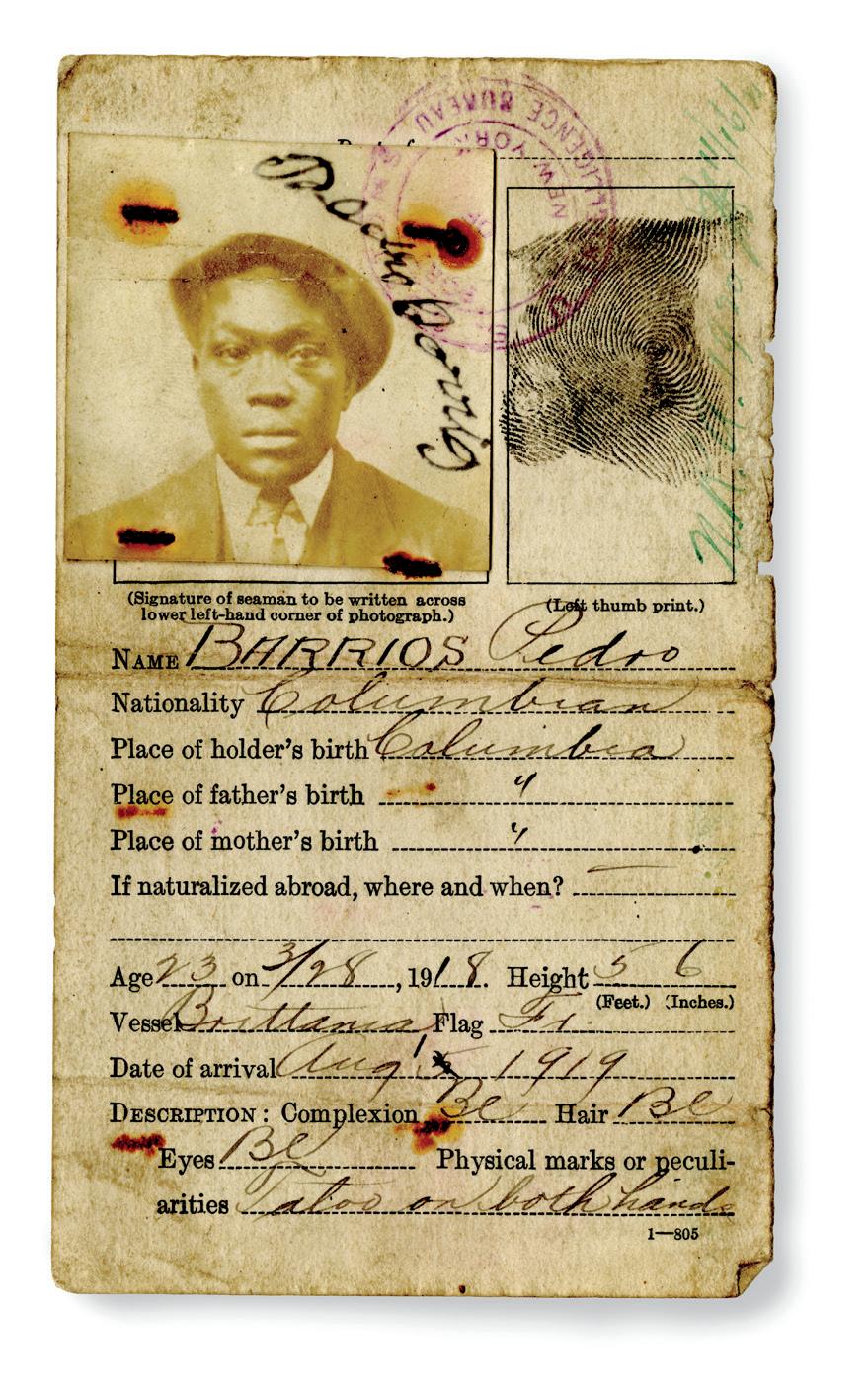
When MMM educational staffers Sarah Timm and Luke Milardo-Gates ’14 saw Lowell’s papers, they reached out to Bowdoin Associate Professor of Africana Studies and English Tess Chakkalakal for advice. Chakkalakal suggested that her fall-semester Africana studies students collaborate with the museum to conduct further research and to curate an exhibition.
As students dove deeper into the murky water of Maine’s relationship to slavery, they curated the antique photos, letters, and artifacts through which Cotton Town explores
connections between historical industries in the state, like shipping and manufacturing, and the slave trade. “Although Maine entered the Union as a ‘free state’ in 1820, slave labor remained a pillar of Maine’s economic success until Emancipation, forty-one years later,” they note in the exhibit, which opened in December and is on view through May 8, 2022.
Professor of Religion Emerita Jorunn
Buckley is one of a tiny number of scholars who study one of the world’s smallest religious communities, the Mandaeans. As Buckley put it in a 2016 essay, “I can’t think of any colleagues in Mandaean studies who are in my own generation.” She is arguably the world’s foremost expert on the little-known religious sect, which originated around two thousand years ago in the Jordan Valley and whose members moved eastward due to persecution.
Her reputation as an expert is such that the Library of Congress recently agreed to acquire her entire academic archive, preserving it as a publicly available resource. “It’s an enormous honor to have my life’s work recognized in this way,” says Buckley.
Buckley moved to the US from her native Norway in the early 1970s to pursue a PhD at the University of Chicago’s Divinity School. Her academic achievements include six books (another is in progress), around forty articles, and a similar number of book reviews. Her focus has largely been on Mandaean mythologies and rituals, as well as the philosophical underpinnings of the religion. Her books include: The Mandaeans: Ancient Texts and Modern People, which explores the lives and religious practices of contemporary Mandaeans, both in Iran and Iraq and in diaspora communities throughout the world; and The Great Stem of Souls: Reconstructing Mandaean History, a study of Mandaean priestly lineages from the third century to the present day.
“Please say nothing about my taking negroes.”Above: Pedro Barrios Seaman ID, Chase, Leavitt Co. Records, Maine Maritime Museum Archive, MS49.386.29
“I wanted to try something new and saw myself in a mentorship role,” said Sara Morcos ’24, who worked as an adult education tutor in Maine during winter break. It was “a truly rewarding process.” The prospective neuroscience major helped a student prepare for the HiSET exam—Maine’s equivalent of a GED—by volunteering fifty hours of math tutoring and preparation work.
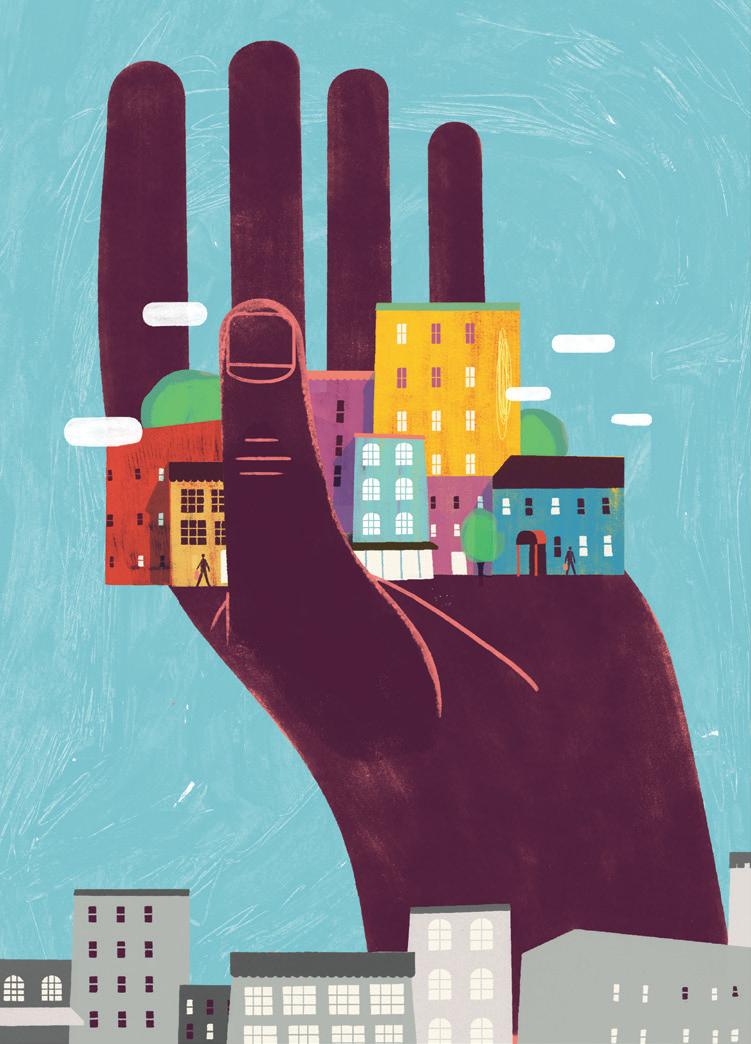
The McKeen Center for the Common Good launched the Winter Break Community Engagement Fund in response to the pandemic last year, when the Alternative Winter Break and Alternative Spring Break programs were not possible. The new initiative continued this year to give more students meaningful experiences over break. So far, the Community Engagement Fund has provided more than eighty students with the opportunity to design their own service projects in the communities of their choice. Morcos, who has participated twice, partnered most recently with Freeport Adult Education, a connection made through their director of community programs, Peter Wagner, former associate director of alumni relations at Bowdoin.
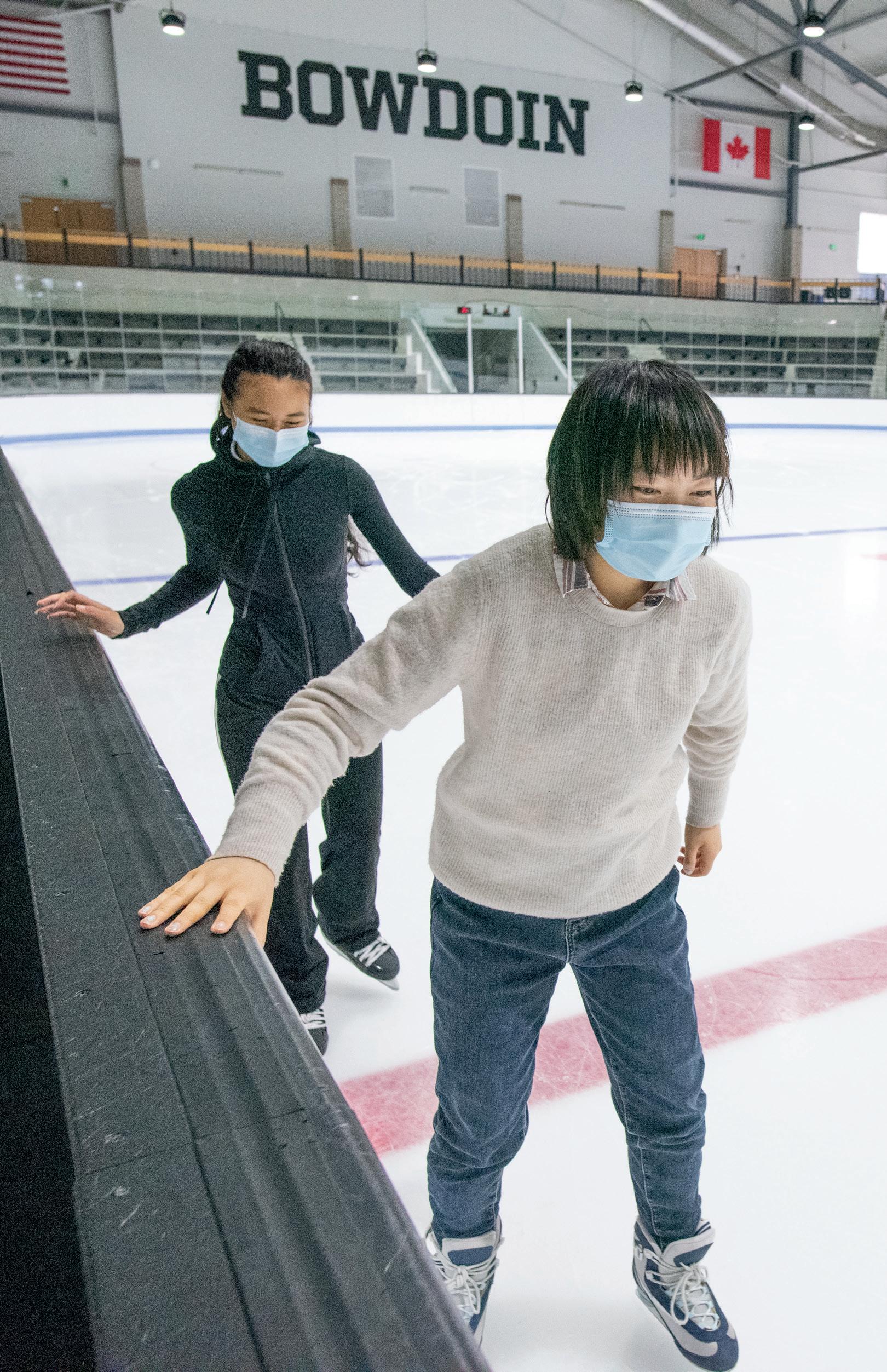
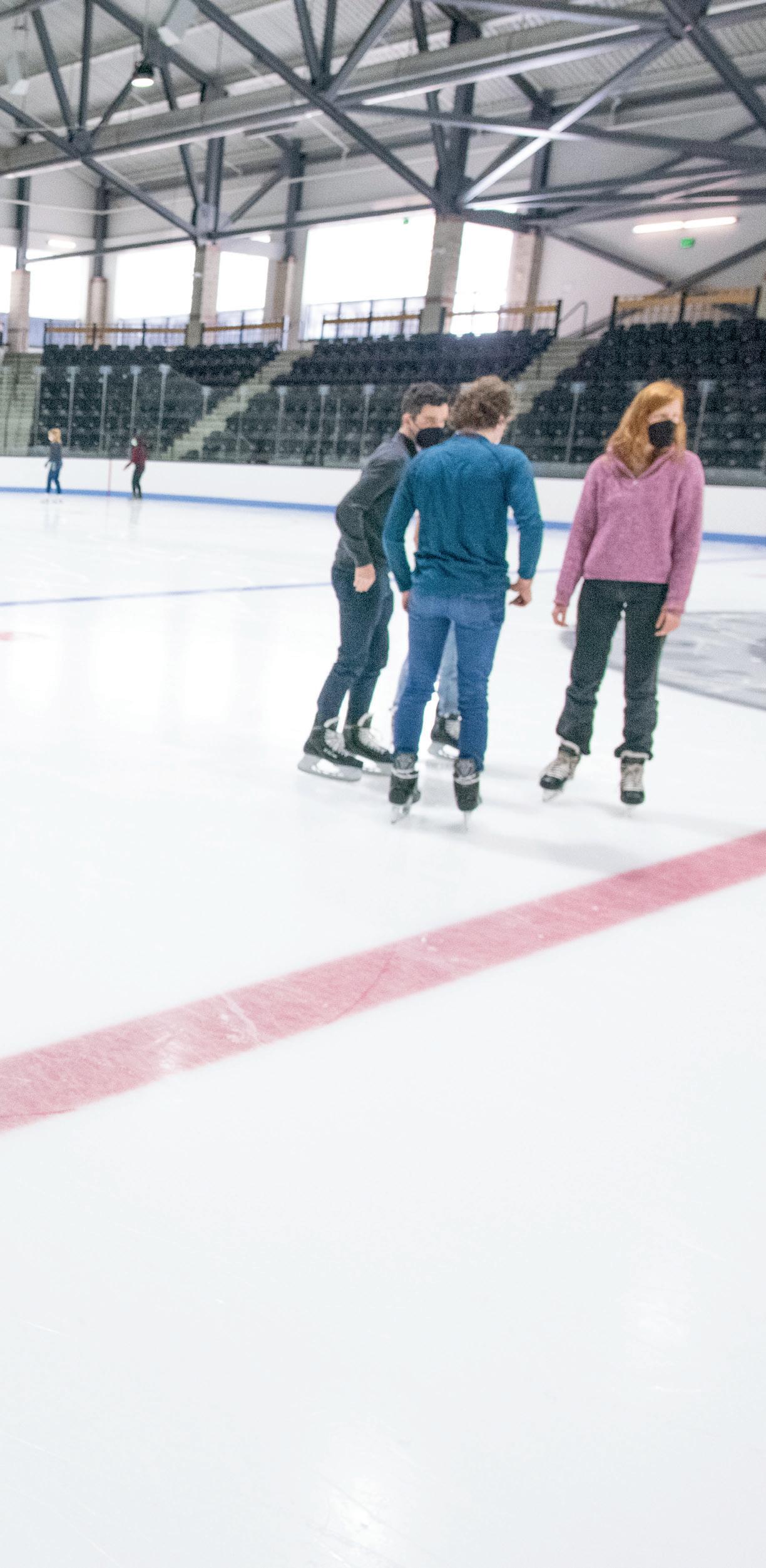
Bowdoin’s Sexuality, Women, and Gender Center (SWAG) hosted a skating event in Watson Arena on February 6 that drew more than fifty people for ice skating and community building. “Many students had never had the chance to skate before,” said Kate Stern, associate dean of students for inclusion and diversity and director of SWAG. “It was so great to be able to be together and have fun at the start of this new semester.”
DExC will create digital equity for every Bowdoin student regardless of family means and will fully equip them with the tools and opportunities to learn and lead in a digital world.
ON FEBRUARY 22, 2022, Bowdoin announced a groundbreaking Digital Excellence Commitment (DExC) that will provide every current student and all future students with a suite of the latest Apple technology and access to a full range of course-specific software designed to advance learning, inspire innovative teaching, and create digital equity across the student body in the use of tools essential for success in the twenty-first century. DExC will build on the success of Bowdoin’s iPad Initiative by equipping all students with a 13-inch MacBook Pro powered by M1, an iPad mini, and an Apple Pencil, along with access to software used across the range of courses at the College, beginning in fall 2022.
“During the pandemic we witnessed firsthand the power of a common technology platform for teaching and learning, along with the substantial and differential benefits that come with the combination of a MacBook Pro and an iPad with an Apple Pencil,” said President Clayton Rose. “DExC allows us to level the playing field so that every student has the opportunity to fully benefit from technology that plays an essential and growing role in learning.”
Entering first-year students will receive all new equipment and software; returning students will use the iPad Pro and Apple Pencil they have already received, supplemented by a new 13-inch MacBook Pro powered by M1, with a full software suite.

Among the newest offerings from MasterClass—the streaming platform said by CBS News to be “in a class of its own,” where anyone can learn from the world’s best across a wide range of subjects—is a class on the runner’s mindset by Joan Benoit Samuelson ’79, P’12. Other newcomers joining Samuelson as expert instructors for MasterClass—which The New York Times has described as sitting “neatly at the intersection of pedagogy and entertainment”—include activist Malala Yousafzai, cellist Yo-Yo Ma, chef Roy Choi, Bill Nye (the Science Guy), and musicians Ringo Starr and Nas. With decades of experience in long-distance running and an Olympic gold medal among her many honors, Samuelson shares tips on technique, preparation, goal setting, and navigating injuries along with a philosophy and approach to running that, the company says, “allows her to discover new things about herself and rediscover the joys of running every time she laces her shoes.”

Shot and produced in MasterClass’s signature cinematic style at Bowdoin’s Farley Field House—and at a spot dear to many a Bowdoin runner, Wolfe’s Neck Farm—among other locales, the class is available to subscribers now.
Residential Life proctors and advisors (RAs) have seen how first-years and sophomores living on campus have been impacted—both positively and negatively—by the pandemic.
“Building community has been harder because people are less inclined to get together due to COVID restrictions or worries about getting COVID,” said Thomas Trundy ’23, an RA in Maine Hall. Yet, at the same time, he observed that “the first-years got really close” in the fall of 2021, sharing all meals and activities for the first few weeks under extraordinary circumstances.
With campus life opening up in the spring semester, students have become busier, spending less time in their residence halls, which, while confining, also forged tight connections with floormates.
As a proctor for Helmreich House, Michy Martinez ’23 says she felt her main job in the fall was to coax people out of their rooms. She organized house dinners and frequently invited housemates to study with her in the living room. “It’s been interesting to see how the sophomores have opened up and adjusted” after a more restricted first year, she said.
Harley Scott ’23, an RA for first-years in Osher Hall, has also appreciated the enthusiasm of students—despite the circumstances. “It is an exciting time to be an RA because all these students are coming out of two years of quarantining and into college during the craziest transition of all time,” he said. “It is awesome to see all the excitement they have for college.”
“This is a tough, weird time to be a student. But Bowdoin is SO much bigger than four years of classes. You’re a Polar Bear for life. Enjoy every second!”—A MESSAGE FROM ASHER STAMELL ’13 TO CURRENT STUDENTS, ONE OF 1,268 DELIVERED ALONG WITH A GIFT MADE ON BOWDOINONE DAY ON FEBRUARY 17, 2022.
An exhibition at the Bowdoin College Museum of Art highlights the dynamic tradition of Wabanaki basketmaking.





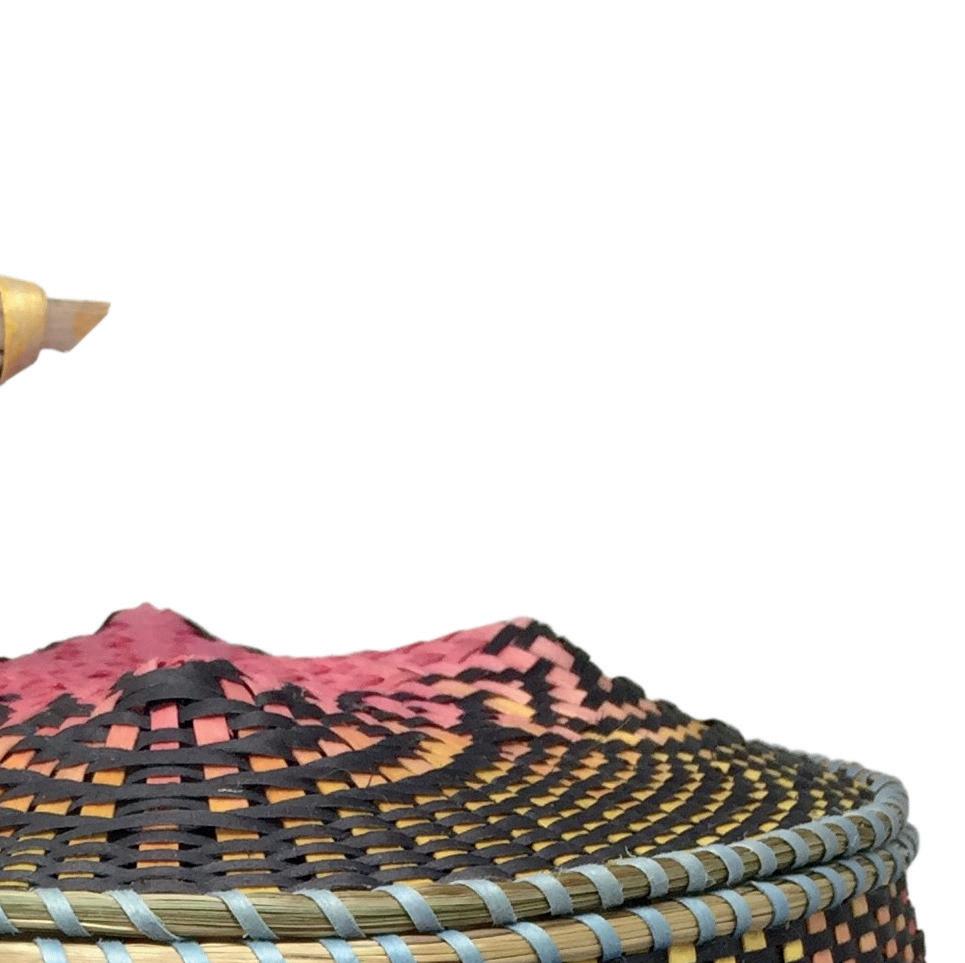

INNOVATION AND RESILIENCE Across Three Generations of Wabanaki Basket-Making features Abenaki, Penobscot, Passamaquoddy, Maliseet, and Micmac artists bringing historical baskets together with some of the finest examples of contemporary Wabanaki artistry. The Wabanaki have woven baskets for all of their history, but it was when they were forced off their land by European colonization that basketmaking became a means of economic independence and resistance to assimilation. Since the nineteenth century, Wabanaki artists have innovated traditional utilitarian forms to meet collectors’ tastes, leading to a new style of basketmaking— “fancy baskets,” like the one pictured here by artist Geo Neptune, Apikcilu Binds the Sun
Neptune is a master basketweaver, educator, and activist who is the grandchild of legendary basketweaver Molly Neptune Parker H’15. In a virtual conversation with the Bowdoin community, Neptune, who is nonbinary, explained that they are what is known as “two-spirit” by the Wabanaki people and talked about growing up without elders. (“I had to be my own elder,” they said.) Neptune started weaving baskets with their grandmother at the age of four. After graduating from Dartmouth College in 2010, Neptune has worked to foster cultural preservation within Wabanaki communities and advocated for contemporary issues faced by Indigenous people. Though known mainly for their ash and sweetgrass basketry, Neptune is also a drag queen and model for print and runway, and is featured in the “Can We Say Bye-Bye to the Binary?” episode of the Netflix series Getting Curious with Jonathan Van Ness
Curated by Amanda Cassano ’22, Sunshine Eaton ’22, and Shandiin Largo ’23—all members of the Native American Student Association—the exhibition runs through May 1, 2022. A recording of the conversation with Neptune can be found at bowdo.in/neptune.
The Loneliest Americans
JAY CASPIAN KANG ’02 (Crown, 2021)
This memoir from New York Times writer Jay Caspian Kang ’02 has been lauded as one of the best books of the year. A child of Korean immigrants, Kang blends family history and original reportage to explore Asian American identity in a Black and white world amid a wave of anti-Asian violence and critically examines his place within his communities and in America.

“OTHER ALUMS WERE THINKING ABOUT where they would go after college and when they would come back to Maine,” said Kristina M. J. Powell ’06. “I went to career services to figure out how I could stay.” Powell wrote her own story to live and work in Maine, and as the new executive director of the nonprofit Telling Room in Portland, she’ll help empower young people to share their experiences and express themselves through writing and storytelling.
Powell researched The Telling Room during her MBA studies at Purdue, and just a short time later landed what she calls her “dream job.” In a December 19, 2021, Portland Press Herald article, she said, “I’ve always admired their work so much and been drawn to the mission of the organization—because of the stories that are told here, because of the voices, and also because of diversity and equity and being a woman of color.”
Accusation: A Thriller

PAUL BATISTA ’71 (Oceanview Publishing, 2022)
Homesteading and Ranching in the Upper Green River Valley
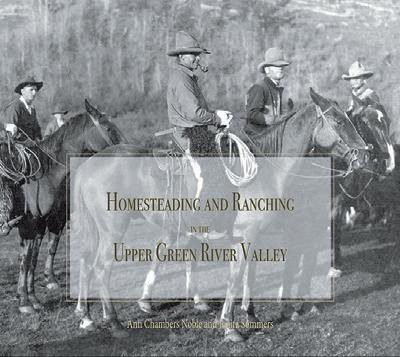
ANN CHAMBERS NOBLE ’82 and Jonita Sommers (Laguna Wilderness Press, 2020)
Powell credits her major in anthropology and minor in sociology for helping her to hone her skills in listening to people. “I have always been fascinated by understanding people’s journeys of identity formation and how that changes as well, and how painful and also joyful it can be.... Creating space for that is part of what we do here at The Telling Room, as students put pen to paper to find their voice.”
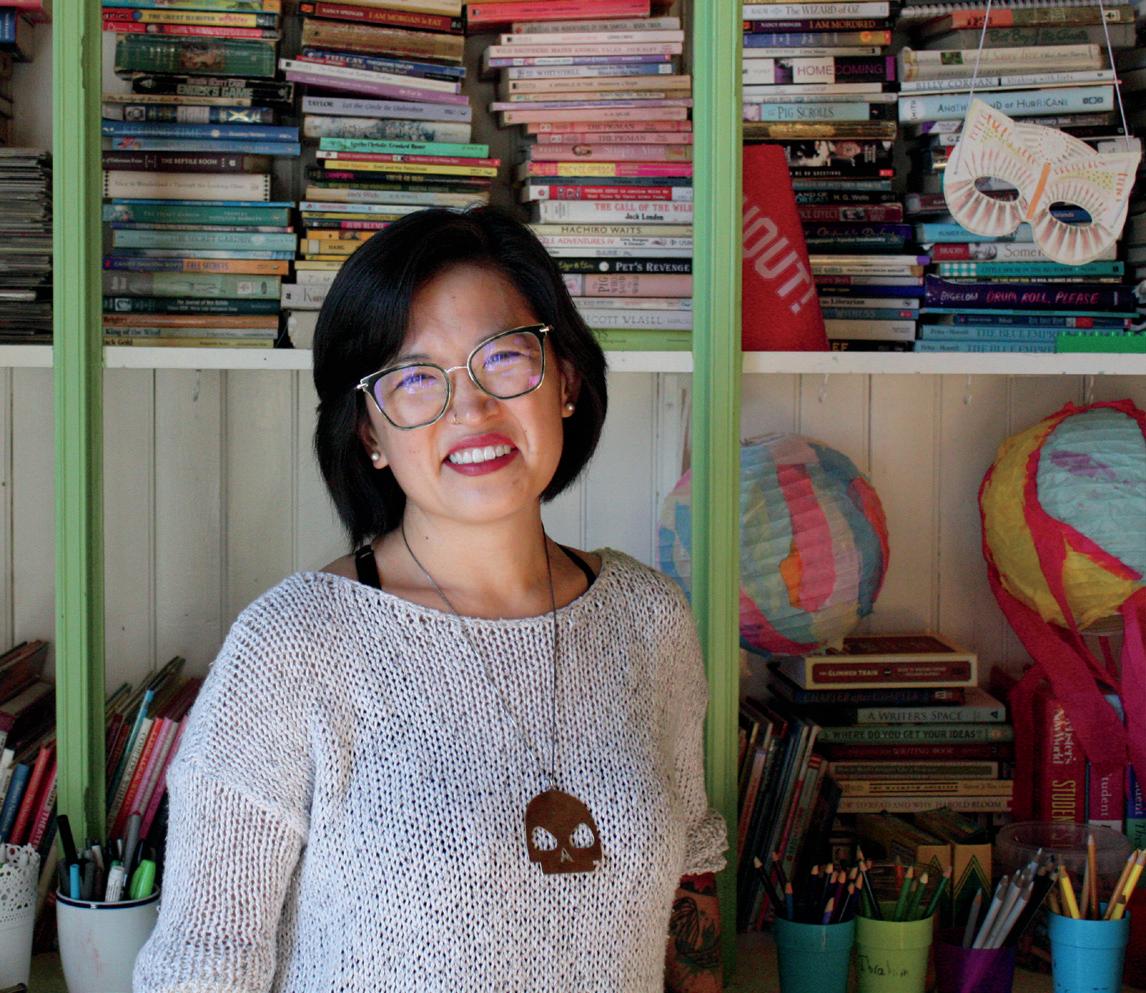
Dear Maine: The Trials and Triumphs of Maine’s 21st Century Immigrants

MORGAN RIELLY ’18 and Reza Jalali (Islandport Press, 2021)
Beyond the Tides: Classic Tales of Richard M. Hallet
FREDERIC B. HILL ’62 (Down East Books, 2022)
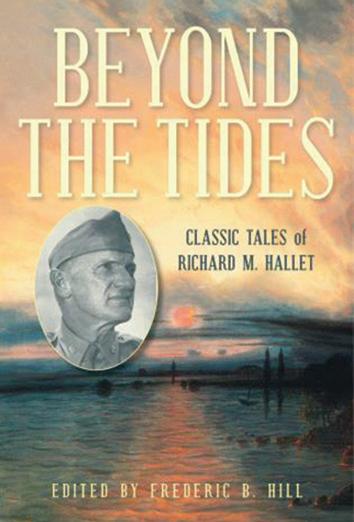
Through intent listening and a deep respect for identity, Kristina M. J. Powell ’06 reveals new possibilities for Maine’s children.Kristina M. J. Powell ’06 is executive director of The Telling Room, an organization dedicated to helping kids aged six to eighteen build confidence and ensure success. PHOTO: RYLAN HYNES
Hawthorne-Longfellow Library launched “Bowdoin Reads, Watches, Listens” in 2008 to bring the campus community together around books, video, and audio sparking inspiration. H-L has recapped the most-viewed recommendations of the past year and invites you to engage in the campus conversation by sharing your favorite in the comments section of “2021 in Review” at bowdo.in/reads, or submit a photo and recommendation to Marieke Van Der Steenhoven at mvanders@bowdoin.edu.
Alumni Life
Two skiers who raced against each other in college now race at the Paralympics as one.
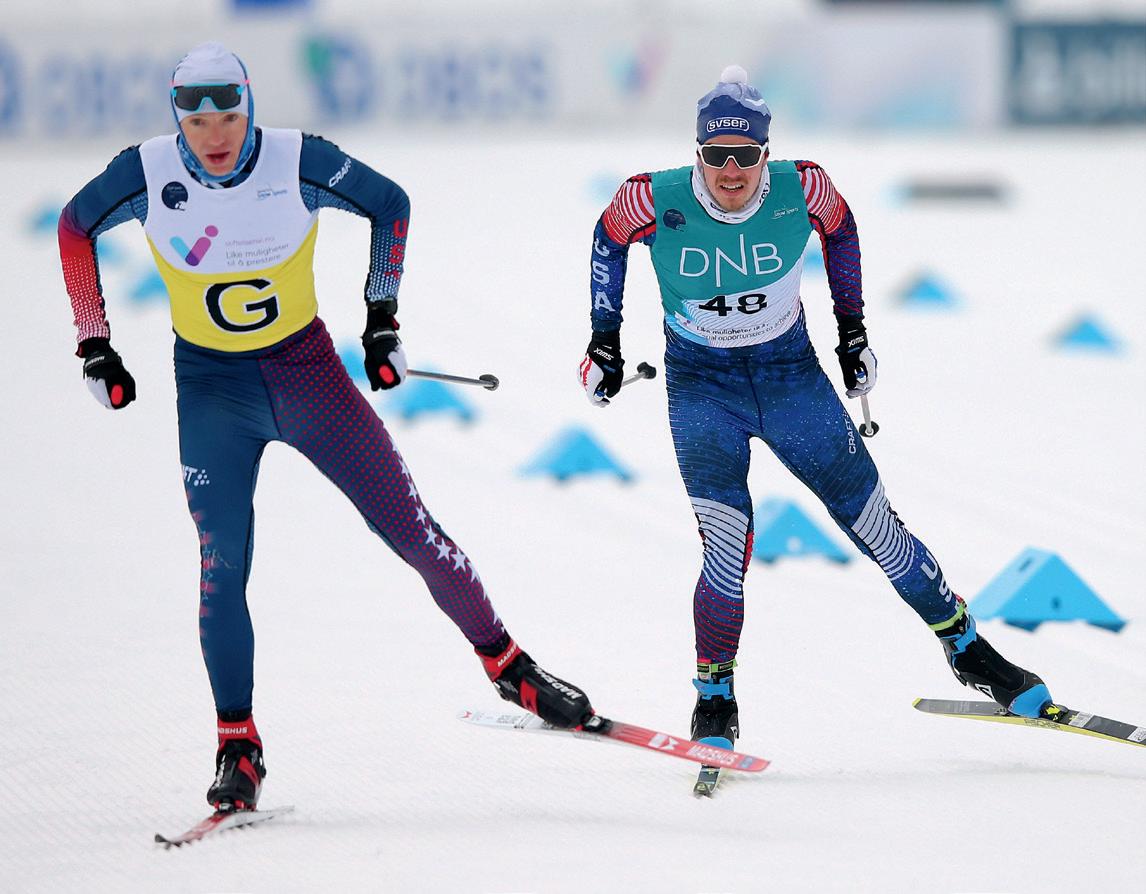
The Office of Alumni Relations worked with Portland, Maine, artist Abe Tensia ’14 to illustrate three Bowdoin-themed Valentines that were shared with alumni online and via social media. The assignment fit cozily with Tensia’s style of pen and ink drawings that celebrate creative play and the natural wonder and whimsy of the great outdoors, both things, she said, “near and dear” to her heart. Tensia grew up in Wyoming but said that she didn’t really appreciate the outdoors and nature until her time at Bowdoin.

For more of Abe’s work, visit abetensia.com.
ONE WAY OR ANOTHER, Jake Adicoff ’18, a medal favorite in several events, will have skied his way into history at the 2022 Beijing Paralympics—no other Bowdoin athlete has competed in three Olympic or Paralympic Games. Adicoff raced in the Sochi Paralympics in 2014 and won silver in the 10k classic at the 2018 Games in Pyeongchang, South Korea. Adicoff retired from professional racing in 2018 but was called back to the sport during the pandemic and set a goal to reach the Games again. His guide is fellow NESCAC Nordic racer Sam Wood, a 2019 Middlebury graduate and Adicoff’s friend and teammate on the Sun Valley Ski Educational Foundation XC Gold Team. With Wood leading the way, Adicoff won a gold medal in the 10k classic, took silver in the 1.5k classic sprint, and wrapped the trifecta with bronze in the 15k skate at the 2022 World Championship in January, just before Beijing.
For a full list of Bowdoin Olympic and Paralympic athletes, visit athletics.bowdoin.edu.




















Investing in Our Community








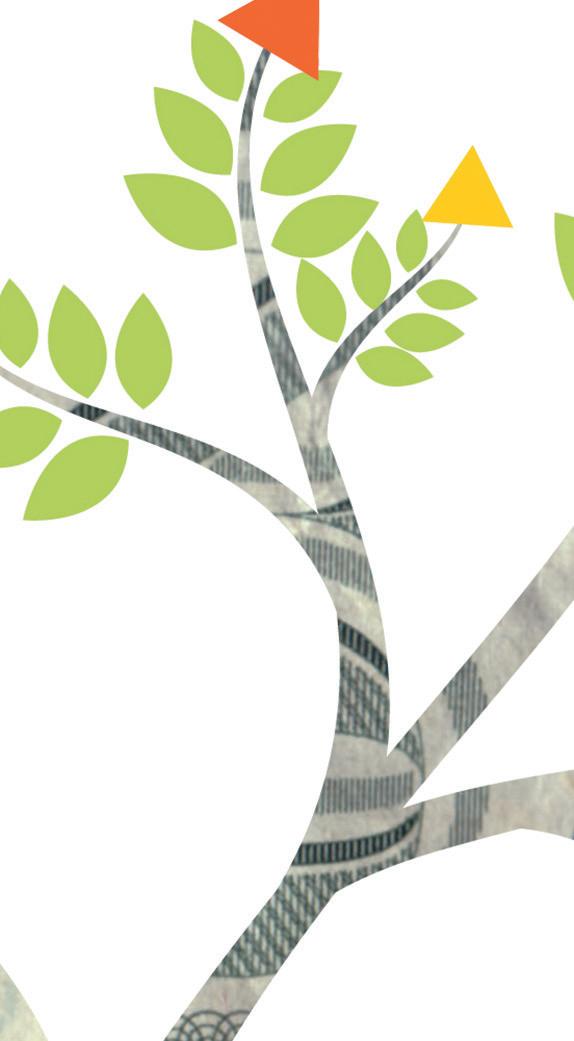


StrongArm fuses technology with the common good.
STRONGARM CALLS THE WORKERS who wear their products “industrial athletes.” “They put their bodies on the line every day,” explains Alex Weaver ’07, marketing director for StrongArm Technologies. “People have a right to return home from work in the condition they arrive,” says Cofounder and Chief Operating Officer Matt Norcia ’03. “I get excited every day about what we’re doing—we have an opportunity to help people.” Jackie LoVerme ’03, executive director of sales, completes the Bowdoin triumvirate in StrongArm’s front office.
The three alumni have helped StrongArm quickly become a leader in workplace safety technology. After Sean Petterson’s father died onsite during one of his construction company’s projects, Petterson dedicated himself to a single-minded mission—to prevent an accident like that from happening to anybody else—and he founded StrongArm in 2013. The company was originally founded with a product called ErgoSkeleton, a high-tech back brace. But the game changer for StrongArm and its industrial athletes is the SafeWork System, a real-time wearable safety sensor that utilizes haptic technology—providing alerts by experiential feedback, in this case, vibrations. SafeWork led to a 60 percent injury reduction over three years of use by Walmart associates, and a year-over-year average of 52 percent injury reduction for all of StrongArm’s customers and the 35,000 workers who currently use the system every day. Companies that use StrongArm’s safety systems have seen a 250 percent return on investment based on worker injury reduction and prevention, leading to a 150 percent yearly growth for StrongArm and a recent Series B funding release.

Considering that, according to Norcia, an average of 38,812 occupational injuries occur worldwide every hour, StrongArm and its Bowdoin leaders are making a big impact. “These industrial athletes are real people with families and livelihoods to protect,” Norcia says. “The vast majority of their injuries could have been prevented. This is why StrongArm exists.”
The scope and influence of Latin American literature is often neglected by the English-speaking academic world, says Associate Professor of Romance Languages and Literatures Gustavo Faverón Patriau, who is himself an acclaimed Peruvian writer.
To help address this imbalance, Faverón Patriau is teaching a new course this semester looking at the work of one of the region’s most influential writers. Borges and the Borgesian focuses on the pivotal role played by the twentieth-century Argentinian author and poet Jorge Luis Borges in reimagining Latin American literature from a postcolonial perspective.
“Borges understood that literature written in the so-called Third World had the power to transform Western literary traditions forever,” explains Faverón Patriau. “The way in which his work marked the beginning of poststructuralism and postmodernism in European philosophy is studied in the class as a radical example of decolonial thought.”
For students in the class, the timing couldn’t be better. Faverón Patriau is steeped in Borges’s work, having recently published El orden del Aleph, a collection of essays that explores Borges’s short story “El Aleph,” which Faverón Patriau describes as one of the most influential short stories in contemporary world literature.

Mai Libman ’00 had a rocky relationship with Bowdoin, and it wasn’t until many years after graduation that she reconnected and found her community here.
MAY 27, 2000 , felt like the happiest day of my life. When I was handed my diploma, it was like I was escaping from four years at Bowdoin—four years of difficult suffering and painful isolation. As a woman of color from a refugee family, it seemed to me that no one even noticed how traumatic it was to suddenly be dropped into Bowdoin from a radically different culture and socioeconomic class. In so many ways, my college experience was demoralizing, humiliating, confusing, and depressing. When I got my diploma and left Maine, swearing never to come back, I felt like a refugee again, escaping from a place where I didn’t belong and wasn’t accepted.
My Bowdoin years were difficult, there’s no denying it. But I’m pleased to say that, in retrospect, my inner suffering in college has, step by step, led to quite a wonderful unfolding. The education I gained at Bowdoin prepared me well for grad school and a diverse public service and business career. But for nearly twenty years after getting my diploma and separating from Bowdoin, I couldn’t look back at those lonely, confused years without tears. The pain of feeling left out, stuck on the periphery of campus life—this phase of my life was the hardest experience I ever encountered, even harder than living in abject poverty as a child refugee trying to assimilate into a foreign land. When I was a child, my mom held me, begging for a bowl of rice on the streets of Bangkok, or waited in line on Seattle’s Rainier Avenue for a block of cheese. I went through high school wearing no more than two pairs of jeans that I rotated with different tops. At least back in my “’hood,” I’d had my family and friends in a rough-but-cohesive subculture where I felt I fit in. Bowdoin simply had no place for me.
But I now know that, ever since I left campus, Bowdoin has been doing its very best to evolve into a more inclusive community. I now even see myself as the ungrateful one in the relationship.
I was given everything Bowdoin had to offer back then. I received the opportunity to break free from my unlucky social order, having been born into a war-torn country. And I was given the chance to mingle with a network of the world’s brightest. I had the opening to build everlasting relationships—and of course there was the golden intellectual opportunity to grasp new knowledge of facts, life, and self. Looking back, I can see that Bowdoin made every effort, with the right intentions, to help me learn and grow in ways that have forever altered my personal and professional path.
But back then, nothing quite made sense or seemed to have any value to me. Even seventeen years later, as I stood on a mountain in Asia with two lifelong Bowdoin friends—one of whom is my husband, Arkady Libman ’00, and the other like a brother, Naeem Ahmed ’00— I didn’t have the courage to accept and be thankful for everything positive that Bowdoin gave me. My painful memories still clouded my heart with darkness. So many nonspecific unravelings of events culminated in a mountain of hate—being told on my first day by a classmate that I got into Bowdoin because of affirmative action; struggling to fit in among whispers from fellow students; or my all-nighters to be able to achieve what most could do in a few hours. From the beginning, I approached Bowdoin with the idea that I didn’t want to be there. Coming from the not-so-glamorous neighborhoods outside of Boston, I wanted to be in a vibrant city atmosphere, not out in the proverbial sticks. I made the decision to attend Bowdoin because the College accepted me and gave me a generous financial aid package. But even back then Bowdoin was taking steps to move toward creating diversity, bringing in someone like me—a first-gen refugee, a woman of color coming from a socioeconomically depressed community.
I didn’t have attributes that would signal the perfect Bowdoin student. My schooling had not been up to par; I had the bare minimum SAT score—I definitely didn’t look like someone who would give back in the future. Bowdoin was giving me the chance of a lifetime to break through barriers and rise up. I now know that it’s really very difficult for someone like me to be assimilated into a small homogenous college like Bowdoin. I came to the school with an ingrained negative attitude of being an unwanted outsider. And I projected that attitude onto everything that happened to me for the next four years. Even though I learned to do well in my studies, I didn’t learn how to transcend my defensive attitudes and feel like I was part of a larger community, and I mostly related to a few other immigrant and low-income students who felt like I did. After I left, I really didn’t want to have anything to do with the College.
Until Molly Carr reached out from Bowdoin’s annual giving office, asking to meet for coffee.
I was perplexed. I was, after all, an ungrateful alum. Why did Bowdoin want to reach out to me? But one cup of coffee with Molly at Café Fixe forever transformed my attitude. I needed that hand reaching out to give me the courage for introspection, helping me see the light. What came after was unimaginable—my feeling of genuine inclusion. Soon thereafter I was invited to a gathering in Boston, where I met Sarah Cameron ’05 from the alumni relations office. Then Kristin Brennan, director of CXD, reached out about my speaking to students during Bowdoin’s Sophomore Career Bootcamp just before COVID. Through that experience I met an old friend, Adam Greene ’01, and a new friend/mentor, David Brown ’79. A definite inner healing was taking place.
I was then nominated and invited to join the Alumni Council, where I met Rodie Lloyd ’80, Matt Roberts ’93, Awa Diaw ’11, Michel Bamani ’08, Tim Brooks ’67, and many others who have welcomed me with open arms and listened to me even when my views differed from theirs. I was, after all this time, falling in love with Bowdoin. I felt included and respected as an equal despite my differing experience and perspective. I was shocked that Bowdoin even
wanted someone with my negative experience to represent alumni and to share my perspective so that we all can learn together. My voice was heard, and it wants to be heard. I am finally feeling accepted into a community that I wanted to be a part of so much. My glee to jump on calls and visit Bowdoin is the feeling I wish I had had when I was in college. I am given an opportunity, in a way, to relive college. I am making friends who will not just greet me at our Council meetings, but to whom I can always reach out to talk, grab dinner, or simply connect for the sake of friendship. My budding love for my college has shocked my close family and friends who knew about my difficult undergrad years at Bowdoin. Step by step, a new level of reflection has allowed me to see that Bowdoin was steadily trying to effect change, even when I was there— they were already looking to detect potential talent in applicants, beyond their test scores,
during a time when most other schools were overly focused on tangibles, with little regard for a candidate’s intangibles. In turn, Bowdoin was also self-reflecting to change.

My involvement with the Alumni Council has allowed me to witness firsthand Bowdoin’s mission to effect real change at all levels. Every Alumni Council committee has spent hours thinking through processes, programs, and mission statements to create a culture of belonging for all students and alumni, regardless of their race, gender, ethnicity, sexual orientation, political views, and more. As a woman of color, I believe strongly that this is the right direction, and I am pleasantly surprised at how much progress Bowdoin has made through honestly learning from its past. At the same time, I hope the College doesn’t ignore the ongoing challenges of student groups like white men, who also have their struggles and contributions
and who have helped me advance personally and professionally.
Coming to recognize that no person or organization, including Bowdoin, is perfect has helped me realize that the most important thing is to continue trying to make change, create a positive impact, and elevate everyone together. It’s essential for the College to continually look forward, without forgetting those who have been pivotal in creating the past. We must all regularly reflect, listen, and share new visions of an ever-brighter and more-inclusive future. To paraphrase Vietnamese monk Thich Nhat Hanh, only then can real dialogue and desired change take place.
Mai Libman ’00 is CEO and cofounder of Haystack Dx and author of the recent memoir Worlds Apart: My Personal Life Journey through Transcultural Poverty, Privilege, and Passion. She chairs the diversity committee of Bowdoin’s Alumni Council.
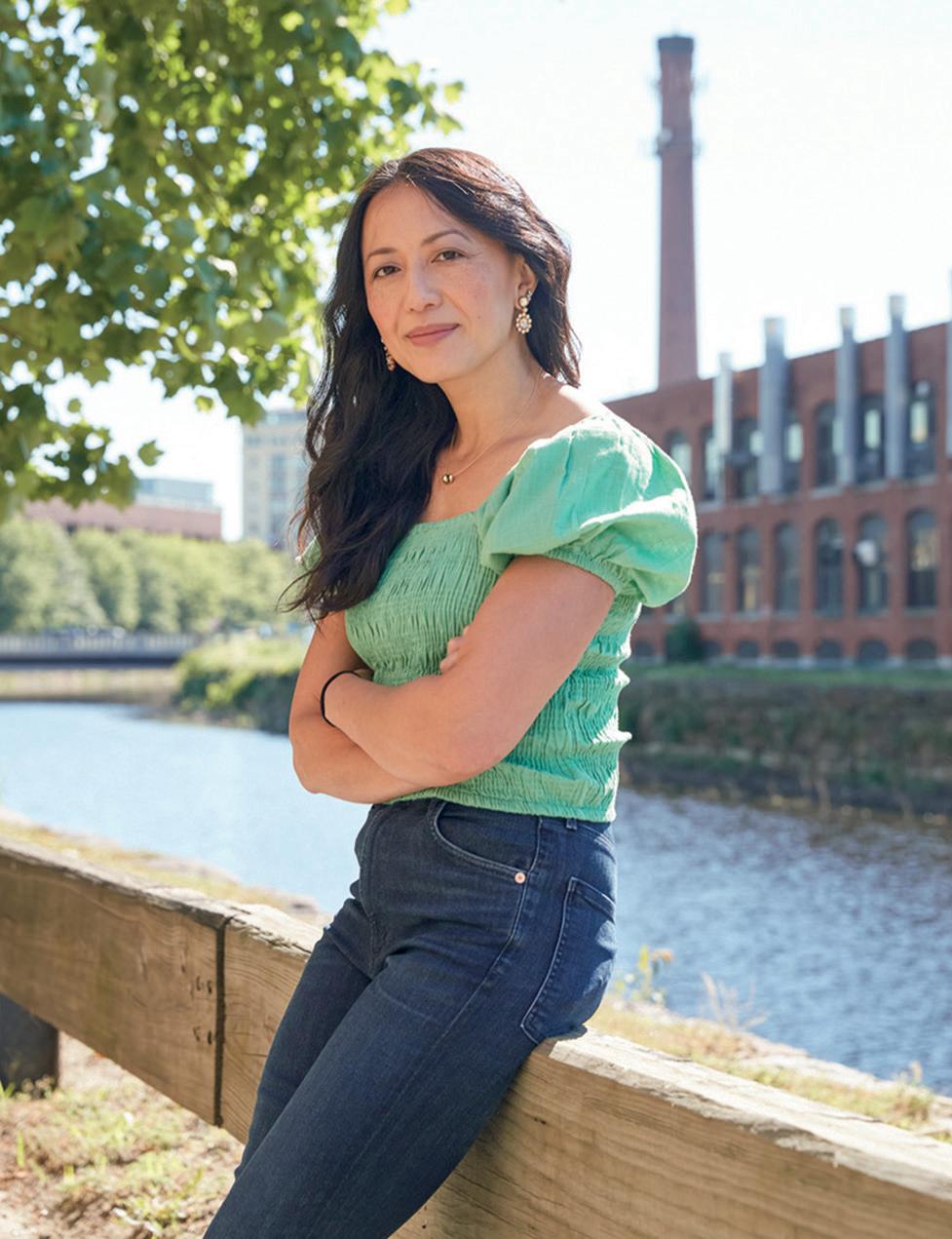
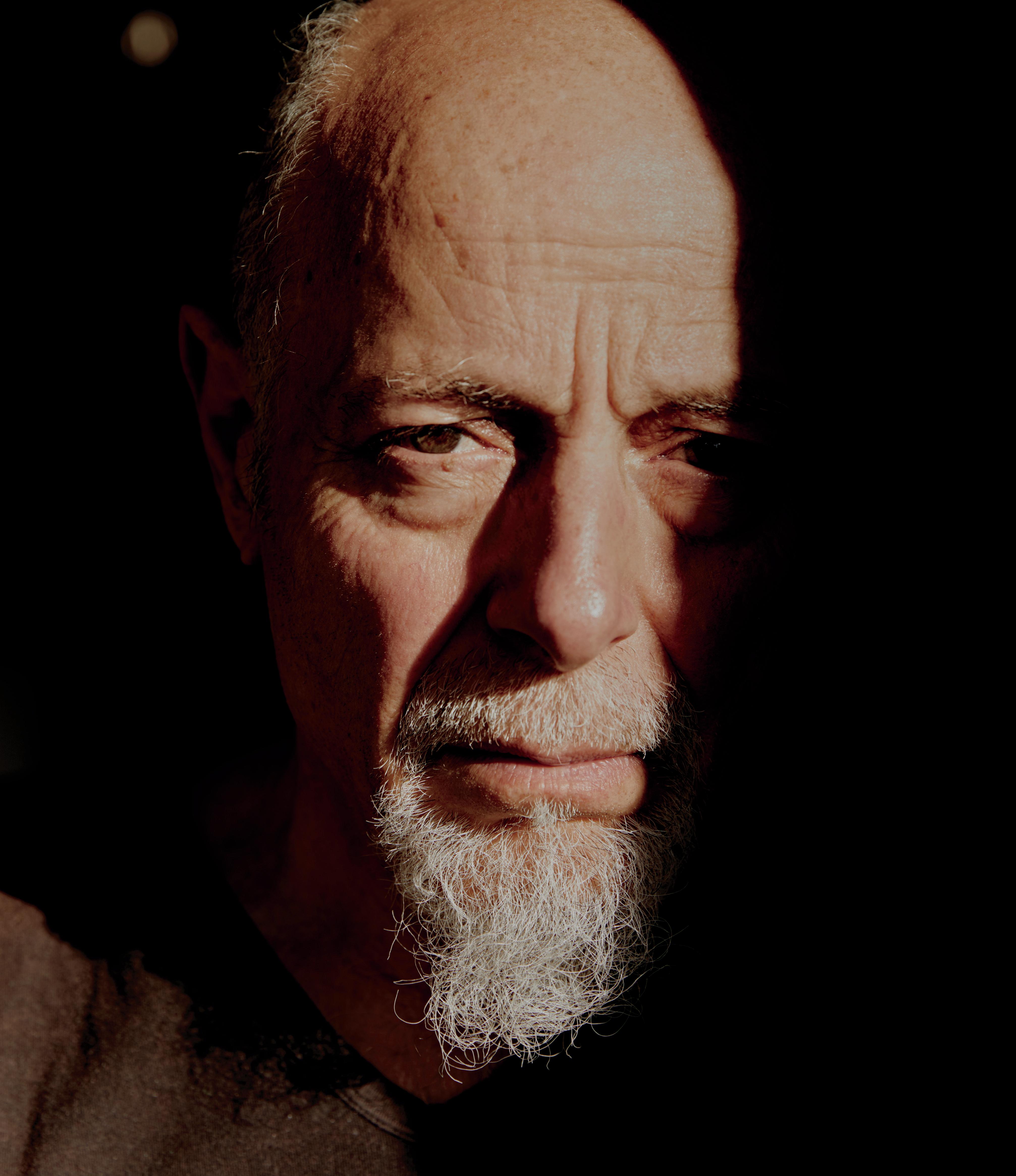
 BY
Artist James Michalopoulos ’74 has been influenced by the colorful, confounding streets of New Orleans, and in turn has influenced them.
BY
Artist James Michalopoulos ’74 has been influenced by the colorful, confounding streets of New Orleans, and in turn has influenced them.
“FOR ME, this was all about that guy in the background,” says James Michalopoulos ’74. He’s paused in front of one of his own paintings, hung amid a sprawling and colorful retrospective of his work. The show occupies a large gallery on the second floor of the New Orleans Jazz Museum, which is set in an imposing former US Mint building constructed in the nineteenth century at the edge of the city’s French Quarter.
The painting in front of him is uncharacteristically quiet and serene. All around him, his other works depict New Orleans musical royalty, a lineup of larger-than-life luminaries who all but burst of out their frames—Fats Domino, Mahalia Jackson, Louis Armstrong, Allen Toussaint. With his trademark style, which has been described as “rubbery” and “almost psychedelically distorted,” he makes the streets dance and the hidden lives of musicians pulse with energy.
But this one painting is quiet. It depicts three musicians playing their instruments: a sousaphone, a trombone, and a trumpet. They’re in what appears to be a dusky club with a wellvarnished wooden floor. They wear the traditional brass band outfits of dark pants, white shirts, black tie, and white marching band caps with peaked crowns.
The trumpet player stands far back, at the edge of shadows, looking downward. “I just made up a story about him,” Michalopoulos says. “He’s in his early forties, and he’s sort of stuck and lost in his life.”
Michalopoulos has for decades been capturing the people, streets, and scenes that animate this city on the Gulf of Mexico. In the four decades that New Orleans has been
his home, he’s emerged as the artist arguably most closely associated with it. His paintings are regularly featured at well-attended shows in city museums and galleries; he receives important commissions, both public and private; he has contributed six posters for the city’s high-profile Jazz and Heritage Festival; and he has spawned a raft of imitators who have copied his dynamic, vaguely surrealistic style. His work tends to be frenzied and expressionist, thick ridges of paint atop eskers of more paint. But his vivid tableaux are realistic in another way: they offer a clear lens into the city’s high-spirited life and high-stepping energy.
Yet spend some time with him and you’ll come to understand that it’s not just the people out front leading the nation’s longest and loudest party who capture his attention. He’s equally intrigued by those in the shadows.
“This reminds me of Edward Hopper,” Michalopoulos says, referencing an American artist who had an important influence early in his career. “In his paintings, if you scratched the surface, there’s this yawning despair.”
Michalopoulos is keenly attuned to those on the outskirts of the bright lights, those at risk of being lost amid the music and the dance, especially in a city changing as swiftly and dramatically as New Orleans. The neighborhoods have been gentrifying and are much more expensive. “The class composition has changed, and it’s not as hospitable for artists,” he says. “And I measure everything in that world by that yardstick.”
JAMES MICHALOPOULOS was born in Pittsburgh but largely raised in Connecticut, where his family moved when he was seven. His father was a noted architect and urban designer who happened to be an art collector, and Michalopoulos grew up in a household filled with the work of such artists as Braque, Picasso, and his uncle William Baziotes, the abstract expressionist.
Still, art was at the periphery rather than the center of his life. At Bowdoin, new interests steered him toward economics and politics— “You know, that was, like, a tumultuous period socially”—although art lingered at the margins. He recalled a series of paintings of farm animals on exhibition at the Museum of Art by Bowdoin professor Tom Cornell. “It was a series of
drawings of pigs, and they were exquisite,” he says. “They were elegant. They were beautiful. And I was just totally taken by it.”
The museum also offered him occasional refuge. This was the early ’70s, and of course he spent a fair amount of time on the Quad, often with Frisbee in hand. The museum was right there, and so he would slip into the quiet of its muffled galleries. “It was a place for me to repair to on occasion,” he says. “It was a good influence, and you know, so much [of life] wasn’t back then.”
He also worked off campus in Brunswick in a food co-op, and took that experience to the Boston area, where he helped launch what would become one of the largest food co-ops in the region, located midway between MIT and Harvard. “We had 4,500 members. I used to cut cheddar cheese for Noam Chomsky,” he says. “Actually, I made that up. But I might have. I hope I did.”
It was on a vacation to Niagara Falls when art caught up with him. It turned out you could only admire the falls for so long, but in wandering around, an intriguing old house caught his attention. He began to sketch it and spent about four days doing so. At one point the owner came out, inquired as to what he was doing, and offered to buy his sketch. He made “about twenty-five dollars.”
He stepped up his sketching and painting after he moved to Washington, DC. On a whim in the winter of 1978, he decided to flee the snow and cold, and he hitchhiked to New Orleans with a backpack and some painting gear. “It was south and warm and exotic—so that was it,” he says.
He arrived at night and walked from the highway where he’d been let off toward the French Quarter, enchanted by the gnarled live oaks that created a canopy over the streets and the vibrant life that spilled off porches and onto the streets. “I was fascinated by all the vitality and the unique richness of it,” he says.
He returned to Washington and, the next winter, had a dalliance with Key West. “It was nowhere near as complex or rich as New Orleans.” So the following year he returned once again to the city on the Mississippi River. This time he remained for good.
IN THE MORE THAN FOUR DECADES since he arrived in New Orleans, Michalopoulos has been both influenced by the colorful, confounding streets of the city, and in turn has influenced them.

He began by sketching what he saw on the city’s byways, capturing random scenes and selling his work for a few dollars to get by. Outside a grocery store, he sketched people waiting at a bus stop and hustled to sell them the picture before their bus arrived. He worked for a stint as a courtroom artist for the local paper. He crashed in abandoned houses and lived in a truck for a time.
He sought out a permit to sell at Jackson Square in the heart of the tourist district, but
all 200 permits had been issued and he was met with a waiting list. So he moved around, painting and selling here and there, and for a time set up in front of a Bourbon Street restaurant at the invitation of its general manager, pushing a cart with his supplies and clipping his fresh paintings onto a gate for display. He rigged up a Vespa scooter with an easel on the back, a mobile plein air studio and gallery. He painted street scenes he sold to tourists and passersby. When they asked how much the paintings cost, he asked how much money they had.
He is primarily a self-taught painter, although he leveraged his skill by taking two classes on figure drawing at the University of New Orleans
and the New Orleans Academy of Fine Art. As his skills improved and his vision sharpened, so did his situation. His work started to sell in places other than on street corners—his first show was at a pizza parlor—and a few galleries asked to feature his work. New Orleans began to take notice. Along the way, Michalopoulos started to develop a distinct style: a sense of place that captured New Orleans in a way that hadn’t been seen before. In a city that’s long been famed for its unique, idiosyncratic architecture, Michalopoulos added another layer, animating the antiquated houses and spalling buildings. In his renditions, some structures seem at first to be sinking into swampy soils—a not uncommon occurrence
around the city, where lintels and cornices often skew at odd angles. But that’s just a springboard to a more ebullient quality, with some buildings seemingly controlled like marionettes enlivened by an outside force, some coming to life on their own in a way that’s both charming and alarming. Upper floors sway one way while bottom floors move another. Perspectives change, violating every canon of classical art.
And then there’s the color—vibrant hues of rich cobalt and crimson, and night skies streaked with indigo and magenta and dotted with luminous crescent moons, all conspiring to create a sense of motion and dance, a vivification of an inanimate world.
“I think there is a quality of movement in most of it,” Michalopoulos wrote in his notes for the show at the Jazz Museum. “I love the lyric that life can be: off-kilter, chaotic, and colorful, a kaleidoscopic unfolding. I try not to interpret too much because I believe it stifles the work.”
With his growing artistic success came financial stability, and then some. He acquired several properties. He bought and lived in an old beer warehouse just off Frenchmen Street, using a dozen paintings for a down payment. Inside, he experimented with perspective and materials in full scale, and created a whimsical space of chain link and tin and improbable balconies.
He ventured into other businesses, opening a well-regarded restaurant in the nearby town of Covington (since closed). He spent time in France at the encouragement of a patron and eventually bought a home in Burgundy, where he created a studio in an old barn. He also purchased a 700-year-old defunct tile factory along a river, with the idea of making tiles there once again (pending).
While in France, he came to appreciate the nuances of local wines and wanted to bring that locally grounded approach to adult beverages to New Orleans. The Gulf South is inhospitable to grapes, but sugar cane grows in abundance. He opened a rum distillery in 1995, making it the first craft rum distillery in the nation in over a century. (There are now well over 200 American distilleries making rum.)
In the early 2000s, he acquired a cluster of old buildings on Elysian Fields, where he set
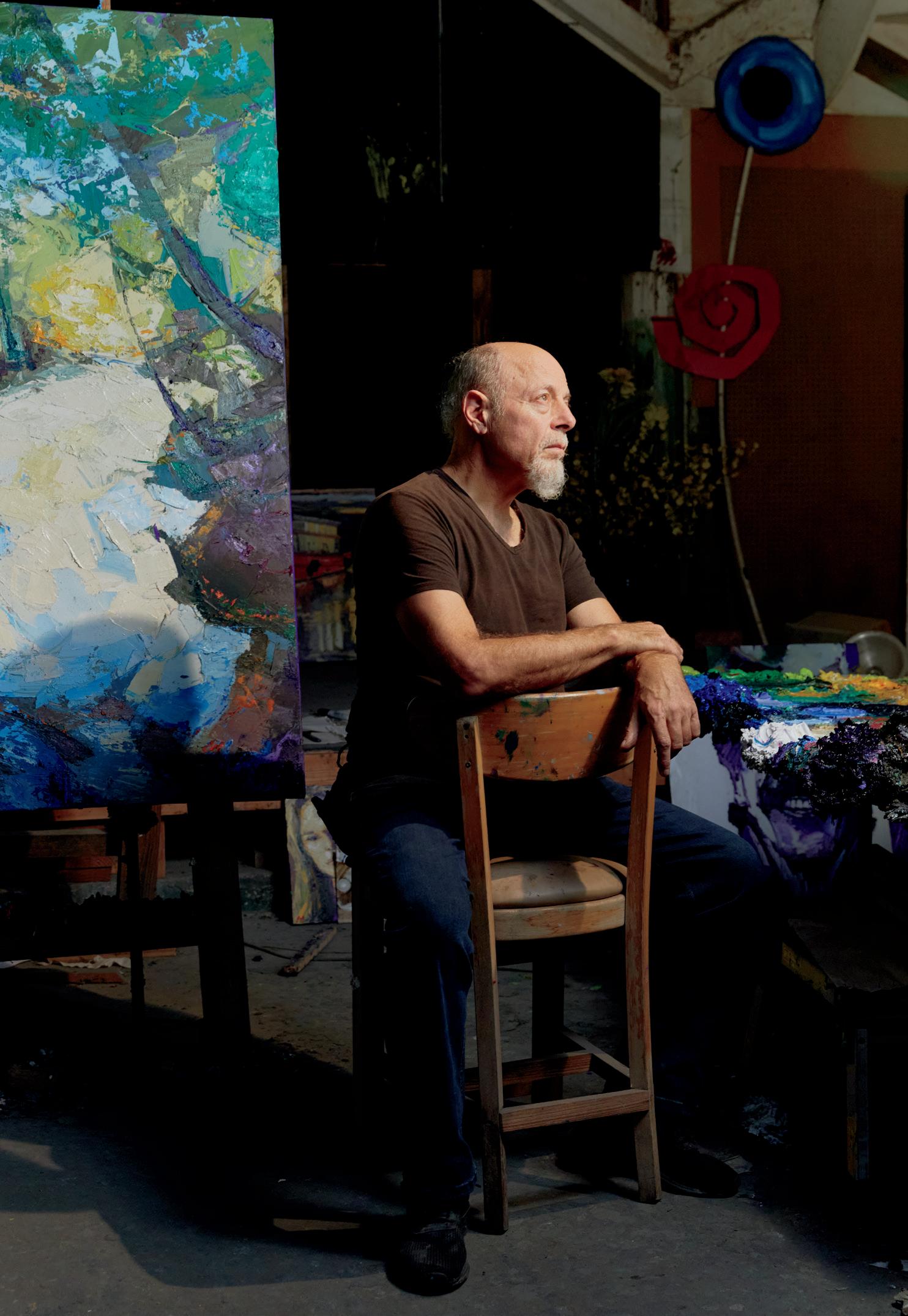
IN A CITY THAT’S LONG BEEN FAMED FOR ITS UNIQUE, IDIOSYNCRATIC ARCHITECTURE, MICHALOPOULOS ADDED ANOTHER LAYER.Michalopoulos in his studio, with a new painting, Water Ways to Go, in progress on the easel.
up his studio. The main building is sprawling and drafty, with soaring ceilings and ponderous beams and gaps that offer glimpses of the open sky above. In the middle of this interior acreage is an easel and a large, partially completed canvas, surrounded by great piles of empty boxes and spent paint tubes, as high as snow after a plow moves through a street in Maine. Some dusty caskets sit along one side, a reminder that these buildings were once a funeral home. Paintings in various stages of completion lean against the walls here and there.
Even with the demands of keeping track of his expanding businesses, Michalopoulos spends much of his day in this sanctuary, at
his easel. Sometimes he listens to music as he paints, sometimes he doesn’t. His multicolored oils are layered on thickly, chiefly with a palette knife. When he picks up a brush, it’s often to use ends opposite the brushes to make ridged stripes and striations in the oils. The paintings have a dense, tactile feel, as if capturing movement unawares.
He’s best known for his architectural paintings, but his eye wanders. He’ll paint musicians for a while, and then “go the other way,” as he puts it, and return to painting houses. “Or sunflowers,” he says. “I couldn’t get away from sunflowers for a whole summer two years ago.” For a time, he went through a cow phase.
With his paintings of musicians, he says he often does several studies—for a portrait of Louis Armstrong, for instance, he says he might do a dozen different versions of his face and expressions in order to get it right. Once he feels he’s getting close, he takes off, with his palette knife moving in rhythmic strokes to fill its broad outlines. When the painting feels right—maybe in a day, maybe in a couple of days—he signs it, marking that it’s ready for the gallery. If not, it remains against a wall, unsigned. He may come back to it the next day, or the next month. Or not at all— abandonment happens, he says. He shrugs.

Michalopoulos at the keys of Fats Domino’s piano on display at the New Orleans Jazz Museum as part of the retrospective From the Fat Man to Mahalia: James Michalopoulos’ Music Paintings
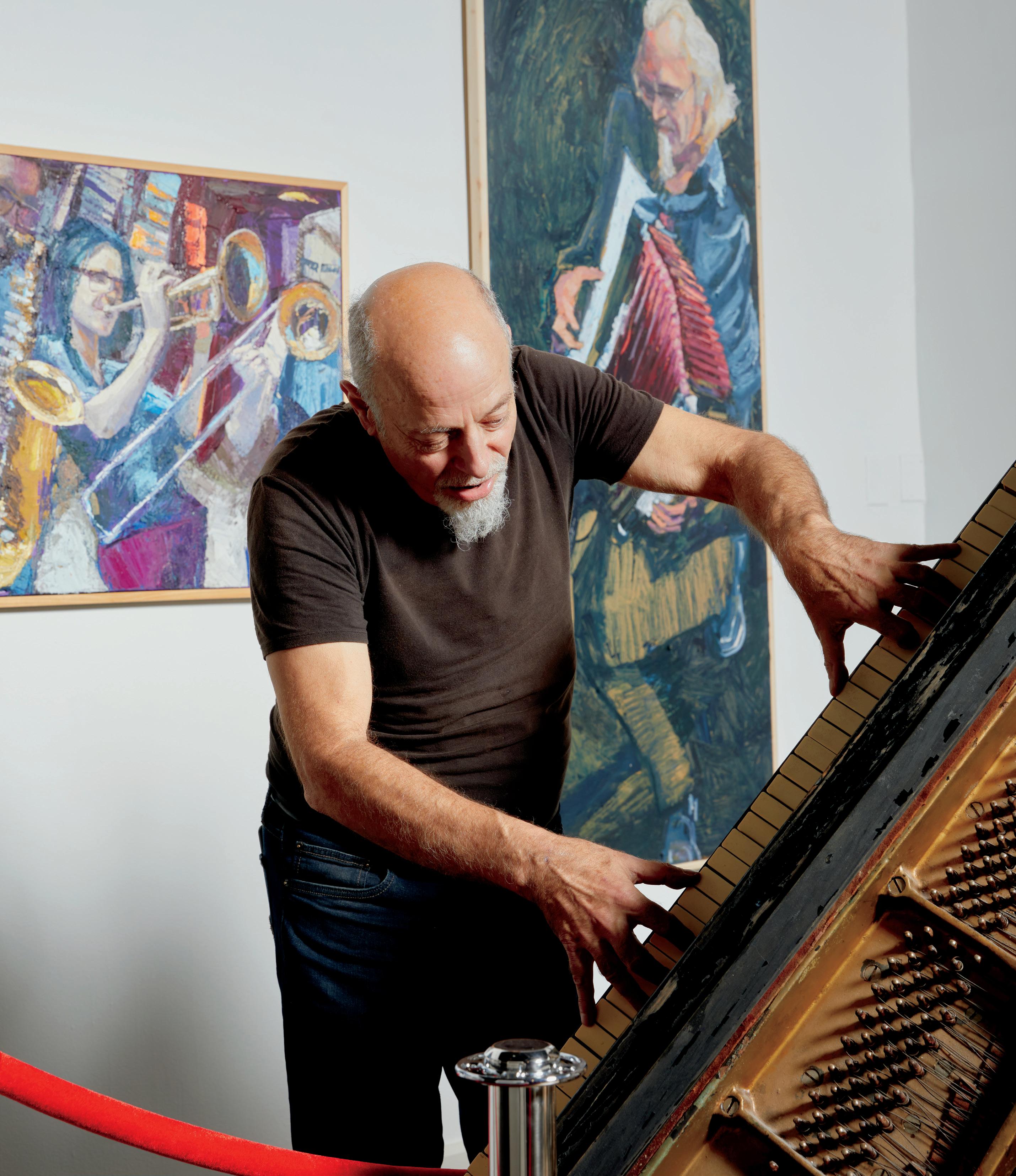 Writ Large and Blunder Busker hang on the wall behind him.
Writ Large and Blunder Busker hang on the wall behind him.
THROUGHOUT ITS THREE-CENTURY HISTORY, New Orleans has suffered tremendous peaks and valleys—frequent floods, yellow fever, fires, devastating hurricanes. That’s no less true of the past half century. New Orleans suffered vast population loss as the integration of schools and public facilities caused white families to flee to the suburbs. Widespread destruction followed Hurricane Katrina in 2005. But New Orleans soon rebounded, as empty-nesters and creativeclass types were drawn by an urbanity that lies less on a heroic scale and more on the intimacy of the streets, the wanderings of which lead to aromas from a relentless culinary scene and sounds emanating from a vibrant cultural life.
Change implies loss—as one group gains, another loses. That might be the natural evolution of cities, but lately it’s resulted in a rapid gentrification, as one group moves in another is displaced. Michalopoulos is pleased that many of the century-old homes once destined for termites and slow rot are being restored and preserved. But he acknowledges that this comes with unwelcome results—as longtime residents are pushed out of the city, the personality of the city alters. There’s a sense that the old spirit of the city is starting to erode.
“It’s a city where people were encouraged to take risks,” he says. But as rents rise and new residents complain of loud musicians parading through the streets, something becomes lost.
“The base of our culture is celebration,” he says. “Our fundamental engagement in this city is finally religious, even though it looks depraved. It’s a kind of indulgence in service of liberation.”
He notes that Mardi Gras in recent years has become less a joyous celebration of personal creativity and has edged toward a generic, could-be-anywhere party scene. “We treat very casually the wealth that we have,” he says. “And you don’t really appreciate the beauty until it’s not there and it’s all just Bud hats. And you go, ‘What happened?’ It’s a wake-up call.”
When Michalopoulos arrived in the late 1970s, New Orleans was a place where an artist with little means could find a place to land and to grow personally and artistically while just getting by. “The city was always an inexpensive place to live, and it’s turned into an expensive place to live.”
He’s quietly set about doing a small part to reverse that. Among his acquisitions was a compound of old semi-industrial buildings occupying a full city block, with parts dating back to the nineteenth century. It was once home to a beer distributor, whose horses to pull the beer wagons were stabled across the street, and then a paper and box warehouse. “This was a chute for hay,” he says, pointing out a recess in the wall as we walked through one afternoon. “Well, that’s what they say. I think it was probably a chute for paper. Either one, though, it makes sense.”
The 110,000-square-foot complex is in an unlovely but relatively central part of the city, next to a road overpass and a train yard. Michalopoulos and his crew have been gradually converting it into a warren of more than a hundred artists’ studios, which he’s leasing out at reasonable rents. Painters, sculptors, and musicians occupy studios that range from compact to spacious.
“It’s about creating a safe harbor for expression,” he says. “Mostly what we’ve done is artists’ studio space, but we’re looking at a shift into actual housing. We’ll see how we do with it.”
Across the street he’s bought up several ramshackle homes, which he’s in the process of converting into affordable living quarters loosely following a cohousing model, with spaces both private and public for residents. “For me it’s an experiment in a novel idea,” he says. “Here we can live in an environment that will protect us and let us do our thing.”
HIS NEW WORK SUGGESTS he is boldly exploring new realms—beyond cottages, sunflowers, and cows. In a large alcove of his studio, next to two very dusty caskets, were his newest canvases, still drying. They were to be patched into one long canvas when installed, extending twenty
feet and depicting vast, swirling scenes of the galaxies and cosmos. Like most everything else that he produces, this painting is the antithesis of static and still. The stars pulse, the galaxies swirl, the cosmic gases seem to quiver with expectation.
The work was commissioned by a health sciences school and was to be installed atop a wide set of stairs. It would create the impression that students are ascending toward the stars. In other hallways, some of his other paintings are hung, including some large semi-abstract canvases inspired by microbes and other microscopic miniatures. “This is a hematological thing,” he noted of one. “At a certain point they become much more like an artistic expression rather than an illustration,” he says.
The space between a pensive horn player lost in thought at a club—a study in incertitude, someone at once the center of and on the margins of that painting featured at the Jazz Museum—to his cosmic new work exemplifies how far Michalopoulos has traveled in his mind, venturing to the far edges of the universe, capturing everything in between in a gyre of unseen motion and swirling colors.
“It’s a fair amount of anarchy, and then correction,” he said once of his creative process. “There’s a tendency among a lot of people toward refinement. I’m about to funkify that.”
Wayne Curtis’s writing can be found in publications such as The New York Times, Wall Street Journal, Bon Appétit, American Scholar, The Atlantic, and Yankee, among many others. He’s contributed to the radio show This American Life and is currently a contributing editor at The Daily Beast and Garden & Gun
Daymon Gardner is a photographer based in New Orleans. See more of his work at daymongardner.com.
“THERE’S A TENDENCY AMONG A LOT OF PEOPLE TOWARD REFINEMENT. I’M ABOUT TO FUNKIFY THAT.”
 BY MARY POLS ILLUSTRATION BY FRANZISKA BARCZYK
BY MARY POLS ILLUSTRATION BY FRANZISKA BARCZYK

Alumnae from across five decades convened in September to share stories of their Bowdoin experiences, both joyful and difficult. They celebrated female leadership and fortitude in the early days of coeducation, in the present, and into the future. When Bowdoin opened its doors to women, the College wasn’t prepared for the actuality of female students. Things had to change. Bowdoin women asked for that change, took the lead in creating it, and continue to embody transformative power as cultural and societal perspectives shift.
DORA ANNE MILLS ’82, P’24 remembers a key moment during her tour of the Bowdoin campus as a high school senior. Like many women of her era, she’d been encouraged to apply by male relatives who were alumni from the days before women could earn a Bowdoin degree— in her case, two uncles.
As the tour circled the Quad and reached the Visual Arts Center, the guide segued into the topic of Bowdoin’s shift to coeducation. In the fall of 1977, coeducation was still relatively new.
Mills listened, thinking that, for the guide at least, there seemed to be a correlation between coeducation and the new art building, which had opened in 1975. This sent a message that Bowdoin expected women students would need and appreciate arty things—soft humanities— and had delivered. “I don’t know how explicit it was,” said Mills, who was planning to major in biology and would go on to earn a medical degree. Today she is the chief health improvement officer of MaineHealth, the state’s largest integrated health care system. “But it definitely made an impression.”
In all likelihood, that was intentional. By the time the Governing Boards voted in favor of coeducation in September 1970, arguably the most monumental moment in Bowdoin’s history since its founding, there had been several years of discussion about what women would want and need from Bowdoin. There was consultation with peer institutions that had already started the process of coeducation—this was a trend nationally—and sharing of findings. An ad hoc committee studying coeducation had said expansion of the College’s art instruction facilities was already advisable, “even without the introduction of women.” With them, it said, “it becomes imperative.”
Women didn’t “necessarily bunch up” in the humanities, the committee said, but the College still might need “to give wider offerings in music, art, and languages.”
From the hindsight of fifty years, it might seem as though Bowdoin’s leaders initially approached coeducation the way a group of Jane Austen’s better bachelors might plan a dinner party.
Women were to be welcomed—there was hope they’d elevate the discourse, smooth out some of Bowdoin’s rowdier edges, and help the College
grow—but what women would want and how they would fit in was a puzzle.
Incorporating women fully into Bowdoin’s culture, both as students and as faculty and staff, would ultimately take a full generation and lots of campus leaders, many of whom honed their skills by pushing back against tradition. This past September, alumnae from across those years, including Mills, gathered virtually for a two-day celebration titled “Leaders in All Walks of Life: Fifty Years of Women at Bowdoin.” They shared stories of both joyful and hard times, and considered the meaning of a fiftieth anniversary and coeducation becoming what some might describe as “officially middle-aged.” “It seems a real corner turned,” said Marilyn Reizbaum, Harrison King McCann Professor of English and the director of the Gender, Sexuality, and Women’s Studies Program.
As tends to happen whenever a vital corner is turned, Bowdoin’s women are looking back at the progress forward. Even for women who loved their Bowdoin experience, who have sent their daughters to the College, or who work there today, not every memory of being a student in those early days is sweet. As they look back, they’re doing so with more awareness than ever of the complexities of gender and sexuality and the essential need for equity and inclusion.
They’re also highly conscious of how impossible it is to separate the time spent at Bowdoin from the eras themselves. In the tumultuous ’70s, Bowdoin was part of a wave of coeducation happening at colleges in the Northeast, including Princeton in 1969, Wesleyan in 1970, Dartmouth in 1972, and Amherst in 1975. The national conservatism of the ’80s was reflected on campus and so too was the shift to a more technology-connected and -driven world in the ’90s and ’00s, as well as the social justice movement of the past decade.
“I think it was no different from any other school that coeducated at that time,” said Melanie May ’82. She never felt excluded or discouraged. She worried more about socioeconomic differences with her classmates than the issue of gender. She had strong friendships with men.
But May and other alumnae also describe some blurred lines. Or, for some, there was
a sense of not fully belonging. And, in some cases, that feeling lingered until the final markers of patriarchal history specific to Bowdoin fell away, including changing the college alma mater from “Rise Sons of Bowdoin” to “Raise Songs to Bowdoin” in 1994; the number of women in the student body edging out men for the first time in 1992; the decision in 1997 to end fraternities; and, finally, the first gender parity of the faculty in 2009.
“I hear more stories as an alum than I ever knew as an undergraduate,” said Bridget Spaeth ’86, who has worked at the College since 2002 and is currently academic department coordinator for earth and oceanographic science. That was one of the reasons she and other organizers of the September events wanted to focus on both the impact of women on the College and the impact of the College on women. The #MeToo movement has changed how many women look at their pasts, Spaeth said. “I think all of us have more language now and some perspective for unpacking all the dynamics in the classroom with faculty, with peers, in social life, leadership, and just student opportunities.” She, like May, points out that in the ways it may have struggled to be truly inclusive of women, Bowdoin was far from unique. “A lot of institutions were dealing with this.”
Coeducation began in earnest with the admission of the Class of ’75, but for several decades, women arrived at Bowdoin without understanding that the process of coeducation might still be ongoing. “I had no perspective,” Kate Dempsey ’88 remembers of her eighteen-year-old self. “Twelve years is actually a really short amount of time in the history of any organization.”
The first woman to serve on Bowdoin’s Board of Overseers, and later a trustee, the late Rosalyne (Roz) S. Bernstein P’77, H’97 described the early women at Bowdoin as “tough” and “gutsy” in an interview before her death. That description fit Bernstein herself. When she joined the board in 1973 she vowed to be a positive presence, never a token. She would not be, as she told then-president Roger Howell when he asked if he could nominate her, a shrinking violet. “When I went to my first meeting, you know, everyone was most cordial,” Bernstein said. “But one guy said to me, ‘I’m very glad to meet you, but, you know, I still think women don’t belong at Bowdoin.’” Fine, she said, then politely reminded him he was in the minority.
And he was. But all the way through the ’70s and ’80s, men like him popped up, often in the pages of the Orient, to express similar views, as if coeducation might still be dropped, like a curricular requirement or an unpopular club, if enough people complained.
In those early years, there were many battles to be fought, from asking for better gynecological care (and birth control) and for resources in athletics to getting protections from sexual harassment to making sure women were treated with respect. Sometimes it was language (referring to a “girls’” team when its counterpart was the “men’s” team) and resolved relatively easily. Cultural issues went deeper, and in many cases, the passage of time was the crowbar that ultimately led to their removal. In those early days, particularly, there were no ground rules around relationships between faculty and students. One woman remembers the awkwardness of receiving an unexpected and undesired marriage proposal from her professor upon her graduation. Another recalls sitting across from her professor at the Chuck Wagon restaurant as he complained about another student who had just broken
up with him. Then there were rumors about a powerful professor who drove more than one woman out of his department, either through snide criticism or outright sexual trespass.
“We knew we had trouble with some professors,” Roger Howell said in an interview about coeducation in 1980, two years after he stepped down from the presidency. Howell was frank about what still needed work (security, facilities, and equal access for women on the faculty) as well as the College’s lack of preparedness for coeducation. “We stumbled through it,” Howell said. “I think with the help of an awful lot of good grace from the first couple of years of students that came through the program.”
Those classes were mighty in spirit but small out of necessity; the College simply didn’t have
“Women were gaining more leadership roles. I feel like we kind of bridged the old and the new.”
—JEN GOLDSMITH ADAMS ’90, P’21
“STUDENT PASSION REALLY IS WHAT GETS THINGS GOING AT BOWDOIN.”
—BRIDGET SPAETH ’86
the facilities for women, including enough dormitory space or places for them to eat. Most students relied on fraternity kitchens for their meals. (In that era, Moulton Union had capacity to serve about 280 students, and Wentworth, in what is now Thorne Dining Hall, could feed about 300.) Generally speaking, Bowdoin’s first women students could eat in the fraternities, but policies varied, with some fraternities drawing the line at full membership or allowing women to live in the buildings. Others fully embraced them; Psi Upsilon elected Patricia “Barney” Geller ’75, P’08, P’12 its president the spring of her first year.
Yet despite such markers of acceptance, the early women at Bowdoin faced some hostility from their male classmates. The Orient polled students about coeducation and published the results in February 1972, along with some choice misogynistic comments. One commenter described “co-eds” as “a bunch of Helens” breaking down the walls of Troy. Another accused them of being wallflowers.
They were never bystanders, though. They took to the classrooms, and they took to the playing fields. A field hockey program began in 1971 and was officially named a team by 1972. It was coached by Sally LaPointe, who was married to men’s coach Mort LaPointe and who initially began coaching as a volunteer. Her first field hockey teams wore cast-off men’s soccer uniforms.
By the time Kate Dempsey arrived in the fall of 1984, planning to play field hockey, the team finally had uniforms, but they were shared with lacrosse, Dempsey’s other sport. Dempsey had formulated social justice instincts during her youth in Philadelphia, and so when she stood in line to get her BCAD gray shirts and shorts from the athletic department, she took note that the men were getting an extra piece of equipment. “Jockstraps,” Dempsey said. “There barely was such a thing as a sports bra then, but I just kept pestering people, like, ‘If the guys get jockstraps, can’t we get sports bras?’”
It was a little thing, she said, but “it was an emblem to me, of just everything. The difference between what the men were getting and what we were getting.” Around her junior year, the man behind the counter finally offered her
“ONE GUY SAID TO ME, ‘I’M VERY GLAD TO MEET YOU, BUT, YOU KNOW, I STILL THINK WOMEN DON’T BELONG AT BOWDOIN.’”
—ROSALYNE(ROZ) S. BERNSTEIN P’77, H’97
a sports bra along with her BCAD shirt. And the lacrosse team got its own uniforms.
Dempsey was one of many agents of change who spoke up and let Bowdoin know what its women needed. “Student passion really is what gets things going at Bowdoin,” said Spaeth. “Bowdoin is responsive to students when they organize.” In her era as a student, Spaeth notes, she saw students learning from mentors on the faculty, women who were very skilled at analyzing power structures and working within them.
But in the ’70s, the response could take some time. In May 1974, the Bowdoin Women’s Group sent a letter to the College, signed by both women and men, asking for gynecological services on campus and for the infirmary to be staffed differently: “Many students sense the infirmary is reluctant to deal particularly with birth control and related concerns because of their own traditional or moral values.” A letter from another group, the Concerned Black Women, noted that “A doctor that [treats] broken arms and legs cannot be expected to deal with the personal medical problems of women with the same expertise” and urged Bowdoin to make “necessary changes in the medical facilities.” Bowdoin did, although not until 1977, when a part-time nurse practitioner was hired to provide gynecological care.
By 1976, the total campus population had grown but was still male-dominated, with twice as many men as women. Men were accepted to the class of ’79 at a rate of 18.9 percent, while women’s acceptance rate was 12.7 percent. Professors were aware that higher standards were being unfairly applied to women. As a corrective, in 1976, the Governing Boards announced that Bowdoin would start admitting men and women in the same proportions that they appeared in the applicant pool.
As the student demographics shifted, women wanted a faculty that included more people who looked like them. Records from 1976 show a total of nine women teaching at Bowdoin, only two of them full professors, three of them instructors. “It was shocking,” said Linda Nelson ’83. She, like many others, can count on one hand how many women they had as teachers at Bowdoin: Joan Tronto in government; Barbara Kaster in English (“heroic,” Nelson said); Barbara Held, who
arrived in 1979 (“she looked younger than us,” Mills remembers of her psychology professor); German professor Helen Cafferty, who taught the first course that could be considered a women’s studies class, a literature course that focused on women in German literature.
The patriarchy was dominant, but it could not and would not remain so. “The arrival of women here started to shift patriarchal culture,” Nelson said.
Getting caught in the middle of a shift could be demoralizing. That’s what happened when Mills pledged Zeta Psi as a first-year. She hadn’t planned on rushing, but she and her roommate felt close to others in the frat, which had made room for women to be full members within the Bowdoin community. Three fraternities on campus were still limiting women to a “social” status only, but the faculty passed a resolution in February 1979 that they had to “be free of any discrimination based on sex,” with a twoyear grace period to carry out that resolution. The New York Times published a story about the resolution on February 6, 1979.
Then, in March, Zeta Psi received word from its national office that it had to either declare its women social members only or be cast out of the national organization. There was disagreement in the ranks, but the fraternity alumni, or “elders,” owned the building, and ultimately Zeta Psi closed its doors to women having full voting membership. The College didn’t have an alternative space where the Zeta Psi refugees could live together. “We got kicked out,” Mills said. “Now we were joining a small minority of people. There wasn’t another social network.”
But there was a striking counterpoint to that feeling of being excluded. The month after the Zeta Psi expulsion of women, Bowdoin senior Joan Benoit (Joan Benoit Samuelson ’79, P’12) was the first woman across the finish line at the Boston Marathon, breaking the previous women’s record. She did it wearing a Bowdoin singlet. One of Mills’s fondest memories is of being in Wentworth when “Joanie” came through the dinner line that night. Mills was in awe of her grit and determination, and she was surrounded by others who felt that way; she remembers every student in Wentworth rising to their feet to give Joanie an ovation.
In a 1981 letter to the Orient after Chi Psi went through a similar situation to Zeta Psi’s, Mills called on her fellow students, men and women, to be leaders and take a stand. Today Mills reflects on how Bowdoin and peer institutions were learning alongside their women.
“There is no road map as to how you should become coed,” Mills said. And she thinks of how these experiences informed her as she encountered sexism in “the real world,” particularly professionally, and gave her tools to deal with it.
“It was so blatant, so right out there,” she said.
“It did prepare me in many ways for being part of the male-oriented institution of medicine.”
Others were leading the way by carving out spaces for women. The Bowdoin Women’s Association had been accumulating a small
“History is so hard, right? Because I was able to contextualize the reality of the world in the ’80s, but it doesn’t make it all right at all.”
—KATE DEMPSEY ’88
library of books about and for women, and a group asked if that library could be housed at 24 College Street, a new residence for women. Approval was given, and the Women’s Resource Center was born in 1980.
“The founding of the Women’s Resource Center is a milestone action,” Nelson said. Nelson was openly gay and jokes that she was also “out as a feminist.” At Bowdoin, that made her feel as if she’d been dropped onto another planet. “It needs to be said somewhere,” Nelson said. “It was freaking hard if you did not want to assimilate.” She spent a year at Wesleyan and contemplated never returning. But she missed Bowdoin’s academic rigor and, when she went back, the Women’s Resource Center that she helped found was growing, along with student desire for a curriculum around women’s issues.
She sees it as a turning point for the College, and certainly, more awareness of women’s rights followed. The women’s ice hockey club was ready to be a varsity team and to be respected
as such. “We get ice after the high school and the naval base,” player Linda Miklus ’83 told the Orient in 1982. (The club became a team in 1984.) There was more recognition, and concern, about the role alcohol played on campus. A sexual assault of a student in Coles Tower in 1980, and another of a summer music festival student in 1982, raised awareness of a need for improved security. Security phones were installed around the campus in December 1982. Male students volunteered as a shuttle service, and some spoke out for women. After an offensive cartoon about trapping women in a room until they “submit” appeared in the Orient in early 1983, a member of the Class of 1986, writing to the Orient, decried what he saw as a “criminal lack of respect for women” on campus. Campuswide conversations about sexual harassment—and the need for a policy protecting students from it—followed, starting with a symposium called “Women/Men: Bowdoin and Beyond,” organized by a group of students, including Barbara Geissler ’85, as well as faculty and staff.
Their voices might not have brought about immediate change, but they were heard. In his Report to the College in early 1984, President Roy Greason called for more women on the faculty and staff, citing the need for women students to have them as role models and counselors. He described a “new will” to realize these goals. In the next self-study, in 1986, there was increased awareness that women’s unmet needs on campus had to be resolved. That included protecting them from sexual harassment within the student body. Efforts to identify offenders had been mostly unsuccessful, Bowdoin said. “It is increasingly clear that the College must undertake a much stronger educational role in this respect.” That same year, a six-week maternity leave for faculty and staff was instituted. The women’s singing group Miscellania asked to be able to sing the national anthem at hockey games; the Meddiebempsters had been territorial about owning the tradition at the highly popular events. Greason determined they should split the honor evenly.
Cultural programming in those days was dynamic and reflective of an institution seeking to include women’s voices, which benefited all.
Consider the fall of 1987, when Toni Morrison came to campus to speak about her new novel, Beloved, and academic Andrea Parrot visited to give a lecture about intimate relationships.
Then in November 1987, two women reported being sexually threatened and assaulted in a fraternity by two men they’d considered friends. The men were suspended, and then charged with violating Bowdoin’s Social Code by returning to campus after being told to leave, but for weeks a debate over whether this was a prank or a crime played out in the pages of the Orient
For Kate Dempsey, this was a pivotal moment. She and her friends had systems intended to keep each other safe around men and alcohol at parties. In retrospect, she shakes her head at how normalized such a response was, not just at Bowdoin but for women everywhere. “History is so hard, right? Because I was able to contextualize the reality of the world in the ’80s, but it doesn’t make it all right at all.”
“Many of us felt like it [the culture] was predatory and substance-driven,” Spaeth said. “Maybe we were just hitting it at a time when
“It needs to be said somewhere. It was freaking hard if you did not want to assimilate.”
—LINDA NELSON ’83
“IT NEVER FELT LIKE THERE WAS A GENDER DISPARITY.” —EMILY HUBBARD ’07
things had really devolved.” Physically, some fraternities had gotten run down; the energy crisis of the 1970s meant that more of their budgets were spent heating the places than maintaining them. Greason noted this in his annual report and suggested a connection between derelict houses and derelict behavior.
“One thing students from the ’80s will say is, we had leadership opportunities,” Spaeth said. “We were meeting each other’s needs.” In 1988, Greason formed a special board on sexual harassment, led by Kaster and mathematics professor Wells Johnson. In that same year, women’s studies was officially recognized as a minor (it became a major in 1992) and the Children’s Center was established on campus.
“It was an evolving time for women on the Bowdoin campus,” said Jen Goldsmith Adams ’90, P’21, now a Bowdoin trustee. She was president of Psi Upsilon and the Interfraternal Council. “Women were gaining more leadership roles. I feel like we kind of bridged the old and the new.”
Student gender parity had still not quite been achieved by the time a new president, Robert Edwards, arrived at Bowdoin in 1990. Women made up 44.6 percent of the student body. Just four years into Edwards’s tenure at Bowdoin, that percentage rose to 51.3 percent, but Bowdoin leadership was focused on what was still missing: “Many aspects of gender equity have been addressed, but many women on campus still feel their experience at Bowdoin differs from that of men, and that they have fewer opportunities to learn, to grow, and to succeed,” the 1996 reaccreditation report said. While in some cases fraternities had successfully evolved into coeducational social organizations, their very name, fraternity, “sends a symbolic message to women about their status in these groups, and perhaps at Bowdoin generally.” After a visiting student fell from the roof of Chi Delta Phi and died, Bowdoin convened the Commission on Residential Life to study the social and residential life at the College.
In 1997, after the Commission completed its work and submitted its report to the board, the College announced that fraternities would be closed and their buildings bought by the College to be transitioned to social houses. Some mourned, others felt relief. “I was glad,” said
Taryn Bowe ’99. As a first-year student in 1995, she’d found the fraternity and partying culture off-putting and unsafe.
The College was in a time of change, with plans to increase student enrollment by 10 percent over a four-year span while pushing forward with Bowdoin’s Diversity Plan, intended to increase diversity at all levels of the College. The expansion opened up new positions, and with them, opportunities for both women and minority professors. By the time Emily Hubbard ’07 arrived at Bowdoin from Memphis in 2003, the majority of her professors were women. “It never felt like there was a [gender] disparity,” Hubbard said. She worked as a proctor, and there, “I did have concerns for women in social settings at times. But I think it is just a reality of the culture that we live in. Any college is going to be a microcosm of that.”
As a Black woman in a class that she remembers as having only ten other African American students, she experienced a sense of being in the minority but “Bowdoin really went out of its way to make sure we were OK.” She said she viewed adaptability to a predominantly white culture as “akin to assimilation,” as well as a path to success. But fifteen years after leaving Bowdoin, Hubbard sees adaptability as a way to broaden one’s opportunities. For her, that included law school and now a job at the Department of Justice, where she drafted the department’s first transgender equity policy. “I loved Bowdoin,” she said.
What is Bowdoin today, at this landmark moment? It is a place made better by women. The offerings that were intended to draw women, from art to music to theater and dance, have made it a richer college for all. It is a place where Bowe, who lives in Brunswick, brings her children to the National Girls and Women in Sports day events hosted by Bowdoin athletes and revels in the atmosphere. “There are just some really badass women that are there.”
It is a place that continues to inspire Susan Graves Teare ’87, who left Bowdoin with lifelong friends (and a spouse), an old Minolta that would help set her on a path to a career in photography, and faith in herself. “I still hold the standards that I encountered at Bowdoin to this day,” Graves Teare said. “From myself, I expect great things. I expect to work with integrity
and authenticity in whatever I do to make a living and to enter out into my community with those values.”
For Marina Affo ’17, Bowdoin was a place where, yes, she could see “the remnants” of its former all-male existence, but it’s also the place where she made her closest friends and connected with most of the names in her “little black book” of professional contacts. It’s where she found the skills that have helped her fulfill her seventh-grade dream of becoming a journalist. “I would not be where I am today without people from the Orient,” she said. One of her editors there, Nora Biette-Timmons ’14, recommended Affo apply for an internship at ProPublica. “I told her, ‘I think it is a stretch, but I will do it anyway because I look up to you.’” Affo landed it, and only five years out of Bowdoin, she’s on the investigative team at The Philadelphia Inquirer Among her journalistic “gurus”? Veteran NBC correspondent Cynthia McFadden ’78, H’12 who checks in once a year or so to see how her young Bowdoin sister (and fellow Lewiston-Auburn native) is doing.
It is also a place that welcomes the daughters of its early daughters. Dora Anne Mills’s daughter Julia Mills Fiori is a member of the Class of ’24. Like her mother, Julia plans to become a doctor, but there is no chance she will count her Bowdoin women professors on only one hand.
Julia’s classmates are a diverse population that extends far beyond men and women. “This generation is much more aware that there are more than two genders,” Mills said. Reflective of that, the Women’s Studies Program that began in 1988 is now the Gender, Sexuality, and Women’s Studies Program. The Women’s Resource Center is now called the Sexuality, Women, and Gender Center (SWAG). Both are thriving. And when Julia took her tour, there was no meaningful pause at the Visual Arts Center. The Quad is barely touched by time, but Bowdoin has been changed—for good—by its fifty years of women.
Mary Pols works in communications at Bates College. Her father, Ed Pols, was a Bowdoin philosophy professor, and her mother, Eileen Pols, and sister, Alison Pols, both earned a Bowdoin degree in 1979. When niece Katy Reid graduated in 2005, they became the first three-generation group of Bowdoin women.
FOR SOMETHING LIKE the past five years, Sarah and James Bowdoin Professor of Digital and Computational Studies Eric Chown and Assistant Professor of Digital and Computational Studies Fernando Nascimento have been talking. They started out, in the way of things, just chatting in the hallways. But their conversations soon turned more structured. They knew they were not just enjoying each other’s company but learning from each other, one of them rooted academically in cognitive learning and the other in philosophy, both of them steeped in technology. After a time, their talks started to feel, in a way, urgent, like they were coming to something together that was crucial. That something is soon to be a book— Meaningful Technology: How Digital Metaphors Change the Way We Think and Live. In it, they seek to convey what they have come to understand in their talks and their work together: that metaphors are the main and most important way we understand technology, that science and technology rely on metaphor to come up with new concepts and innovations, that the intertwining of language and technology affects how we understand the world, evaluate our experiences, and prioritize our actions, and that our interactions with digital technology are more critical and impactful than we know. We join the two professors here mid-conversation.
Metaphors change the way we think about technology and serve as shortcuts to understanding— but they’re not always benign.
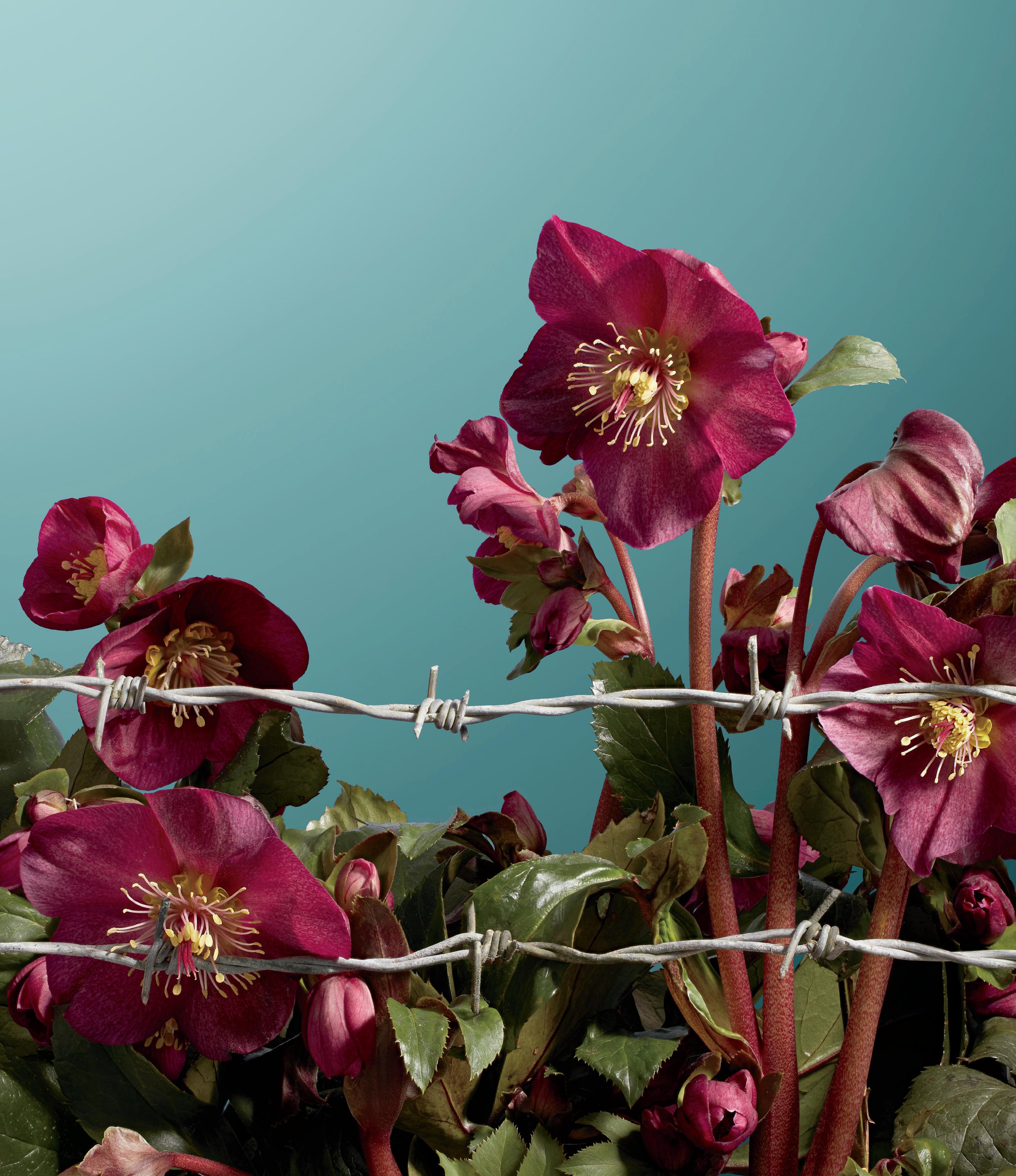 Eric Chown
Eric Chown






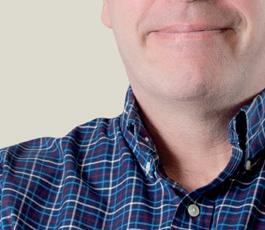

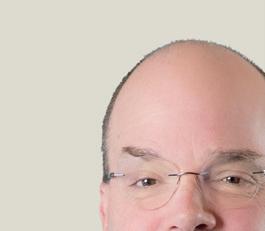 Sarah and James Bowdoin Professor of Digital and Computational Studies
Sarah and James Bowdoin Professor of Digital and Computational Studies
FERNANDO: Aristotle said, “The trait of a genius is to be able to make good metaphors.” We use the term “metaphors” many times in our work— not in a specific linguistic sense but in a very broad sense of semantic innovation. And what does semantic innovation mean? It means that you have a different experience in the world, and you have to make sense of it. You have to communicate. So you see one thing as another.
ERIC: We spent a lot of time making up metaphors and trying to solve hard ones. Like this Shakespearean metaphor “time is a beggar.” That stumped us for quite a while.
FERNANDO: I had read the description of the metaphor, so I told Eric, “Let me give you a metaphor, and next week you let me know what you think of it.” [Laughs] And the metaphor is “time is a beggar.”
ERIC: Which is not how Shakespeare expressed it. [Laughs]
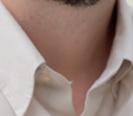

FERNANDO: But it’s the underlying metaphor we would say, right? And I imagine that when I said that you started thinking, “How can I see time as a beggar?”
One of the things we learned is that the text prompts you with associations. So metaphors are puzzles, and the context provides tips to solve the puzzle. Then the other thing that we started thinking about is, I am changing the idea of time, but I’m also changing the concept of beggar.
Philosophers tend to look at metaphor as a directional thing. They even say “the source” and “the target.” But when we start thinking from a basis of cognitive science, it changes.

is it’s always on. You don’t decide to learn; you don’t decide not to learn. You just learn.
Learning is too important to leave to chance. So, if you’re thinking about time and beggars, you can’t help but make connections between them. Meanwhile, your concept of time, your concept of beggar, they’re both active in your brain, and they’re both changing. Learning is constant change for us. In the early stages, we were completely concerned about the act of making a metaphor and uncovering what the metaphor was about.
But now we are more concerned about the lifetime, the metaphor as it changes, the impact of the metaphor in the way it changes your concepts and how you apprehend and understand the world.
FERNANDO: I believe that was the point where we started connecting the dots to get to DCS [digital and computational studies]. Maybe that’s one beautiful thing of the entire process. We started from our original home bases and slowly converged into the question of digital technologies. To me, one stepping-stone was the concept of practical wisdom. The idea of practical wisdom is that you need to have principles and rules, the laws. But every time you are faced with a different situation, a different person, a different day, it requires you to invent something new.
Parents know this; they are faced with that all the time. Digital technologies are changing our lives. All of a sudden, parents need to decide how long their kids can use their phones. There are no predefined rules that fit perfectly to the ethical dilemma created by the new technology. You have to invent something.
Fernando Nascimento Assistant Professor of Digital and Computational Studies

ERIC: That’s right. Part of my background is in learning and the neuromechanisms of learning. And the main mechanism of learning is called Hebb’s rule, after a neuroscientist, Donald Hebb. And Hebb’s rule is if two neurons fire at the same time, you strengthen the connection between them, and if this happens a lot, one neuron gets very good at helping the other neuron fire, and we call this “association” in psychology. Well, the thing about a rule like this
One could say your phone is just like ice cream. You can take a little bit, but if you take too much, it’s going to hurt you. So you are inventing something out of a rule that is “nothing in excess,” but applying it to something new. I believe that led us to this trajectory. I worked in software development, particularly mobile development, for many years, and my problem was, “How do I create metaphors to make it easier for people to use messaging applications in mobile phones?”
So we were thinking about this: How do we apply metaphors to create digital artifacts that are

usable? But then we realized that, because of this cognitive association rule, every time people are saying “I’m talking via SMS,” for instance, they are changing the way they think about talking itself. That was a huge moment, wasn’t it, Eric?
ERIC: Yes. I think another factor here is my graduate school advisor, even though I have a PhD in computer science, was a psychologist, and a lot of his work was on attention. And once you start talking about metaphor, once you start talking about phones, attention becomes so critical, because your phone is a device that is designed to grab your attention all of the time. And that’s a place where I’ve learned a lot from Fernando. My respect for philosophy has grown tremendously, but philosophy ?! . . . [Laughter] One of the things I like about Fernando is he’s practical. How does this stuff work in the real world?
Philosophy tends to be a little abstracted from that. I don’t think philosophers are talking a lot about what happens if you stare at your screen too long. That’s where cognitive science can say, “Hey, it turns out your attention is a limited resource, and it can fatigue. You can overuse it like anything else, fatiguing that has consequences, and we need to consider those consequences. We need to think about just how dangerous it is that your phone is constantly grabbing your attention.”
I had a student recently who said, “Professor Chown, two years ago I went to a camp, and I had to give them my phone for two weeks, and it was fine, and I liked it, and I got a refreshing break from it. And a couple weeks ago I thought, “Well, I should take a day or two off from my phone,” she said, “And I only lasted an hour. I couldn’t stand it anymore.”
That irresistible urge, that pull of attention, is one of the things that makes digital metaphors so much richer in some ways than metaphors people were talking about a hundred years ago.
BOWDOIN: Two things you were both saying are things you talk about in your book—one is the responsibility of the metaphor, the value that you put on the thing just by choosing it. And the other is your audience. If you had been talking to me you might say phone time is like wine, not ice cream, right? [Laughter] But you chose

ice cream because you knew that it would work as a metaphor for your child. But what is the responsibility of the metaphor, whoever chooses the metaphor?
ERIC: You’ve sort of anticipated some of our current research, digging deeper into analyzing those metaphors and thinking about, is there a framework that we could take a metaphor, Facebook’s friendship metaphor or the heart as a “like” symbol, and kind of dig into those issues of responsibility and knock-on effect, how well the metaphor actually communicates about the product? Now we’re moving more to what Fernando was saying, the DCS phase of it. Is it okay that it’s happening and what are the consequences?
FERNANDO: One of the exciting points was when we realized we were kind of proposing a new method of analyzing digital technologies, what we call a cognitive hermeneutics approach, as something that captures a deeper way in which technologies are changing our lives. How technologies change the way we think, and how deep it goes changing our lives. Facebook is a metaphor, right? It’s a book of faces.
It’s not neutral. It’s never neutral. Technologies are not neutral. Because they tie a certain type of association, they always have an ethical valence. So in this case, it triggers ideas of face, of beauty, of representation. That’s embedded, even if we don’t explicitly recognize that.

The other interesting thing is that all these big tech are expressing their metaphors in English, and that’s in itself a form of colonialism, because for Portuguese speakers or for Spanish speakers, Facebook is just the thing, the act itself. That’s true for most of digital technology’s vocabulary, and it creates an unbalanced situation from the beginning. Even to code, the software code is full of metaphors, and those metaphors are expressed in English. So we are exploring how to propose competing metaphors that will make clear those biases and unveil other possibilities.
ERIC: A classic metaphor is there are “white hat” hackers and “black hat” hackers. White hat hackers are ethically good and black hat are doing bad things. It’s a metaphor that conveys a
lot of information, but it says white equals good, black equals bad, right? And it just reinforces that concept.
So, sure, it’s easy to understand. But what’s the cost of that understanding? Are there other metaphors that are easy to understand but don’t have associations that we don’t want to keep reinforcing in our world?
FERNANDO: And metaphors are also rhetorical. They have a persuasion of power, and that persuasion can be used to communicate, but it also can be manipulating. Another metaphor that is very common is cloud. So your information is going to the cloud. What is a cloud? So we say, well, a cloud is something that is up there. I don’t mind that much unless it rains a lot.
It’s safe. It’s out there. But what is not in this metaphor? And that we need to see. One of the things that is not is that, unlike clouds, data is solid.
Data makes the difference. Apple will become a $3 trillion dollar company next week, in a large portion because of the cloud. So the cloud is not vapor, it’s not gas. It’s very substantial.
ERIC: Apple has cultivated this metaphor that their products are a walled garden. And that brings associations. Oh, a garden, that’s nice, and it’s walled, and it’s protected from the outside world.
But, in that metaphor, Apple is trying to control that conversation. Those associations are subconscious. We’re not aware of them, but they’re happening. If I hear “garden” I can’t help but think, “Oh, that’s lovely.”
Again, going back to how learning works—I associate that with Apple, I therefore think more positively about them. So these metaphors can seem very benign and simple, but can actually have a big impact.
BOWDOIN: One of the things you talk about in your book is combining these two ideas, association and intentionality. You talk about how the metaphors used to explain the COVID vaccine to people all failed on some level, at least with a certain amount of the population. How important is it that people in STEM understand that, and how do you in DCS teach that?
ERIC: Just last week I had my students read book reviews and articles about how scientists talk to the world and another set about how to argue effectively. Research shows that, in terms of argument, facts don’t work very well. But scientists are trained in facts, and that’s how scientists argue with each other. When it comes time to talk to the public, facts are helpful as a buttress to what you’re saying, but the public wants to hear narratives. They want to hear “How does this impact me?”
One reason I’m at Bowdoin is because Bowdoin cares very deeply about communication. Scientists need to learn how to communicate the way everybody needs to learn how to communicate. Scientists need to think more deeply about the metaphors they choose. They need to think and communicate effectively with narrative.
Fernando does it usually in terms of ethics, but the same arguments apply to, “Okay, we’ve made this amazing new vaccine, the science says it works. That’s all that matters.” But people are like, “Hey, wait a minute. What’s it gonna do? I don’t understand that. I’m cautious about that.”
And so we need to bridge that gap. In a way, our book is about using metaphors to bridge those gaps. One of the things we’ve seen in the last two years is that scientists are not necessarily succeeding.
FERNANDO: I started as a software engineer and worked many years in software. And my training was all about efficiency, how you write better algorithms. The companies I worked at, including Google, were all about optimization. So we were very, very attentive to how we were creating things, but not necessarily why we were creating them. I collaborate on another project called Computing Ethics Narratives. What we are doing is creating a framework to embed narratives that help computer science students think about ethical implications.
Because everybody recognizes that, up to now, we’ve been creating digital technologies, and then we see, “Oh, now we have a democratic problem. People are killing each other because of Twitter. Let’s go back and try to fix it. Facebook is creating problems for teenagers. Let’s try to go back.” And that’s very complicated.
“Technologies are not neutral. Because they tie a certain type of association, they always have an ethical valence.”
—FERNANDO NASCIMENTO
This is what we call the a posteriori ethical approach to digital technologies. You build, and then you try to solve problems. We believe that thinking about metaphors in narratives is a way to upfront these ethical questions, and that’s where the liberal arts education makes a difference. Because, yes, we are going to have computer scientists, engineers, biologists—but they are also thinking about the common good.
ERIC: As you were telling that, it reminded me of what I consider to be one of the moments that led to the genesis of DCS at Bowdoin. A group of us were in a meeting, and I really think of this as the crystallizing moment. A faculty member—it might’ve been Pamela Fletcher [’89], who was my codirector at the time—said something about how in the humanities we ask what, how, and why. Why are you doing that? And I’ll never forget this as long as I live. [Laughs] There were a couple of STEM faculty in the room, and they looked up at her and they were like, “Why would I ever do that?”
To them, the production of knowledge was all the why you needed. You didn’t have to stop and ask, “Is it a good idea to learn about this thing?” And it just hit me like a ton of bricks.
BOWDOIN: You talk about the difficulty once something is loose in the world of making it better. And you mention that from the beginning it’s unequal, it’s not fair, it’s not equitable. What is the responsibility of DCS or of faculty like yourselves? How do you even start to correct that?
FERNANDO: One of the things that became clear to us is that the common good is the goal, not only because the College says that, but because all of our reflections led to this point. One of the things we have been discussing now is to what extent our cognitive system is set to foster behaviors and actions that are better for the common good. What are the ways we can embed mechanisms to impact how we think, how we interact with others? So the other is not just a means to an end, but is always an end in itself, as the Kantian principle would say.
Permeating many of these discussions is the digital divide, this additional layer of inequality that has been created by digital technologies.
It’s not only that you cannot access broadband, which is absolutely true. Sub-Saharan Africa has a real problem in terms of how long they have electrical energy, power. So imagine having reliable internet.
So this is one layer, and many people stop there. But on top of that—okay, you have an app, but do you know how to use it? And part of the problem is that all metaphors, as we said, are USor rich-world-centric, and that’s a huge cognitive gap. It’s another layer of the digital divide.
On top of that, you have what we’ve been calling the algorithmic divide. We start to realize how the news in our timelines changes the ways we think, our priorities, what Eric was saying. The algorithms behind Facebook, Instagram, Twitter, they have immense power on us. How many of us can recognize that?
BOWDOIN: And, even if you do recognize it, to your earlier point, you’re not aware of what your brain is doing in terms of association and learning.
ERIC: That’s right. I’ve had a lot of discussions with my students about the digital divide and about the consequences of the choices we make, and it goes back to something we were saying a few minutes ago. There’s this technological determinism—the technology is going to get out there, and once it’s out there it’s going to spread and there’s nothing we can do about it.
So, even knowing the consequences, if given a choice of “Do you want to participate in this, or do you want to stay to the side?” a lot of my students will kind of squirm, but ultimately they seem to say, “Well, it’s going to happen whether I participate or not, so I might as well be in there with everyone else.” It seems like it’s impossible to put the genie back into the bottle. Fernando and I are trying to say, “Let’s spend some time looking carefully at the genie.”
My daughter said, “Dad, how come you’re not on TikTok? You talk about it all the time.” And I said, “I’ll tell you why I’m not on TikTok: I’m sure that I would love it.” I know if I had TikTok I would look at it all the time, I would enjoy it, it would show me exactly what I want it to, and I don’t want that in my life.
“To be a citizen in our world right now, you have to have a basic understanding of digital concepts, how to use devices—but more than that, you have to have a basic understanding of how they fit into the world.”
—ERIC CHOWN
It’s not an easy decision, because I might think, “Oh yeah, it’d be fun to watch some wacky videos right now,” but because of all the time Fernando and I have spent talking and my whole career, I know it’s not a great idea for me. One of the things we’re trying to do with our students in DCS—and it’s not just a matter of talking through this once or showing them an example, it’s course after course and it’s taking Tech and the Common Good and Digital Privilege and other courses—is really building a foundation so they too can say, “You know what?”
I’ve had a number of students come to me and say, “I really think about Instagram a lot differently than I did before this semester started.” If I can just give them a gentle nudge in that direction, I’ve accomplished something.
FERNANDO: I think one of the reasons students are paying more attention to DCS is because we are not creating a problem. It’s a real problem. Digital technologies are everywhere. They are changing the way they eat, the way they study, the way they have fun, the way they date.
ERIC: I had a student put it to me this way. He said, “This is the first course I’ve had that’s talking about stuff that I’m actually interested in on a day-to-day basis.” It’s about my life, is essentially what he was saying.
BOWDOIN: Do you foresee a world where you could achieve something by requiring students— like a distribution requirement that they would be obliged to take at some point in their Bowdoin education?
ERIC: I believe, to be a citizen in our world right now, you have to have a basic understanding of digital concepts, how to use devices—but more than that, you have to have a basic understanding of how they fit into the world and the pluses and minuses. [Laughs] I’m not ready to propose it to the College at this point, but ultimately, I think every student should take at least one course like this while they’re at Bowdoin.
FERNANDO: If the liberal arts are all about allowing students to make sense of the world, to me that’s the core of it. How will you have a meaningful life
with and for others, and have just institutions? This is Paul Ricoeur’s take on ethics, but I also think it summarizes what a good liberal arts education is. It’s impossible today to make sense of the world without thinking about the digital layer.
For non-natives like me, some terms in English, like “make sense,” they sound differently. When I hear “make sense,” the “make” is really important. We create, we produce, we offer sense, meaning to our lives and to the lives of others, and digital technologies are intrinsically related to the ways we offer meaning to society.
ERIC: If I were going to say what have I learned from Fernando? First of all, it can’t fit in this room. [Laughs] But the number-one thing that I have taken from our many wonderful conversations, aside from the fact that he’s a great guy, is our discussions about meaning and purpose and—going back to the TikTok example—not just doing things because they’re fun and give me a laugh, but thinking about the common good, thinking about making people’s lives better.
That’s ultimately what my goal as a faculty member is. I decided early on in my career I wasn’t going to take money from the Defense Department and this, that, and the other thing. I only wanted to do projects that would manifestly make the world a bit better. And getting Fernando’s perspective on meaning, as shaped by all of the philosophers who’ve come before him, has been so useful for me. When I think about new projects, I’m not just looking at the cognitive angle—how does this work with attention or learning or whatever—but I’m connecting it to meaning and purpose.
FERNANDO: And I would say it happened the same way with me. I actually audited Eric’s course on cognitive architecture because I learned so much from him in this interchange. I think what we are saying is that we are different scholars now. We are more interdisciplinary because of this relationship, and we are very grateful for this environment at Bowdoin that allows us to do this.
BOWDOIN: I loved the part in your book about science fiction and how sometimes those stories can anticipate technologies. What do you think the role of imagination is in all of this?
ERIC: When I teach my cognitive courses, one thing I start with is that the great thing about learning is you can try stuff out in your head before you do it, and that it’s much less dangerous if you do. Imagination gives us this ability. It frees us from the dangers of the world in a way. Science fiction is that thinking kind of pushed to its limit.
I’m listening to a book right now set a decade or two in the future about global warming and about a potential for geoengineering. And science fiction lets us explore the consequences. It really changes the experience. Fernando uses this phrase, “productive imagination.”
FERNANDO: Imagination in philosophy has a long history. For a period it was seen as getting away from reality—only crazy people need imagination. In modern times, everything was testable, falsifiable. Later, others said, “Imagination is how we put things together that we know, but we are not creating anything.” If you think about Pegasus, you think about a bird and you think about a horse, and through imagination you combine them, but there’s nothing new. That’s Hume’s take on imagination. What Paul Ricoeur does—and many others actually, like Hannah Arendt, another contemporary philosopher—is start to see imagination as critical for ethics, and they use Kant’s epistemology.
Because Kant divided imagination, or thought of imagination in terms of reproductive imagination, the Pegasus example, but also productive imagination. With imagination, we can propose something that is not, but that could be. So we can propose a state of affairs we could inhabit, and that’s why it has ethical relevance. Paul Ricoeur calls it the ethical laboratory.
Like metaphors, narratives fall into the category of semantic innovation, of creating possible new meaning. There is a quote, “a metaphor is a poem in miniature.” I think that captures the relation between narrative and metaphors. The common denominator to me is in productive imagination—when we create things, when we build technologies, this ability of thinking what do we want to create to ourselves is the response to the a priori problem of creating meaningful things. That’s why the title of the book is Meaningful Technology, technologies that foster the common good through creative imagination.
Stephanie Frost, Bowdoin’s new senior vice president for development and alumni relations and the first woman to hold the position, talks about listening, learning, engaging, and creating space where all alumni can feel a sense of home at the College.
How does Bowdoin’s relationship with its alumni base compare to other institutions where you’ve worked?
I can’t think of how the College would function without the thousands of alumni who participate in admissions, career counseling, as class agents—I could go on and on. That’s true at some institutions, but at the level that we have it here, it’s almost unheard of. The base is so strong—we’re building on strength. The opportunity is, how do we engage with our alumni even more? President Rose talks about creating an environment where every alum feels that Bowdoin is a place where they belong. We want to make sure that’s true even for those alums who may not have had the most positive experience as students, but now they can say, “This is a place that has evolved where I do see myself belonging.”
What are some of the possibilities for how connections with alumni can be strengthened? Our opportunity in connecting with alumni is making sure that we are being informative and authentic in our communications, programs, and events with the spirit of the College, and that it resonates with what our alumni are looking for from Bowdoin. We want to make sure we are providing alumni with the activities and programming that they are seeking—professionally, intellectually, creatively. An alum’s relationship
with Bowdoin should be lifelong, and our job is to provide resources that our alumni want and can use in all chapters of their lives.
Engagement is a goal of the current campaign. Many people think of that as attending Reunion, going to an affiliate event, donating—what are some of the other important ways alumni can engage with Bowdoin that might not be so obvious?
Alumni engage every time they identify as Bowdoin alumni. Alumni are our best representatives, our biggest ambassadors to the world. So, when they leave a copy of Bowdoin Magazine on their table, and somebody walks into their office or their home and sees it, every time they reference Bowdoin to a sixteen- or seventeen-year-old who’s looking at colleges by saying, “I went to Bowdoin. You may want to check it out,” they are engaging. Every time they take the time to write a class note or speak to or email their class agent, they are engaging. Every time they open an e-newsletter and learn something new about the College, or even better, take action on what they just read, they are engaging.
What is something that you want alumni to know about giving to Bowdoin?
I’d like to touch on the value and the impact of individual actions. I’d like to highlight the
importance of alumni who give $10, $25, or $50. By doing that, you are saying, “I believe in this college. It means something to me. It means so much to me that I’m willing to share some of my precious resources with Bowdoin.” The term “philanthropist” applies as much to a person who makes a $25 gift to the Alumni Fund as it does to a billionaire donor. We’re often asked by institutional funders, by foundations, for instance, “What is the percentage of your alumni who participate in giving to the College?” We are very proud to say that at Bowdoin we have around 50 percent of our alumni participating in giving. That is rare. Don’t get me wrong—I’d love to say we are at 100 percent. But there are very few places that can point to the level of engagement and participation that we have. That speaks volumes to the world about the awesome strength of the Bowdoin alumni community.
Stephanie Frost, senior vice president for development and alumni relations, started in her new role last August. Before joining the Bowdoin community, she was the associate dean for external relations at the Stanford Graduate School of Business, and before that was in leadership development and alumni relations positions at Fairfield University and Yale University.
For more from this interview, visit bowdoin.edu/magazine.


How events half a world away created Smith Auditorium.
SINCE 1950, Smith Auditorium has been a venue for showing films on campus, and its backstory rivals any movie plotline. A bronze plaque indicates that the auditorium is dedicated to the memory of four Smith brothers by bequest of Dudley Wolfe. At first glance, none of these individuals had a discernible Bowdoin connection.
Benjamin, George, David, and Francis Smith, from Freedom, Maine, made fortunes printing and selling engravings, investing in banking and real estate in Nebraska, and gold mining in Colorado. They returned to Maine, building mansions on five hundred acres of land near Rockland. Benjamin, Dudley’s grandfather, was said to be the wealthiest man in New England when he died in 1927.
Dudley was well-liked and athletic, but he was academically indifferent, and he was dismissed from Phillips Academy. During World War I, he tried to enlist, but was rejected (flat feet, bad eyesight) as a soldier. He served in the ambulance corps, where he found purpose amid the carnage. Near the war’s end, he joined the French Foreign Legion.
After the war, he worked in the family real estate business in Omaha, returning to Maine each summer to compete in yacht races. Despite his dismissal from Phillips Academy, Dudley was accepted at Harvard in 1925 and graduated from the university in 1930. He married Alice Damrosch, the first woman to climb the Matterhorn’s north face and the manager of
the first US Women’s Olympic ski team. Dudley subsequently developed a passion for mountain climbing and skiing.
At a 1938 party in New York, Dudley met German-American Fritz Wiessner, who was planning an expedition to K2, the world’s second-highest peak (28,251 feet), located on the border of China and Kashmir. Wiessner needed funding, and in Dudley Wolfe he found a forty-three-year-old adventurer with deep pockets. Dudley signed his last will and testament on December 8, two days before he sailed to Europe to spend Christmas with Alice before going to India (their divorce had become final in November, but they remained friends).
In addition to Wolfe and nine Sherpas, Wiessner’s team included four Americans, none of whom had experience climbing in that part of the world. Eventually frostbite and altitude sickness reduced the summit team to Wiessner, Wolfe, and Pasang Lama Sherpa. Wolfe stayed at Camp VIII (25,300 feet) with frostbite, while Wiessner and Pasang made the final push; they were forced to stop eight hundred feet from the summit by nightfall and the loss of their ice crampons down the south face of the mountain.
They retreated to discover that Wolfe had been without food or matches for several days. On the descent to Camp VI, a near fall began a nightmare. That camp had been emptied. Wiessner and Pasang left Wolfe and headed to the next camp—it, too, was stripped, as were all the camps down the mountain. Bad weather prevented a rescue attempt for days. When Sherpas reached Wolfe, he was disoriented, weak, and dehydrated. He refused to leave and told them to return the next day. On a second attempt, Pasang Kikuli, Pasang Kitar, and Pintso died on the mountain. No further efforts were made to reach Wolfe.
Finger-pointing soon began, citing Wiessner’s poor leadership, the decision to strip the camps, Sherpas for misinterpreting instructions, or Wolfe himself for being old and unfit (although he had spent thirty-eight days above 22,000 feet without supplementary oxygen). Through avalanches and gravity’s relentless pull, everything on K2 eventually ends up on the glacier below; Jennifer Jordan, author of Last Man on the Mountain, found Wolfe’s remains there in 2002.
In 1939 President Sills received a letter from Bowdoin Overseer Albert T. Gould, Class of 1908, a Boston admiralty lawyer, alerting him that Gould’s dear friend Dudley Wolfe had left $150,000 to Bowdoin in memory of the Smith brothers. Gould was named a beneficiary as well; perhaps explaining the Wolfe-Bowdoin nexus. Wolfe’s will declared that he was “mindful of the uncertainty of this life”—a phrase that is both poignant and prescient in connecting the tragedy on K2 to a college on the other side of the world.
John R. Cross ’76 is secretary of development and college relations.
Since Bowdoin I’ve been interested in international relations, and my entire life I’ve been into food. I never imagined a career that would bring the two together, but during my master’s program I started exploring “culinary diplomacy”—the idea that food and cuisine can be used as tools for building closer relations between people. One of the best ways to get to know someone is to sit with them for a meal and share stories, learning about where they come from and what they grew up eating. Jobs for a culinary diplomat are few and far between, so I wended my way after grad school—through the White House pastry kitchen, a culinary education startup, a couple of wine bars and bakeries, some freelance writing—and ended up where I am today, thinking about the world through the lens of food.
World Central Kitchen (WCK) is a nonprofit that feeds people in the aftermath of disaster—both natural and man-made— and works to build strong long-term food systems in areas vulnerable to disaster. It was founded by José Andrés, the superstar Spanish-American chef and humanitarian, whom I’ve had the privilege of knowing for a decade. My role at WCK is as a storyteller, gathering stories from people and communities where we’ve worked and sharing them with our audience. My big project now is to write the organization’s first cookbook, which will (hopefully!) be out in September 2023.
For more of our interview with Sam, visit bowdoin.edu/magazine.
Sam Chapple-Sokol ’07 has combined a master’s degree in law and diplomacy and a lifelong love of cooking into a satisfying role as editorial director for the humanitarian food nonprofit World Central Kitchen, based in Washington, DC.
 PHOTO: ANDRÉ CHUNG
SAM CHAPPLE-SOKOL ’07
ALUMNI NEWS AND UPDATES
PHOTO: ANDRÉ CHUNG
SAM CHAPPLE-SOKOL ’07
ALUMNI NEWS AND UPDATES
Reunion
Fred Hill: “I’ve just completed a composite biography of Senator Charles ‘Mac’ Mathias, an outstanding liberal/moderate Republican for whom I was foreign affairs director during his last two years in office. Mathias of Maryland: A Lincoln Republican is a collection of essays by members of Congress, former staff members, and journalists on [Mathias’s] strong bipartisan efforts on civil rights, voting rights, arms control, Middle East peace, and the AntiApartheid Act. Two other books, pandemic-delayed, came out this spring: A Flick of Sunshine: The Shipwrecked, Marooned, Maritime Adventures and Tragic Fate of an American Original (Lyons Press), with my son Alex; and Beyond the Tides: The Classic Tales of Richard M. Hallet, a popular Maine author in the early twentieth century (Down East Books). Despite this terrible virus, I enjoyed playing a lot of golf last summer and fall [in Maine]—at Brunswick, Valhalla, Kennebunkport—with the terrific Bowdoin group organized by John Lacasse ’63 and Jack Milo ’63, and at Mere Creek with Sandy Potholm P’95.”

Dick Forté: “Elizabeth
Ralston, widow of Daniel Ralston, has accepted the Little Bustins Fraternity Award. This award applauds the three generations of Ralstons who have attended Bowdoin: Dan, Shaun ’94, Jessica ’93, and Sam ’25. It is presented with great affection by the group of Dan’s fraternity brothers and their wives who have gathered annually at Ben Soule’s family place in Casco Bay for many decades.”
Tom Huleatt: “I received the New York State Small Schools, Private Schools, Boys Soccer Coach of the Year Award for 2021. I’m the head coach of the Mount Academy Eagles in Esopus, New York, and our team won the New York State Boys Soccer Class D Championship in the fall of 2021. Jeff Sexton and I cocaptained the 1970 Bowdoin soccer team under Coach Charlie Butt. Greetings to all of the Class of ’71 and to all of the men’s soccer players over the years.”


Abe Morell’s latest show, Changing Lanes, was on display from November 30, 2021, through January 15, 2022, at the Edwynn Houk Gallery in New York City. The exhibit featured recent work from the past two years, revealing directions and experimentation that mark a departure from what he has created in the past. Morell noted that he has been trying a variety of different subjects and approaches to construct images—using architecture, sculpture, and paint—all from the point of view of photography, and that his efforts “seemed to have opened a bunch of new doors” to his art. From an Edwynn Houk Gallery news release, November 30, 2021.
Jeff Lichtman
“was the senior author of a paper presenting the first wiring diagram of a piece of the human brain. The tissue, about the size of a pinhead, had been preserved, stained with heavy metals, cut into 5,000 slices, and imaged under an electron microscope. This cubic millimeter of tissue accounts for only onemillionth of the entire human brain, yet the vast trove of data depicting it comprises 1.4 petabytes’ worth of brightly colored microscopy

The following is a list of deaths reported to us since the previous issue. Full obituaries appear online at: obituaries.bowdoin.edu
Edward C. Craine ’46
October 1, 2021
James R. Morrison ’47
November 14, 2021
Roger L. Kenvin ’49
November 8, 2021
Winslow F. Baker ’50
November 7, 2021
Gerald L. Cogan ’50
September 10, 2021
James S. Segal ’50
September 18, 2021
Dominic P. Toscani ’50
December 6, 2021
John B. MacChesney ’51
September 30, 2021
Lloyd Wallis Jr. ’51
January 14, 2022
Laurence A. Westcott ’51
June 2021
Peter Buck ’52
November 18, 2021
John W. Conti ’52
January 2022
Donald M. Russell Jr. ’52
November 19, 2021
John L. Davis ’53
October 5, 2021
Corby C. Wolfe ’53
November 26, 2021
C. Jeffrey Carpenter ’54
November 4, 2021
William A. Grove Jr. ’54
September 17, 2021
Robert P. Bergman ’55
September 20, 2021
Robert C. Burr ’55
September 12, 2021
Robert W. Vose ’55
November 17, 2021
Horst Albach ’56, H’99
December 25, 2021
Ronald P. Fleet ’56
December 29, 2021
William H. Kirk ’56
November 9, 2021
Theodore M. Strong Jr. ’56
September 23, 2021
Anthony T. Fleishman ’57
January 12, 2022
Richard E. Burns ’58
November 17, 2021
James A. Robertson ’58
October 2, 2021
William E. Weber ’58
January 10, 2022
Roger D. Coe ’59
October 2, 2021
Charles G. Dyer ’59
November 1, 2021
Peter D. Fuller ’59
September 9, 2021
Robert E. Meehan ’59
December 10, 2021
Charles M. Snow ’59
October 12, 2021
Joseph F. Carven Jr. ’60
November 27, 2021
Dustin S. Pease ’60 October 21, 2021
Glenn K. Richards ’60 October 12, 2021
Andrew H. Kilgour ’61
October 13, 2021
Charles E. Prinn III ’61
October 22, 2021
Stephen W. Silverman ’61
November 11, 2021
Edward N. Evans ’62
November 23, 2021
Bruce N. Leonard ’63
March 31, 2021
Peter B. Morgan ’64
October 8, 2021
Robin D. Muench ’64
January 25, 2021
Edwin L. Russell ’67
November 23, 2021
Peter B. Sack ’67
October 10, 2021
Neal C. Corson ’69
January 19, 2022
Russell E. Cummings ’69
October 2021
Lindsay T. McQuater ’71
October 14, 2021
Wayne S. Kimball ’72
November 1, 2020
Andrew L. Stern ’72
November 10, 2021
John D. Littlehale ’76
September 17, 2021
David C. Warner ’76
January 8, 2022
Suzanne Trueblood ’77
October 10, 2021
John F. Hoffmann ’82
January 5, 2022
Willem W. Jewett ’85
January 12, 2022
Peter L. Macarthur ’92
December 6, 2021
Sarah A. Gessner ’96
November 1, 2021
Jennifer C. Lilly ’96
December 23, 2021
Peter A. Tracy ’14
October 8, 2021
Finnegan M. Woodruff ’21
November 16, 2021
Theodore S. Danzig ’22
October 30, 2021
J. C. Baum
June 21, 2021
Thomas J. Mallon
December 22, 2021
Helen Riddle
November 10, 2021
Guenter H. Rose
January 12, 2022
Pauline G. Souza
December 19, 2021
Joan M. Wilson
October 13, 2021
Gilbert K. French G’69
January 3, 2022
David G. Strachan G’70
November 9, 2021
Richard P. Rohrberg G’73
December 30, 2021
Bowdoin obituaries appear on a dedicated online site, rather than printed in these pages. Updated regularly, the improved obituary format allows additional features that we can’t offer in print, specifically the ability for classmates, families, and friends to post photos and remembrances.
PHOTO: ARTIST_CREDIT BOWDOIN MAGAZINE WINTER 2022 |Meredith Maren Verdone ’85, recently retired from corporate life, on slowing down to take a breath and what comes next.
IT’S AN EXCITING TIME FOR ME. I have had a rich and challenging career at Bank of America, helping position the company through two of the most significant business crises of the past twenty years: the financial crisis and the pandemic.
I’M FOCUSING MY ENERGY IN THREE AREAS. Mindfulness—I’m taking a breath, being more present, and enjoying the everyday moments of life. Intellectual—I’m pursuing things that I haven’t had the time to do, like traveling, reading, learning new things. Physical—I’m listening to the athlete inside me, staying active and healthy.
I TRY TO CONCENTRATE ON WHAT I CAN CONTROL. There are so many forces at play that can feel overwhelming. It’s essential to filter out the noise and decide where you can take action.
THIS IS AN AMAZING CROSSROADS. There are several possibilities to explore and ponder: Should I apply my skills to an emerging company? To a sports entity? To a nonprofit? Every conversation presents a new avenue of possibility and curiosity. It’s a fascinating journey. What I know right now is that I want to pursue a purpose and make a difference, and I’m excited for the next chapter.
For more of our interview with Meredith, visit bowdoin.edu/magazine.
images of nerve cells, blood vessels, and more. Lichtman, along with a group of Harvard University neuroscientists and Google engineers, had already spotted a menagerie of puzzling features in the human tissue, including new types of cells never seen in other animals, such as neurons with axons that curl up and spiral atop each other and neurons with two axons instead of one. These findings just scratched the surface: To search the sample completely, Lichtman said, would be a task akin to driving every road in North America. A complete wiring diagram for a human brain won’t be coming anytime soon, however, because it’s technically infeasible: Lichtman points out that the zettabyte of data involved would be equivalent to a significant chunk of the entire world’s stored content today. Nevertheless, the masses of connectome data that scientists have amassed from worms, flies, mice, and humans are already having a potent effect on neuroscience. And because techniques for mapping brains are getting faster, Lichtman and other researchers are excited that large-scale connectomics— mapping and comparing the brains of many individuals of a species—is finally becoming a reality.” From a quantamagazine.org online article, December 6, 2021.
degree in nursing, with a family nurse practitioner focus, from Simmons College in Boston.” From a Keene Sentinel article, January 15, 2022.
Reunion
Tracy Duncan “has joined the urgent primary care department at Cheshire Medical Center in Keene, New Hampshire. Most recently, she spent six-plus years at Keady Family Practice in Newport as a family nurse practitioner. Overall, Duncan brings ten years of experience in primary and urgent care settings. She earned a master of science
Deborah Foote: “I have joined Voices for Florida, an affiliate of the American Children’s Campaign, as its president. We support children and youth who are victims of sex trafficking. Still residing in Tallahassee and taking advantage of north Florida’s beautiful springs and rivers.”
Doug Shaw: “Adam Hardej, Buddy Glazier, Steve Marrow, and I posed next to a memorial for our dear, departed classmate Lenny Driscoll, at the Bowdoin Invitational Golf Tournament held at Brae Burn Country Club [in West Newton, Massachusetts] on September 13, 2021. Our foursome had a great day rehashing old times and trying to shake the rust off our golf games.”
1989 Damon Guterman: “I am enjoying working from home and finding many ways to spend what used to be three hours a day of commuting time into Boston. Kim Stasny and I got married during a convenient lull in COVID cases on August 3, 2021. We are both newlyweds and empty-nesters, as both of my daughters are now off at Hamilton College.”
1990 The University of Maine System (UMS) has appointed Grace Garland as the program director of the UMS Transforms initiative, funded through the historic $240 million commitment from the Harold Alfond Foundation to Maine and its public universities. Garland joins the leadership
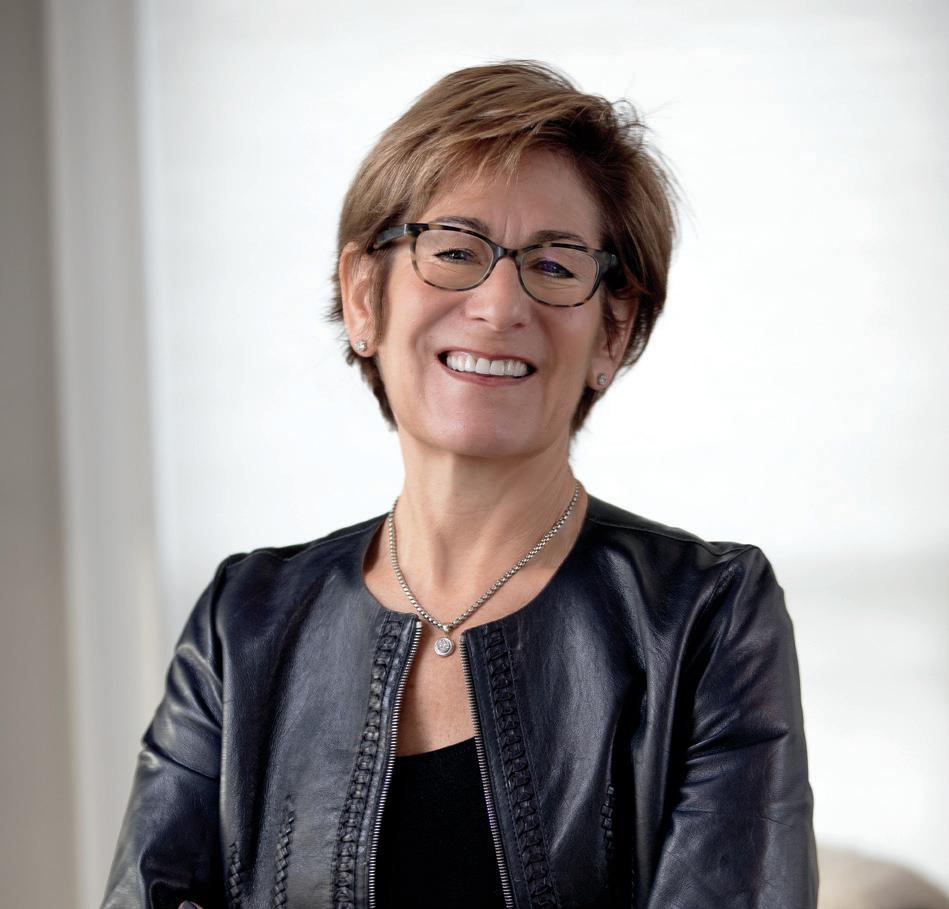
team headed by UMS Chancellor Dannel Malloy, University of Maine President Joan Ferrini-Mundy, and UMS Vice Chancellor for Strategic Initiatives and Chief Legal Officer James Thelen. UMS Transforms provides new opportunities for student support, faculty development, and innovative collaborative degree programs to advance Maine’s economy and workforce in partnership with the public and private sectors. From a University of Maine UMaine News online announcement, December 14, 2021.
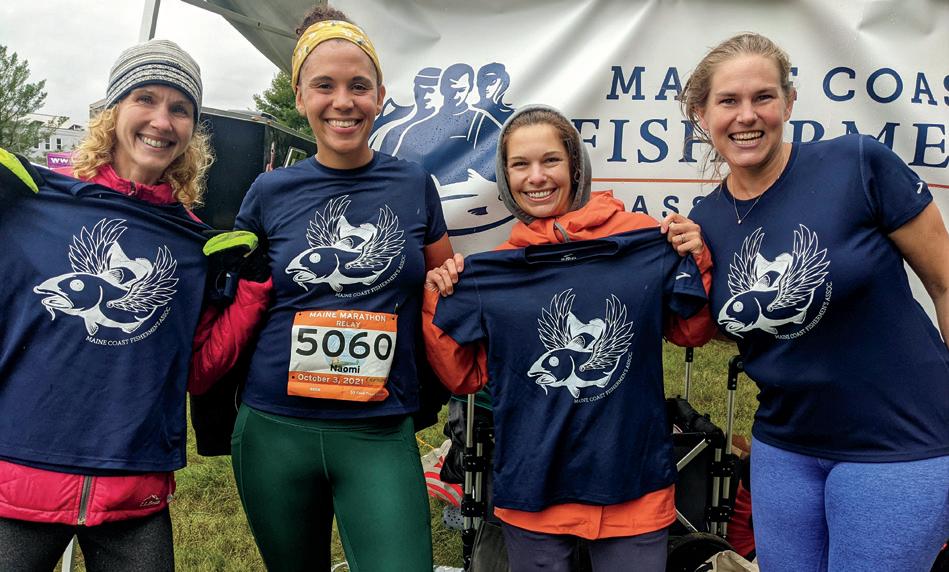
Brett Wickard, “founder and owner of Bull Moose—a mainstay in the state’s music retail world for over thirty years—announced in January that the company has been sold to its employees. Wickard says that when he decided to sell the business, he didn’t want the buyer to be someone who might not understand what Bull Moose is about. The Maine-based music and entertainment chain operates eleven locations across Maine and New Hampshire and has more than 140 employees. Chris Brown ’91, the company’s chief financial officer, has been with Bull Moose for roughly twenty-eight years altogether, and said that while the decision to sell to the employees was generous, they’ve also earned it. He’s looking forward to getting together with his fellow owners and seeing what ideas and dreams everyone has for the store.” From a Portland Press Herald article, January 4, 2022.
“is a cofounder of Freestyle Partners, LLC, a Detroitbased IP accelerator that has multiple US and global patents and patents pending in the UV-C and Filtered Far UV-C space.” In June, the company “received rapid


allowance of five patents from the US and foreign patent offices covering portable, handheld uses of filtered Far UV-C light to eradicate pathogens on commonly touched surfaces in seconds. Earlier Freestyle patents awarded since the beginning of 2021 include illuminating the surface area where pathogens are targeted for inactivation, with visible light as well as with filtered Far UV-C light. Columbia University has received research funding from Freestyle Partners, LLC, to continue studying the safety and efficacy of Far UV-C technology.” From a PR Newswire article, June 9, 2021.
“Boston law firm Sherin and Lodgen has named Sara Shanahan as its first-ever female managing partner. She was elected by unanimous vote and is the second Bowdoin alum to serve as managing partner of the firm, succeeding attorney Douglas M. Henry ’80. In this new role, Sara will oversee day-to-day firm operations, including nearly fifty lawyers specializing in real estate, litigation, business law, and employment. She will also direct client, recruiting, and community initiatives, while continuing to represent clients in a broad range of complex commercial litigation matters. Shanahan joined Sherin in 2008 as a litigation partner and has served as chair of the firm’s litigation department since 2015. Her practice focuses on complex business litigation and insurance coverage disputes. She represents a diverse range of clients, including investment managers, property owners, national retailers, insurers, insureds, and shareholders of closely held corporations. Prior to joining Sherin, Shanahan was a partner at Griesinger, Tighe, & Maffei LLP and junior partner at
All you need to do is some simple homework to score an A. Bowdoin’s Office of Gift Planning has you covered with a number of helpful resources. Visit bowdo.in/gp-resources to view our estate planning webinar and learn why everyone should have a comprehensive plan.
If you would like to consider arrangements that include Bowdoin in your plans, contact Nancy Milam or Liz Armstrong at 207-725-3172. If you make or have made a provision for the College in your estate, please let us know at bowdo.in/document-it

Hale and Dorr LLP. She is a graduate of Harvard Law School and clerked for the Honorable Nathaniel M. Gorton, US District Judge for the District of Massachusetts.” From a Sherin and Lodgen press release, November 3, 2021.
Karen McCann McClelland, “the director of auxiliary programs at Sidwell Friends School in Washington, DC, has been awarded the inaugural Summer Programs and Auxiliary Revenue Collaborative (SPARC) Excellence in Auxiliary Award. The presentation was made at the national conference in Scottsdale, Arizona, on October 21, 2021.
SPARC recognizes individuals and organizations for their exemplary work and outstanding contributions to the field of independent school auxiliary programs. McClelland is a recognized leader in the field, known for both the creative and successful programs that she’s developed and also for her cultivation of exceptional talent on her team at Sidwell. With over twenty-five years of experience in creating profitable and missiondriven auxiliary programs, she is recognized among her peers as running one of the largest and most successful independent school summer programs. Sidwell Summer serves 3,300 students in thirteen different programs employing more than 250 seasonal staff members.” From a SPARC online news article, November 6, 2021.
Kathy Martin Stillo “recently joined Carallel, an early-stage company focused on supporting the fifty-three million unpaid caregivers who preserve dignity and enable lower-cost care for millions of very
vulnerable patients nationwide. As chief clinical innovation officer, Kathy leads the design and execution of health and social care programs to support friend and family caregivers. By caring for the caregiver alongside the patient, Carallel helps families develop resilience and stability during what are often the most bewildering and expensive health care experiences. Kathy has long been on a mission to blend health care delivery with social care for better care at lower cost. She spent over ten years leading complex care teams at the intersection of medical and social care. She has served in cofounder, chief operating officer, and vice president roles within large-payer and provider innovation teams, including at UnitedHealthcare, Cooper Hospital in Camden, New Jersey, and the New Jersey COVID Recovery Hotel. Her work blends a deep understanding of care delivery, social determinants of health, and data-driven patient segmentation. Her approach includes a care philosophy that is trauma-informed and oriented toward supporting patients and their caregivers on their health care journeys. Kathy is a member of Princeton, New Jersey’s Board of Health and serves on the Camden Coalition’s National Advisory board. She earned her MBA from Columbia Business School.” From a Carallel press release, December 22, 2021.
Karin Stawarky:
“I am excited to share that Dr. Susan Ashford has featured me and my approach to executive coaching in her book that launched [in October], The Art of Flexing. Sue is the chair of the management and organization department at the Ross School of Business at the University of Michigan. It has been a privilege to collaborate with her.”
Maureen Cohen has been unanimously selected as the permanent leader of the MendonUpton (Massachusetts) Regional School District, after serving as the district’s interim superintendent since August. Cohen, who has worked in education for more than twenty years, had served as the district’s assistant superintendent since October 2017. Before that, she was the district’s director of curriculum. She previously served as a Grafton school committee member from 2015 to 2019, where she currently lives, and she was a history teacher at Framingham High from 2000–2005. She earned graduate degrees from Northeastern University in government and international relations, followed by a doctorate in educational leadership. From a Milford Daily News story, January 20, 2022.
Andrew Lay “has been hired as the new principal for Sizer School, a free public charter school located in Fitchburg, Massachusetts. The school serves students in grades seven through twelve from twentyfive local towns and cities and incorporates the Essential School philosophies with project-based learning to provide a studentcentered education. Lay has been in education for twenty-five years, teaching a diverse portfolio of courses and grade levels. He has also served as an instructional leader, curriculum director, and building-level principal at other New England charter schools.” From a Fitchburg, Massachusetts, Sentinel & Enterprise article, January 5, 2022.
David Morales “was recently named to the board of trustees
for Cristo Rey Boston, a school in Dorchester that exclusively serves under-resourced families in Greater Boston. David is currently the general manager of UniCare, a health benefits company headquartered in Andover, Massachusetts, and has seen great success during his career in the government, corporate, and not-for-profit sectors. He previously founded his own consulting company and enjoyed a career in public service, serving as a commissioner of health care finance as well as a senior official for two governors, a Massachusetts Senate president, and a Speaker of the Massachusetts House of Representatives. With his wife, Samanda, Morales cofounded Ahora Inc., a not-for-profit dedicated to empowering working-class families and low-income individuals— especially Latinos—to build selfreliance through personal financial management and wealth-building. Growing up in Puerto Rico, David [has a story that] is one of grit, integrity, and gratitude. He sees joining the Cristo Rey board of trustees as an opportunity to give back to students who are in a similar position as he was over thirty years ago.” From a Cristo Rey High School press release, December 1, 2021.
Christa Jefferis Gieszl “earned one of three seats on the board of education in Aspen, Colorado, in the November 2021 election. Giesz l was serving as the cochair of the district accountability committee prior to the vote. All six candidates in this year’s race agreed on the fundamental premise that the focus of the school board should be on what is best for kids in the district, with mental health and pandemic learning both top-of-mind issues at a mid-October candidate forum.

I PLAYED ICE HOCKEY AT BOWDOIN AND LEARNED THE OBVIOUS THINGS THAT COME WITH PLAYING SPORTS—HARD WORK, TEAMWORK, LEADERSHIP. The first step in motivating teams is to hire teammates who are highly capable and who stand for the values you want to foster. Two of my highest-priority values are energy-giving and resiliency. Then it’s the role of the manager to bring out the best in their teammates. Managers have to teach, coach, and inspire. The best coaches have a high level of emotional intelligence. We must be humble and be active learners. Coaching is a privilege. PLAYING A SPORT WHILE WORKING ON AN ECONOMICS AND MATH DEGREE ALSO TAUGHT ME HOW TO BE PRODUCTIVE AND EFFICIENT. With an intense schedule, I learned how to sit down, focus, and get the work done. This skill has proven to be very helpful in my adult life. I have a career that is engaging and fulfilling, but also a schedule that enables me to work out most mornings and be present and engaged with my family.
For more of our interview with Amy, visit bowdoin.edu/magazine.
the world.
TRAVELING MAKES ME FEEL MOST ALIVE. The excitement and anticipation of a new destination gets my blood pumping and really motivates me to work as hard as I do. The world is so vast. I feel most connected to it and its people when I get to explore and experience it. I also regularly take hikes on one of the dozens of nature trails near my home in Atlanta. It is a year-round activity that my husband and I started during quarantine to encourage Lincoln, our three-year-old, to release his energy. It is now an integral part of our week and is almost a daily practice.
I AM, HANDS DOWN, MOST PROUD OF LINCOLN. He challenges me every day to be a better person and to work to leave the world a better place for him.
I HOPE TO TAKE UP BIRD WATCHING. I have purchased a nature trail guide for Lincoln so that we can expand our knowledge of Georgia’s natural habitat together. Taking up this hobby with him makes it my favorite—it’s intimate, new, and a cool way to engage with the natural world.
For more of our interview with Sherrone, visit bowdoin.edu/magazine.

Gieszl, for her part, said that she appreciated what she considered a ‘well-run, fun campaign’ in which all the candidates showed respect and kindness for one another, especially against the backdrop of more contentious board races in the national spotlight.” From an Aspen Times online news story, November 2, 2021.
received the 2021 Ohtlí Award at the Consulate of Mexico on November 12, 2021. The Ohtlí is presented by the Mexican government through the Institute of Mexicans Abroad to those individuals who devoted their work to the advancement of the Mexican community. Arámbula, who represents the thirty-first assembly district, which includes southern and western Fresno County, talked about the injustices he saw firsthand as an emergency room doctor in Selma and how those experiences shaped his work at the state level for the community he now represents. His efforts have been focused on the empowerment of the Mexican community in the Central Valley of California, including promoting access to health services during the COVID-19 pandemic. From a Fresno Bee online news article, November 18, 2021.
Rachel Niemer, director of outreach and access in the Center for Academic Innovation at the University of Michigan, has been appointed the school’s new managing director of the Women in Science and Engineering (WISE) program. As managing director, Niemer will lead all the activities, programming, and strategic planning. WISE works to increase the participation by women and gender minorities in academic programs and careers in science, technology, engineering, and mathematics,
and to foster their future success. WISE started at Michigan as one of the first university programs in the world for women in science, technology, engineering, and math. Niemer joined the university in 2011 as assistant director with the Center for Research on Learning and Teaching. While there, she led programs designed to support the work of faculty, postdoctoral trainees, and graduate students in the classroom, with a focus on improving the student experience. In 2015, she joined the Center for Academic Innovation, where she had multiple positions of increasing leadership and responsibility. In her most recent role, she was the director of outreach and access, leading diversity, equity, and inclusion initiatives within the center, while also overseeing the public engagement team and its work exploring new ways to engage with faculty and public education institutions as thought partners. From a University of Michigan online news story, September 22, 2021.
Christopher “Kit” Hughes:
The College of the Holy Cross has hired Hughes as its new director of intercollegiate athletics. He heads to Worcester, Massachusetts, from Bowling Green State University in Ohio, where he had been serving as deputy athletic director. While at Bowling Green, Hughes helped lead day-to-day operations of the Falcons’ athletic department and was responsible for administration of its men’s basketball and football teams. He joined Bowling Green after seven years at North Carolina State University. Hughes takes over a Holy Cross athletics program with twenty-seven NCAA Division I teams as members of the
Patriot League, Atlantic Hockey Association, and the Women’s Hockey East Association. Holy Cross’s athletic teams are tied for first in the nation with an overall graduation rate of 99 percent, the second straight year in which the Crusaders have led the nation and the fifteenth consecutive year at 97 percent or higher. Hughes earned a master’s degree in higher education from Boston College in 2006. He was a four-year letterman in lacrosse at Bowdoin and led his team to the ECAC Championship in 2001. From a College of the Holy Cross press release, December 6, 2021.
“The US Department of Agriculture (USDA) announced that Arthur D. Middleton will serve as a senior advisor on wildlife conservation at USDA. Middleton is an assistant professor in the University of California–Berkeley’s department of environmental policy, science, and management, a role in which he will continue while serving with the USDA. Middleton will advise on how USDA programs can better support conservation of wildlife corridors and habitat. At Berkeley, his research focuses on how environmental change affects the behavioral, population, and community ecology of wildlife, work that is motivated by a global need for science and conservation solutions that promote both ecological integrity and human well-being. Much of this work has investigated big game like elk, mule deer, and pronghorn, and their interactions with predators in the working landscapes of the western US. Findings improve our understanding of big-game long-distance migrations and highlight the vital role privately owned working lands provide. Middleton holds a master’s in environmental management
from Yale and a PhD in ecology from the University of Wyoming.”
From a US Department of Agriculture press release, January 19, 2022.
A new film by Annie Kaempfer that chronicles the life of a master falconer is attracting attention across the country, including at the Twin Cities Film Fest, the Atlanta Film Festival, and the Environmental Film Festival. Described by Kaempfer as a “story of empowerment through nature,” the film follows master falconer Rodney Stotts, whose mission is to build an urban bird sanctuary with the help of underserved teenagers in Washington, DC. “This is a story of second chances: for injured birds of prey, for an abandoned plot of land, for a group of teenagers who have dropped out of high school, and for Rodney himself.” After recording Stotts for seven years, Kaempfer’s result was The Falconer, a movie that, according to her personal statement, “weaves Rodney’s present-day mission with the story of his past, both of which are deeply rooted in issues of social and environmental injustice, and consistently orients the viewer to his worldview: nature heals.” Since the film’s release, Kaempfer has been busy with film festival premieres and media attention. But she has also taken time to use The Falconer as an educational tool to address both environmental issues and the environmental racism that Stotts faces as a Black birder. Not only has The Falconer drawn attention to Stotts’s dynamic and emotional story, but the production of the film has also been personally gratifying for Kaempfer behind the scenes. From a bowdoin.edu/news story, December 15, 2021.
Kalyn Bickerman-Martens: “On October 3, 2021, Naomi Kordak, Susan Olcott ’99, Sarah Breul (Colby ’01), and I completed the Maine Marathon relay to raise money for the Fishermen Wellness program through Maine Coast Fishermen’s Association. Both Susan and Kalyn work for the organization and all funds raised will go toward promoting mental and physical health for Maine’s fishermen. Our team finished seventh out of twenty-seven teams in the all-female division.”
All Light, Everywhere, a documentary for which Jonna McKone was a producer, has been included in a host of year-end “best of 2021” lists, including those in Artforum, Esquire, The Hollywood Reporter, The New Yorker, and Screen Daily. The film, directed by Theo Anthony, is described as an exploration of the shared histories of cameras, weapons, policing, and justice, and looks at the complexities involved in examining inherent biases in human perception as surveillance technologies become a fixture in everyday life. From a bowdoin.edu/news story, December 23, 2021.
2008 Ingrid Anid: “I got a new job as head of trading at a health care fund. I am so excited! Very few women in the financial industry are in a head trader seat, so it’s a personal and professional milestone for me.”
2010 Alexandra Locke, a senior producer at Al Jazeera English, has won a 2021 Online Journalism Award (OJA) for audio storytelling with The Take, a news podcast
driven by Al Jazeera’s on-the-ground reporting from the global south. The award honored three episodes, including her May 2021 piece “In Sheikh Jarrah, Palestinians confront a city’s future.” The full roster of winners was announced online and during an annual conference hosted by the OJA parent group, the Online News Association, in Philadelphia on October 16, 2021. From an Al Jazeera Media Network online news story, October 18, 2021.
Carly Hess Quill and Graham Quill ’08 “welcomed their second child, Rhodes, into the world on August 15, 2021. He joins their three-year-old daughter, Livia, and their nine-year-old dog, Boone.”
Reunion
Sadie Nott: “After eloping in 2020 with two innkeepers as our sole witnesses, David and I were over the moon to finally celebrate with family and friends in 2021!”
2013 Johanna Bernard “was selected as one of nine doctoral students to participate in the inaugural year of the predoctoral training program in interdisciplinary methods for field-based research in education at the University of Pennsylvania Graduate School of Education. The program’s goal is to strengthen scholars’ preparation to become leaders in the education research workforce. This year’s fellows, selected from across Penn, will participate in an interdisciplinary core curriculum, conduct research with faculty and industry mentors, and apprentice with an education agency focused on questions of policy and practice. Bernard’s research interests include language and literacy, global and
A core goal of the campaign is for 85 percent of alumni to engage with the College. This can be accomplished by registering for an event—in person or online— volunteering, or making a gift.
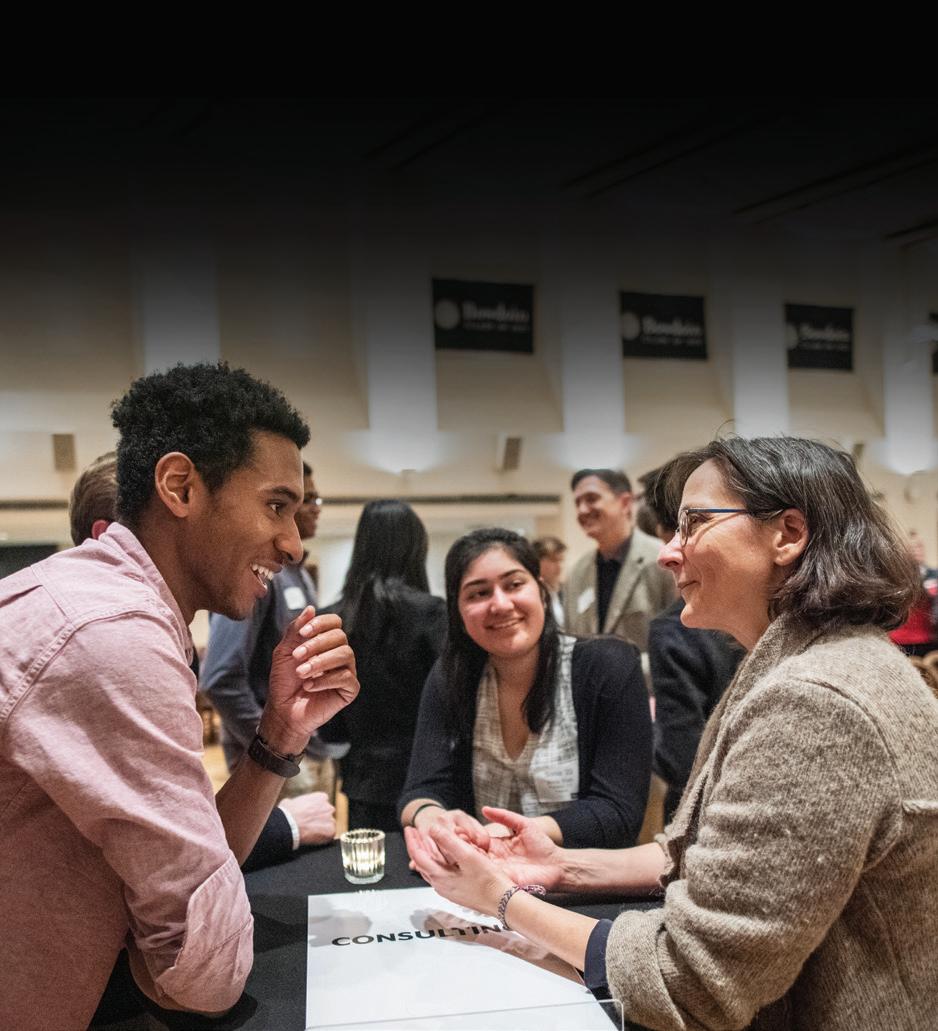
international education, school and society, quantitative research, and psychology and human development.” From a University of Pennsylvania online Almanac announcement, November 9, 2021.


Noah Pyles: “Two years ago, I took an entrepreneurial leave of absence from medical school at the University of Pittsburgh to found Polycarbin, a company that tackles the single-use plastic crisis. Since then, my cofounder and I have raised a $2M seed round, engineered the first and only line of circular economy laboratory products, scaled our operations from the Bay Area to New England, and are now partnering with major distributors to get our products into market. The education and support I received at Bowdoin empowered me to get into medical school and gave me the confidence to start my own company.”
Jessie Kohn Takata: “Alex [Takata ’12] and I were married via a tiny elopement ceremony on November 28, 2021, in Brooklyn Bridge Park! This was an exciting cap to what’s turned out to be a very eventful fall 2021: We’ve also moved back to Brooklyn (where we first lived after graduating from Bowdoin), and I successfully defended my PhD in neuroscience from Columbia University in October.”
says that when she goes hiking, she perks up when she sees a piece of trash. She knows she shouldn’t, she says, but every discarded item of litter is a potential work of art. Since graduating, Reading has focused on repurposing items of trash into objects of art. Combining her art with a love of the outdoors, she has visited nearly thirty national parks over the past four years, gathering more than a hundred pieces of trash while hiking, paddling, or climbing, and painting landscapes on them. “It’s like breathing new life into forgotten objects,” she said. A trained landscape painter, Reading has made a specialty of painting a segment of a scene on a piece of litter—it could be anything from a rusty hubcap to a discarded bra pad—and then returning to the place and taking a photograph blending in her artwork with the natural environment. Her love of trash notwithstanding, Reading is a committed environmentalist, albeit an imperfect one, she admits, and she hopes her work will serve as a reminder that humans must continue to strive to be more sustainable. “I would love people to see my work and make small changes in their everyday lives so we can leave this place better than we found it.” From a bowdoin.edu/news story, December 15, 2021.
Learn more about how your efforts impact Bowdoin by scanning this code, or visit bowdo.in/engage

bowdoin.edu/fromhere
“Tricia Thibodeau and Josh Beaudoin (University of Southern Maine ’10) were married on July 24, 2021, in Phippsburg, Maine. Tricia is taking the surname Beaudoin because it is pronounced the same way as her amazing alma mater!”
2016 Mariah Reading was profiled in the December 19, 2021, issue of People magazine in a piece that featured an interview and several examples of her art. In the article, Reading
Tom Tyree “has been named to the Forbes ‘30 Under 30’ list for 2022 in the energy category. Tyree is director of finance at Stronghold Digital Mining, which is working to make money by cleaning up Pennsylvania’s biggest environmental disaster and turning it into bitcoin. Since joining Stronghold shortly after its formation in early 2021, Tyree has helped the company navigate its IPO process.” From the Forbes annual 30 Under 30 list, December 1, 2021.



2019Darius Riley is featured in PBS’s Roadtrip Nation, a collection of documentary series and film specials that explore what it means to build a career and a life around the things you love. The episode, “Do It Differently,” asks Riley—who is currently pursuing a career in photography—and two others, “Should you follow the script handed to you, or seek out success off the beaten path?” Viewers then follow along as they each discover how to carve out a unique path for themselves. They’ll meet people who’ve paved inspiring paths before them to see that everyone learns and succeeds differently, but you have so many ways forward. From the PBS.com programming page.
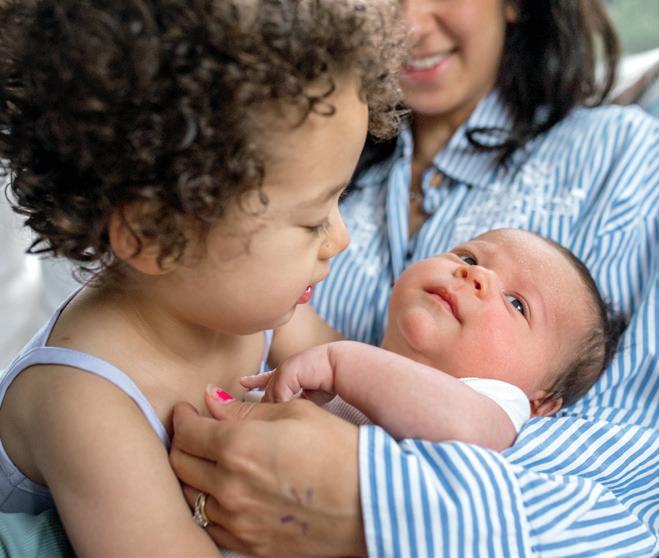

Last year, Jacob Baskes was called on by his former professor Carolyn Wolfenzon to help set up an online fundraiser for poor and exploited people in the community of Iquitos, Peru. Wolfenzon was working on a scholarly paper about literary and cinematic representations of Iquitos for a new academic publication and was struck by how severely the area was impacted by the ravages of COVID—the city, a metropolis of approximately half a million people, is accessible only by plane or boat and is one of the most remote cities in the world. She and Baskes set a goal to raise enough money to buy several portable and relatively simple oxygen machines to be used in patients’ homes without intubation. Baskes set up a six-week GoFundMe page, and the two started to spread the word through social media. In the end they raised about $8,000 from more than 100 people to
buy five reliable oxygen tanks. Together, they figured out the logistics of getting the machines to a clinic in Iquitos with the help of a connection Wolfenzon has in the city. Two months after the fundraiser, Baskes started a new job in public health, as a junior associate for the international consulting organization Global Health Strategies, based in New York City. It serves foundations and companies pursuing global health initiatives or investments around the world, including the World Health Organization and the Gates Foundation. Baskes says he uses his Spanish and French language skills frequently in his position. At Bowdoin, Baskes majored in physics and Romance languages, and said he’s drawn to public health for its humanitarian focus. “You can’t talk about global health or public health without also discussing and addressing inequality as well,” he said. From a bowdoin.edu/news story, January 14, 2022.
Kevin Chi is a research assistant at the International Vaccine Institute (IVI), a nonprofit in Seoul, South Korea, that fights infectious diseases in developing countries. He started as an intern with IVI, working on CAPTURA, a project that captures data on antimicrobial resistance trends in twelve Asian and South Asian countries. The work is important for the development of effective prescription guidelines and highlights the importance of vaccines. In his new role, Chi continues to work on CAPTURA and other projects, such as clinical studies exploring ways to expand access to COVID-19 vaccines in Africa. From a bowdoin.edu/news story, February 2, 2022.




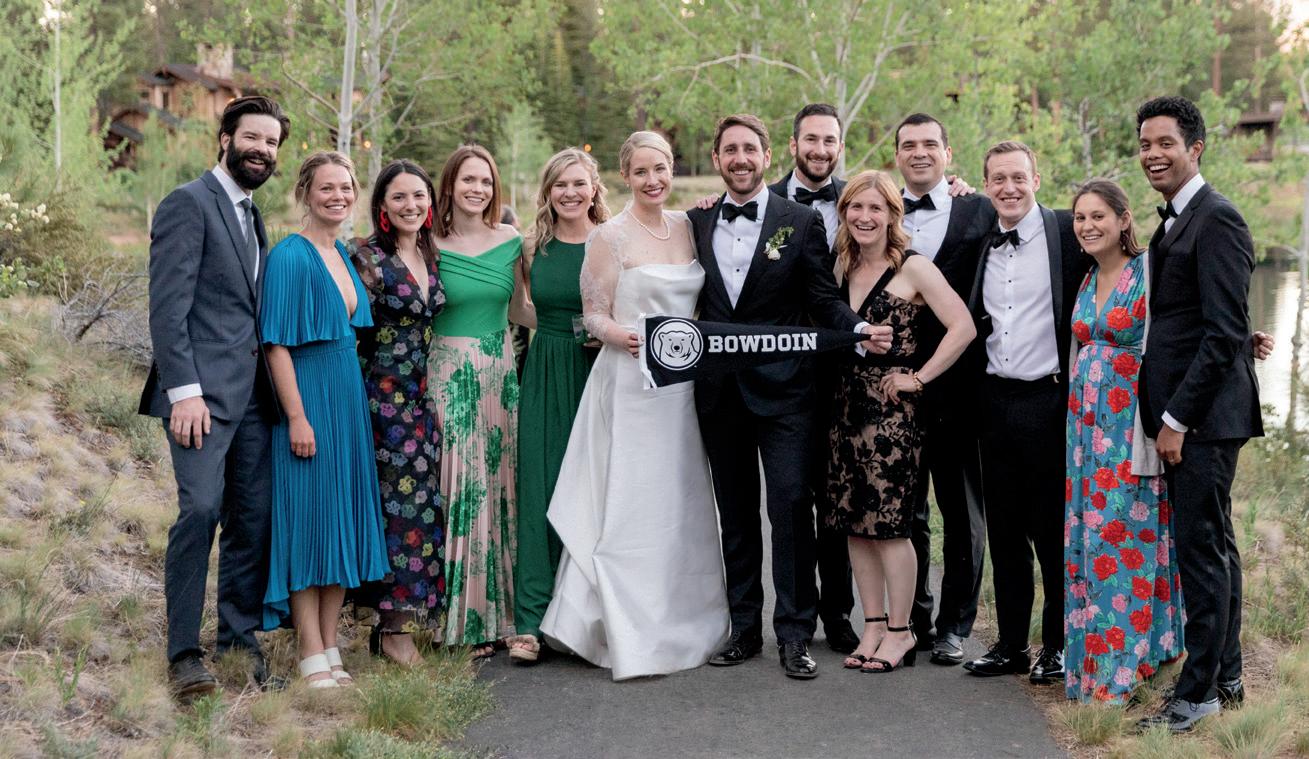
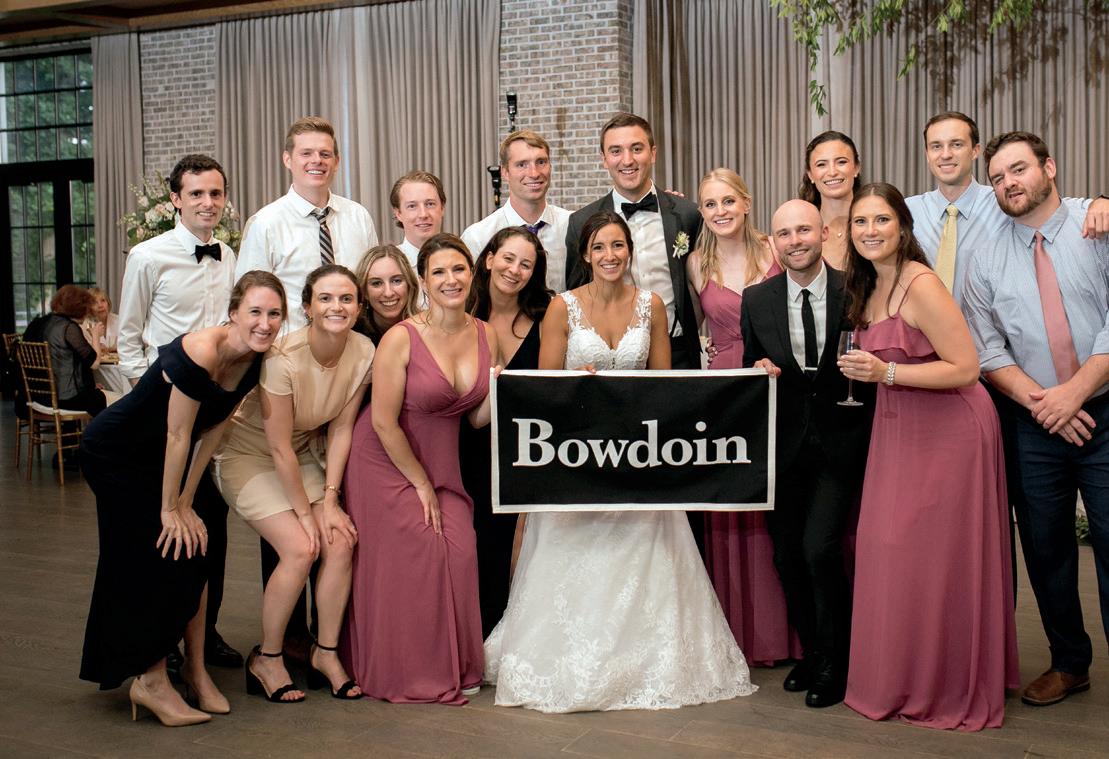

1. Tricia Thibodeau ’13 and Josh Beaudoin (University of Southern Maine ’10) were married on July 24, 2021, in Phippsburg, Maine. Pictured: Chelsea Gross ’13, Heidi Harrison ’13, Schuyler Nardelli ’15, Jessie Turner ’13, Roland Beaudoin ’71 (father of the groom), Tricia, Kaity Sansone ’13, Madison Whitley ’13, Melody Hahm ’13, and Melissa DellaTorre ’14. Not pictured: Lyne Lucien ’13 and George Eaton ’81.
2. Taylor Guiffre ’14 and Vince Voiro (University of Pennsylvania ’12) were married on November 7, 2020, and celebrated with family and friends on July 30, 2021, at the Mansion at Natirar in New Jersey. Pictured: Emily Quirk ’14, Marc Reid, Fiona Stavrou ’14, Nick Bellamy, Amanda Howard ’15, Aubrey Zott ’14, Trey Linke ’15, Caitlin Hutchinson-Maddox ’14, Linc Rhodes ’14, Taylor and Vince, Elizabeth Owens ’14, Jordan Lantz ’15, Gabby Lubin ’14, Mike Lachance ’13, Elise Sanchez ’14, and Andrew Dagres.

3. Alicia Sorensen-Biggs ’11 and Nathan Jalbert (Wentworth Institute of Technology ’06) were married on July 6, 2021, at Fort Allen in Portland, Maine. Pictured: Leah Navarro Powers ’11, Nathan and Alicia, and Israel Deku.
4. Charles Warren ’10 and Anne Kauth (Bryn Mawr ’11) were married on September 19, 2020, in Sonoma, California, with a celebration of marriage and reception on June 5, 2021, at Martis Camp near Lake Tahoe, California. Pictured: Matthew Bowers ’10, Kersten Vasey,


Lia Grigg, Abigail Goodridge ’11, Whitney Rauschenbach ’06, Anne and Charlie, Daniel Levis ’10, Ginger Jackson-Gleich, Michael Schember ’10, Michael Eldridge ’10, Ashley Fischer Mabry ’09, and Jon Mabry.
5. Alex Takata ’12 and Jessica Kohn ’13 were married in a tiny elopement ceremony on November 28, 2021, in Brooklyn Bridge Park. They were grateful to share the moment with their parents and are excited about the future. Pictured: Alex and Jessie.

6. Peter Murphy ’12 and Jeffrey Kaiser (Yale ’12) were married on September 25, 2021, in Acton, Massachusetts. Pictured: Nathan Merritt ’11, Asher Stamell ’13, Ellen Rogoz ’12, Olivia Orr ’12, Justin Foster ’11, Kathryn Savasuk ’11, Annabel Boeke ’12, Katherine Stewart ’12, Claire Ellwanger ’12, Michele Cyr ’76, Tom Marcello ’12, Jeff and Pete, Molly Taft ’11, Peter Rosiello ’15, Danae Hirsch ’14, Bruce Murphy ’71, Kevin Miao ’14, Fhiwa Ndou ’13, Michael Hendrickson ’13, and Clare Murphy ’20.
7. Sadie Nott ’12 and David Ecklund (University of California, Berkeley ’06) were married on October 2, 2021, in Durham, North Carolina. The couple had eloped in 2020 and were “over the moon” to celebrate with family and friends in 2021. Pictured: Phoebe Aron ’13, Maggie Williams ’12, Jack Hilzinger ’12, Ellen Rogoz ’12, Craig Hardt ’12, Emma Pyle Hardt ’12, Sadie and David, Nick Riker ’12, Liz Leon ’12, Rachel Herter ’12, Ian Brandon ’12, and Leah Wang ’12.
8. Dania Feleo ’18 (formerly Nicole Feleo) and Richmond, Maine, native Jared Bowie were married at St. Charles in Brunswick on September 4, 2021, with immediate family in attendance. They were joined on September 18, 2021, by a small group of Bowdoin friends to celebrate the wedding outdoors at their home on the Kennebec River.
Pictured: Audrey Leland ’18, Bettina Mariano ’18, Katherine Kirk ’18, Conor Walsh ’18, Jared and Dania, David Reichert ’18, Robert Browne ’18, Alex Vasile ’16, Ziang Zhou ’18, and Miriam Fraga ’18.
9. Adrienne O’Donnell ’15 and John Lefeber ’14 were married in September 2020 and celebrated in October 2021 in Kennebunkport, Maine. Pictured: Jesse Laughlin ’14, Jesse Abels ’14, Tim Welch ’12, Danny Greene ’14, Ujal Santchurn ’15, Andrew Ward ’15, Sarah Freeman ’15, Doug Caplan ’15, Andrew Madlinger ’14, Nick Lenker ’13, John and Adrienne, Max Staiger ’13, Alan Baker ’51, Sam Herzig ’14, Natalie Kass-Kaufman ’15, Dana White ’15, Elizabeth Carew ’15, Caitlin Whalen ’15, Alison Considine ’15, Kate Witteman ’15, Cedric Charlier ’17, Molly Rose ’15, Jenna DiCicco ’15, Meaghan Dwan ’15, Clare McLaughlin ’15, and Elise Engquist ’15.
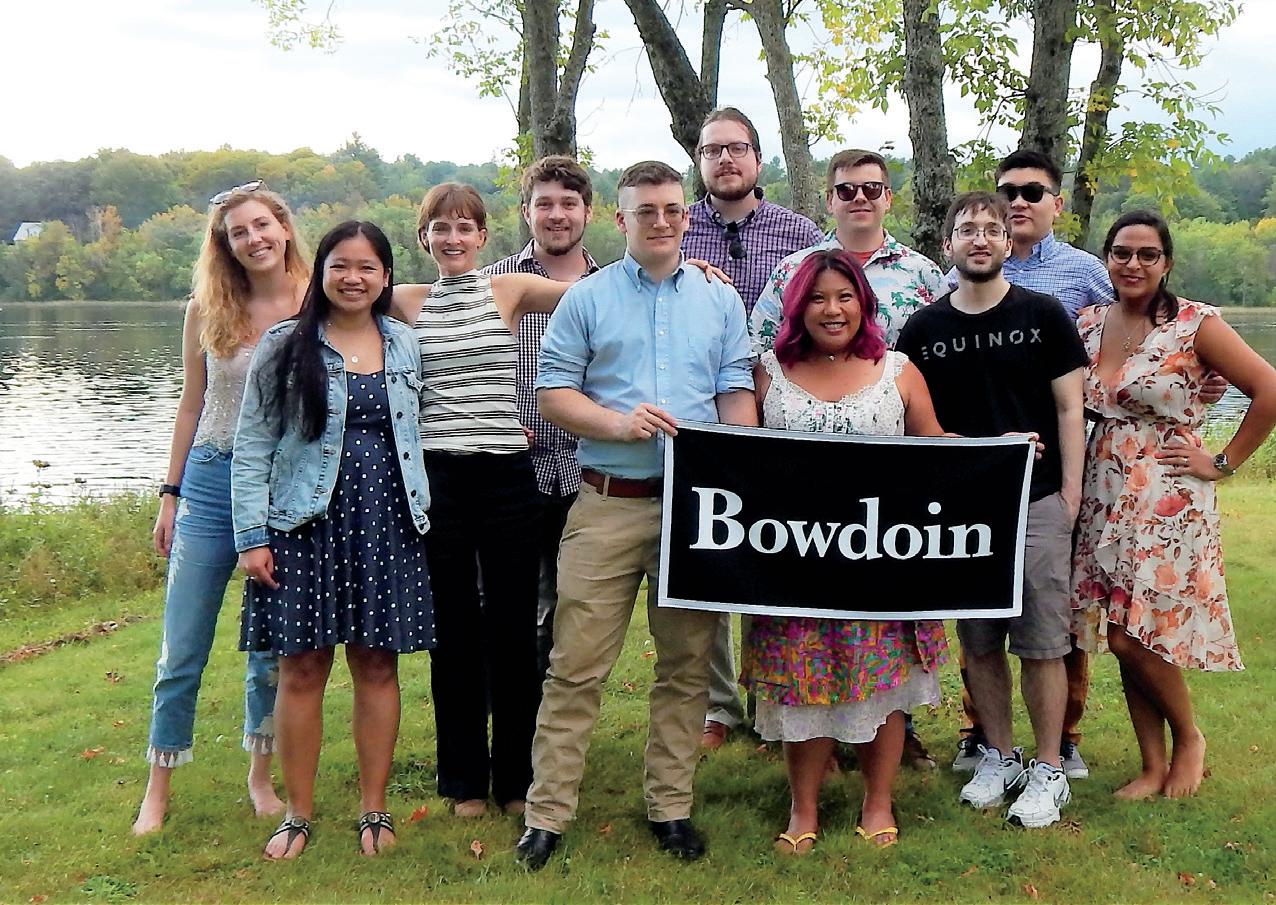
10. Jessica Ziehler ’11 and Nemanja Simic (Florida Atlantic University) were married on October 2, 2021, at the Black Point Inn in Scarborough, Maine. Pictured: Katie Blizzard Piskai ’11, Loretta Park ’11, Anna Byers ’11, Nemanja and Jessica, Samantha Siegel ’11, Meghan Gillis ’07, Jillian Campbell ’11, and Krista Bahm ’11.
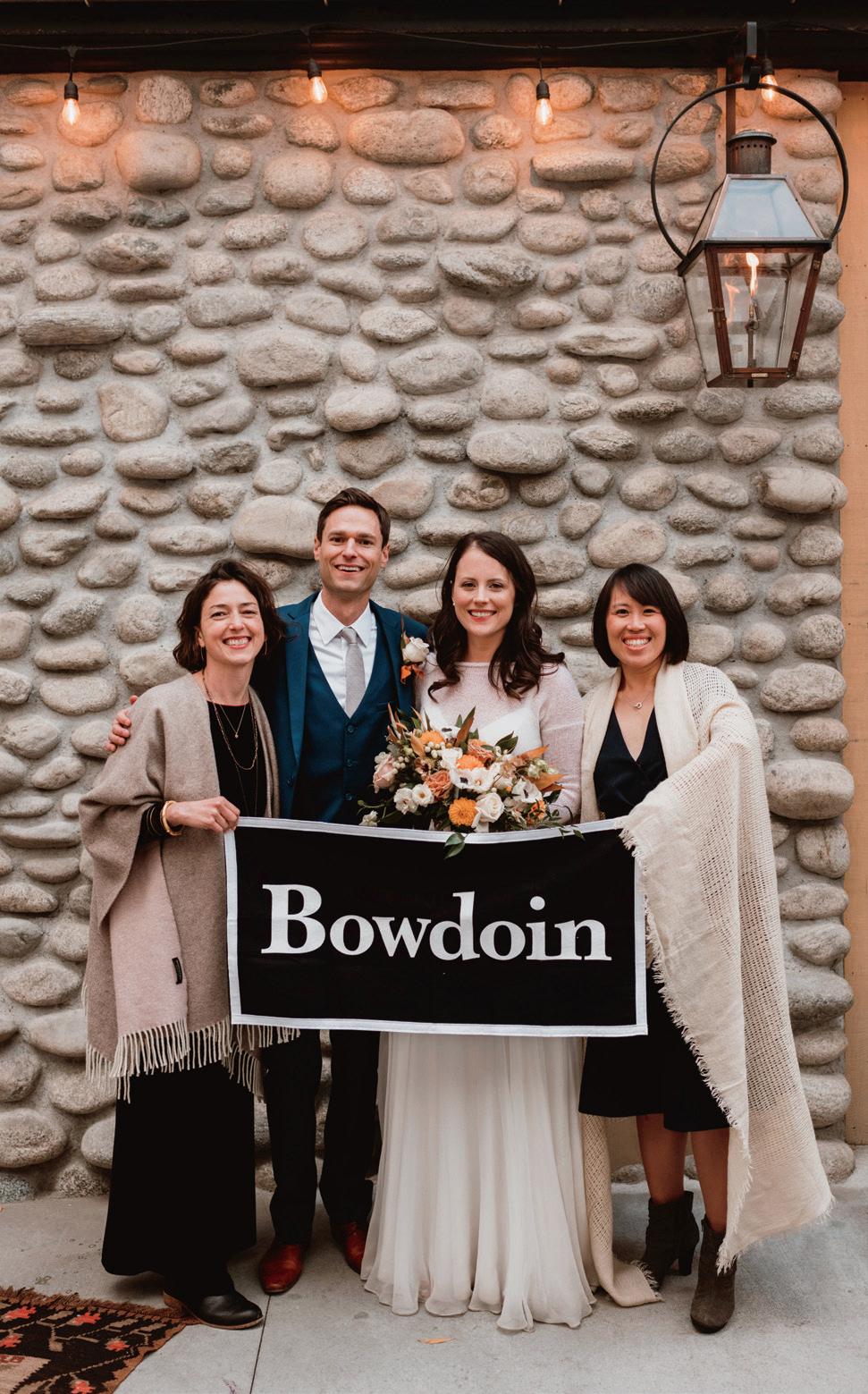
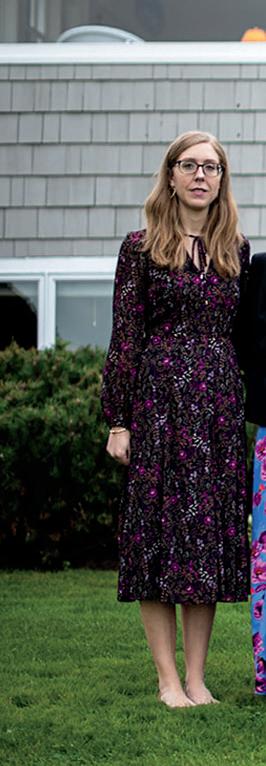
11. Helen Wen ’10 and Jason Zaler (Northeastern University ’07) were married on May 30, 2021, in Phoenix, Arizona. Pictured: Jason, Eleanor West ’10, Nick Stone ’10, Helen, Seth Glickman ’10, and Skye Lawrence ’10.
12. Kate Geraghty ’07 and Mike Dow (University of Colorado Boulder ’05) were married on October 23, 2021, in Buena Vista, Colorado.
Pictured: Nicole Melas ’07, Mike and Kate, and Alicia Wong ’07.
13. Damon Guterman ’89 and Kimberly Stasny were married on August 3, 2021, at the Cathedral of the Pines in Rindge, New Hampshire.

Pictured: David Fitzgerald ’89, Douglas Hoffer ’89, Kim and Damon, and David Shacter ’89.
14. Olivia MacKenzie ’13 and Sam Seekins ’14 were married on September 18, 2021, at the Black Point Inn in Scarborough, Maine.
Pictured: Helen White ’13, Charles Berdahl ’11, Sara Berdahl ’13, Daniel Palken ’14, Peyton Morss-Walton ’14, James Boeding ’14, Melissa Arliss ’13, Julia Livermore ’13, Chris Mahoney ’13, Sara Mahoney ’13, Stuart Sheehan ’13, Stan Berkow ’11, Marcus Schneider ’13, Katie Ross ’14, Nicholas Saba ’14, Melissa Wiley ’13, Holly Jacobson ’11, Kendall Carpenter ’15, Brian DeAngelo ’14, Greg Talpey ’14, Andrew del Calvo ’12, Reaha Goyetche ’14, Christina Berkow ’11, Anna Ackerman ’12, Madeline Lamo ’14, William Seekins ’71, Molly Porcher ’13, Coby Horowitz ’14, Brenna Fischer ’15, Hannah Levy ’12, Alexandra Brown ’13, and Olivia and Sam. Joining in spirit from afar were Hallie Carol ’14, Jessica Kohn Takata ’13, and Alex Takata ’12.

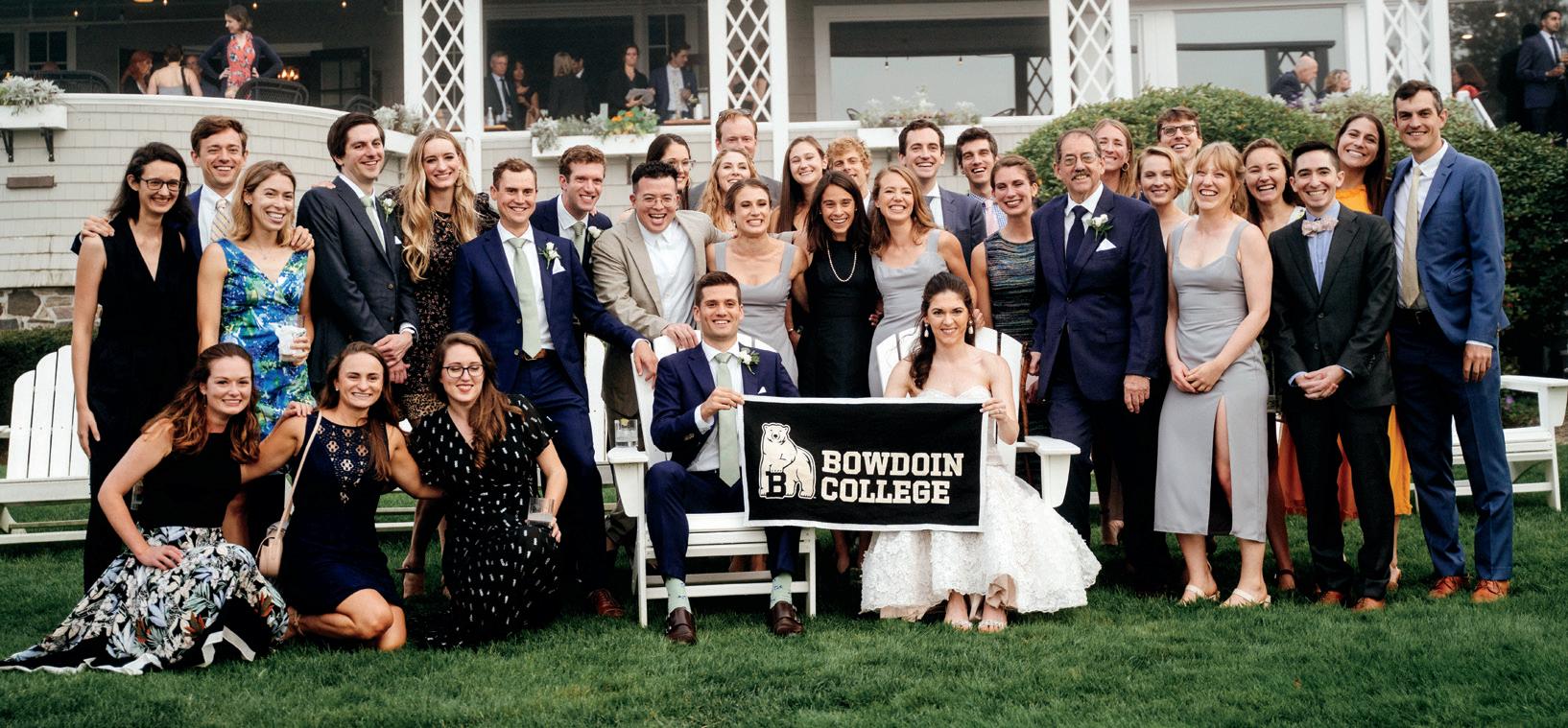




Launched in 2018, the New England College (NEC) Renewable Partnership is a first-of-its-kind collaboration among Amherst, Bowdoin, Hampshire, Smith, and Williams. Each of the colleges is purchasing zero-carbon electricity from the Farmington facility to reduce carbon emissions from campus electricity use. The colleges partnered with Portland-based energy advisor Competitive Energy Services (CES)—including CES president and COO Andy Price ’96 and vice president for analytics and operations Matt Gamache ’13— and NextEra Energy Resources on the project.
Since 2018, when Bowdoin achieved carbon neutrality, the College has signed agreements with various Maine solar photovoltaic (PV) facilities, including a second large solar array on College-owned property at Brunswick Landing, the former Naval Air Station in Brunswick. The first, developed in 2014 with Solar City, was at the time the state’s largest solar array and includes rooftop PV systems on Bowdoin’s major athletic facilities.
All projects contracted by Bowdoin are expected to be online and producing power by the end of 2023—covering 100 percent of current electric usage with Maine-based renewable energy. These efforts are laying the foundation for the College’s longerterm goal of electrifying the campus heating load and significantly reducing, if not eliminating, the use of fossil fuels on campus.
The 490-acre utility-scale solar facility will create enough electricity to power about 17,000 New England homes annually, making it one of the largest solar projects in New England to date.
In late 2021, the Association for the Advancement of Sustainability in Higher Education (AASHE) recognized Bowdoin as a top performer in the “air and climate” and “public engagement” categories and included the College among institutions having earned an overall gold rating in AASHE’s 2021 Sustainable Campus Index. AASHE developed its Sustainability, Tracking, and Assessment Rating System (STARS) as a transparent, self-reporting framework for colleges and universities to measure sustainability performance.
The NEC Renewable Partnership enables Bowdoin to deepen its commitment to renewable energy solutions. As part of the Farmington solar project, the College will purchase 5 percent of all renewable energy (in the form of renewable energy credits) generated by the 76.5 MW project—equivalent to 40 percent of Bowdoin’s current annual electric usage. It’s also helping each college manage costs by locking in the price of electricity for the next twenty years.
The Farmington project has had a significant impact on the local economy, creating approximately 500 temporary construction jobs and a capital expenditure of approximately $150 million. It is estimated to generate tax revenue of nearly $17 million over its thirty-year lifespan.
An innovative solar energy project undertaken by Bowdoin and four other New England liberal arts colleges has come online in Farmington, Maine.
The NEC Renewable Partnership is important for what it does and for what it represents. The solar facility creates new solar electricity in New England—not an easy accomplishment, given the area’s geography and terrain. The colleges collaborating on the Farmington solar project hope that it will inspire other institutions to work together and take advantage of shared efficiencies and economies of scale.

